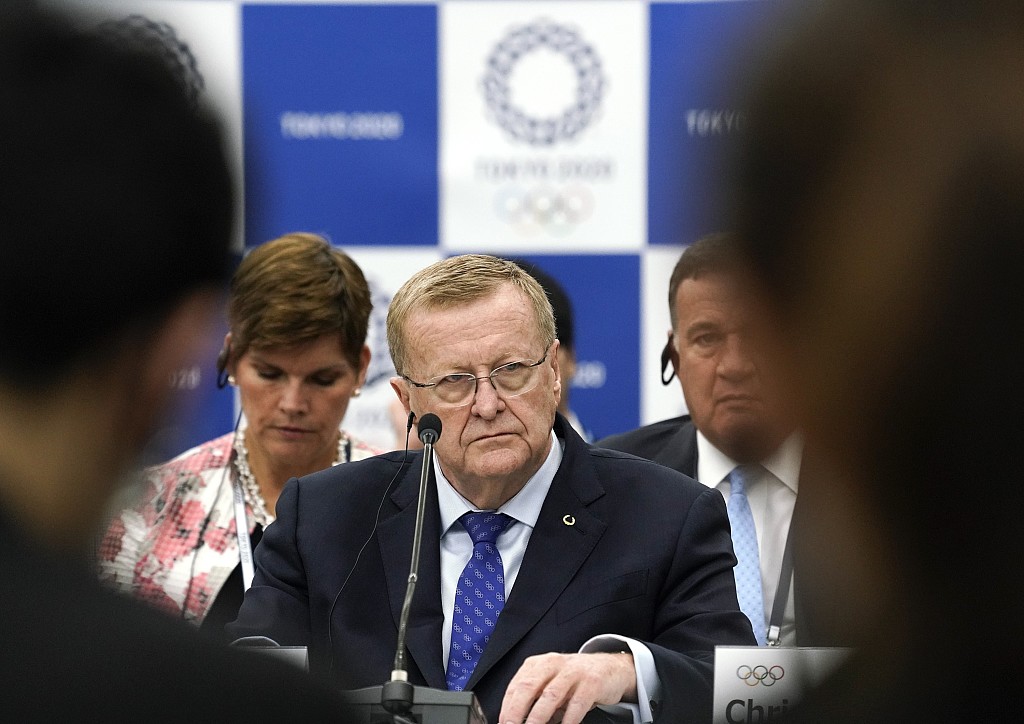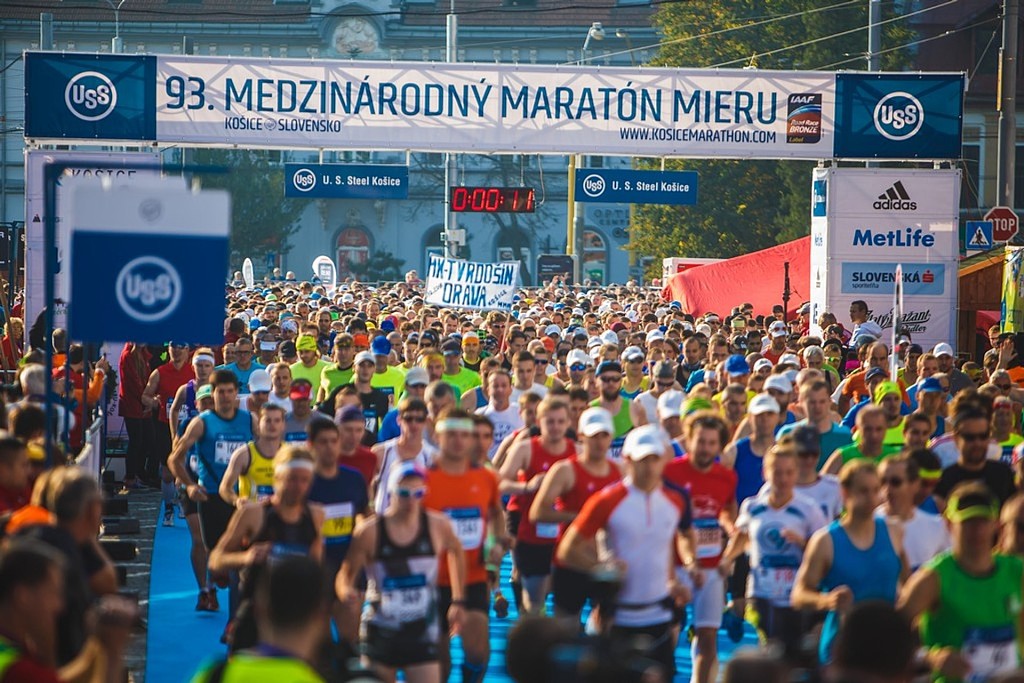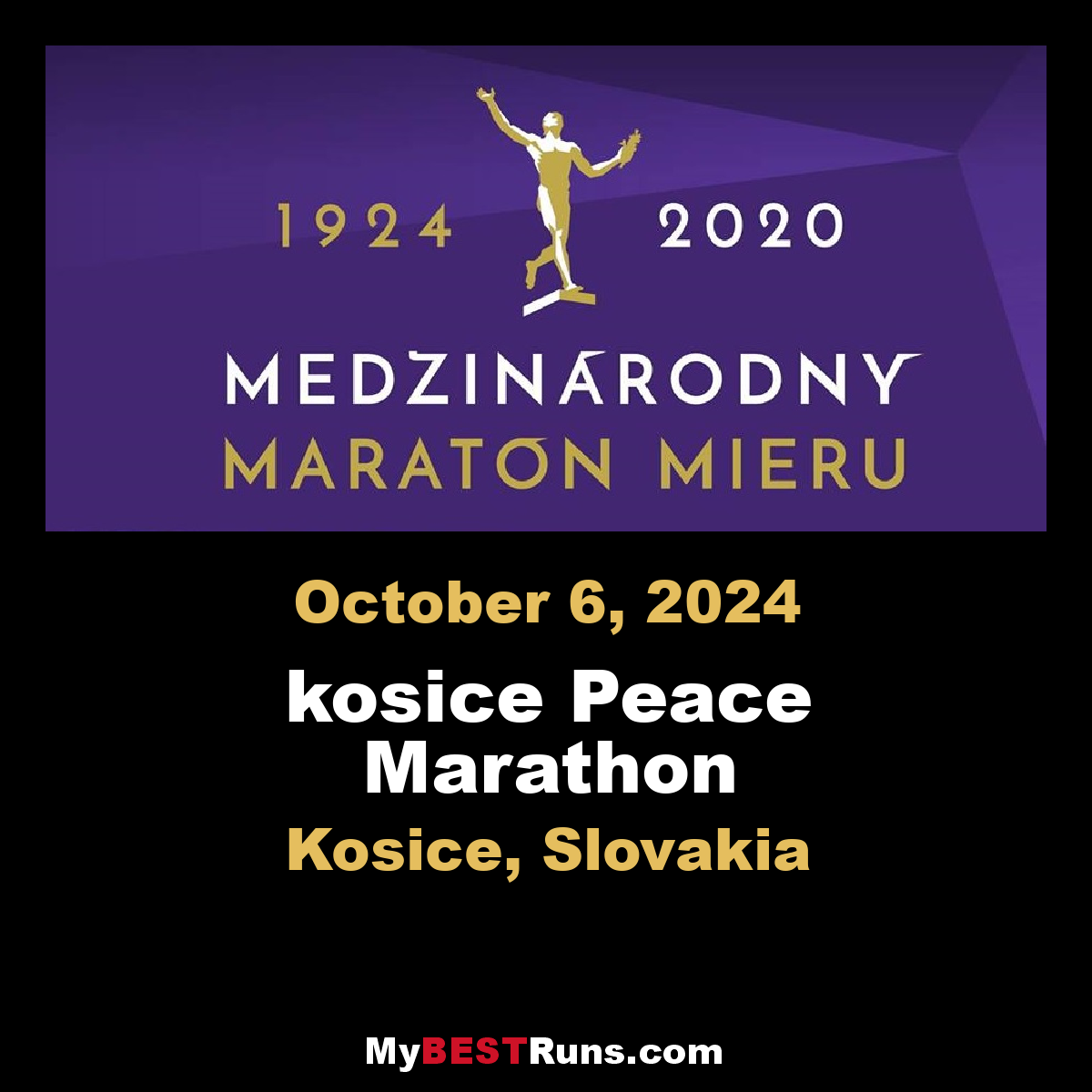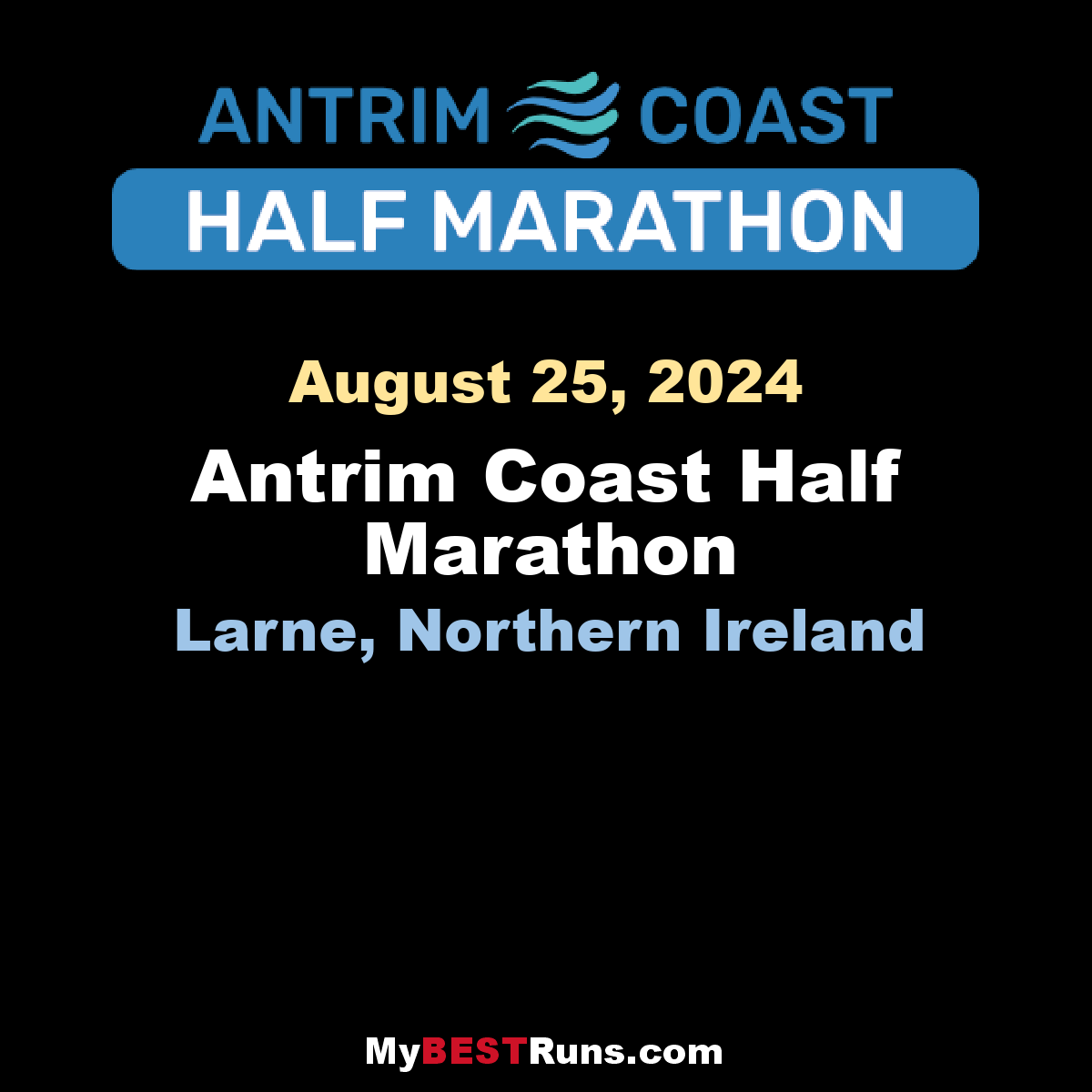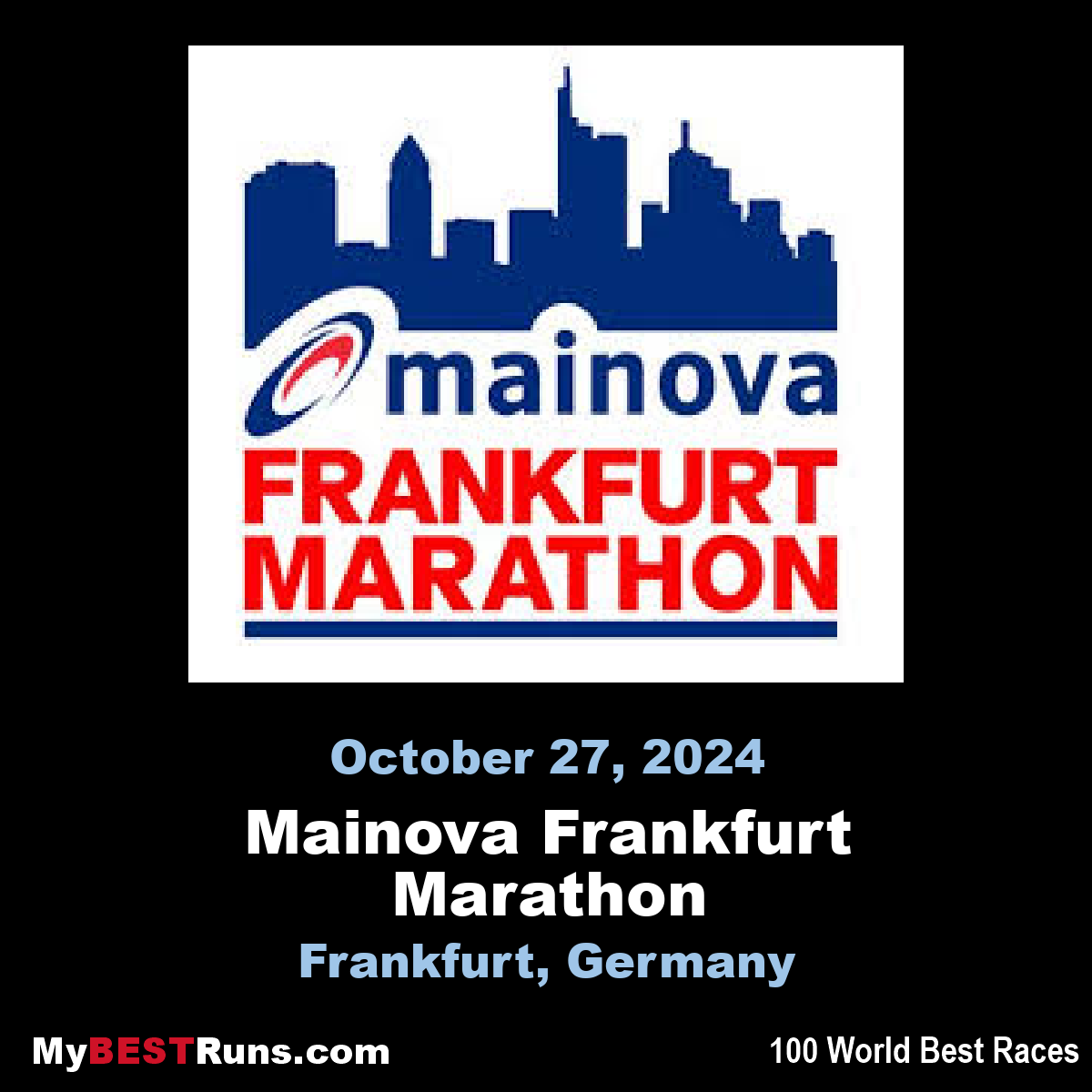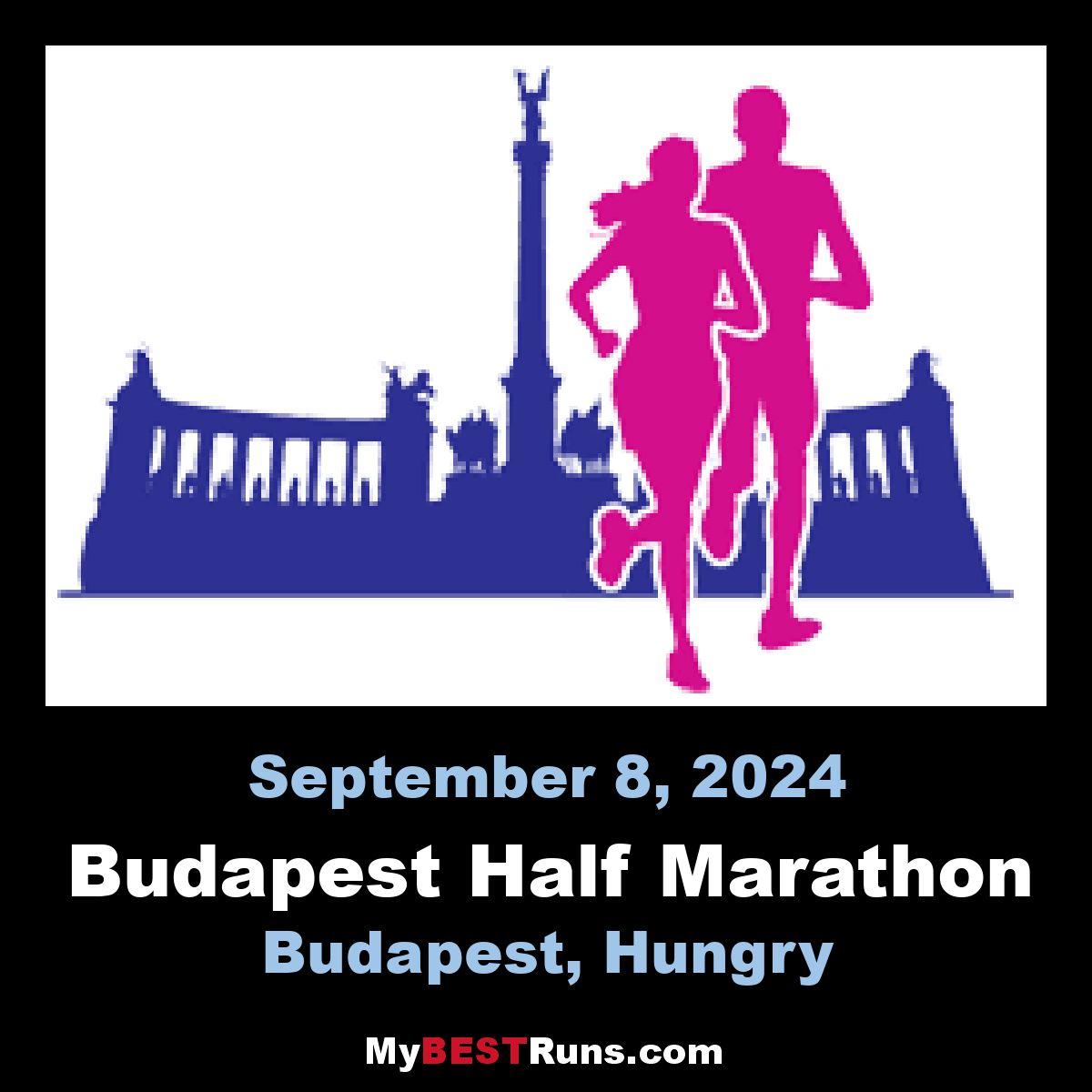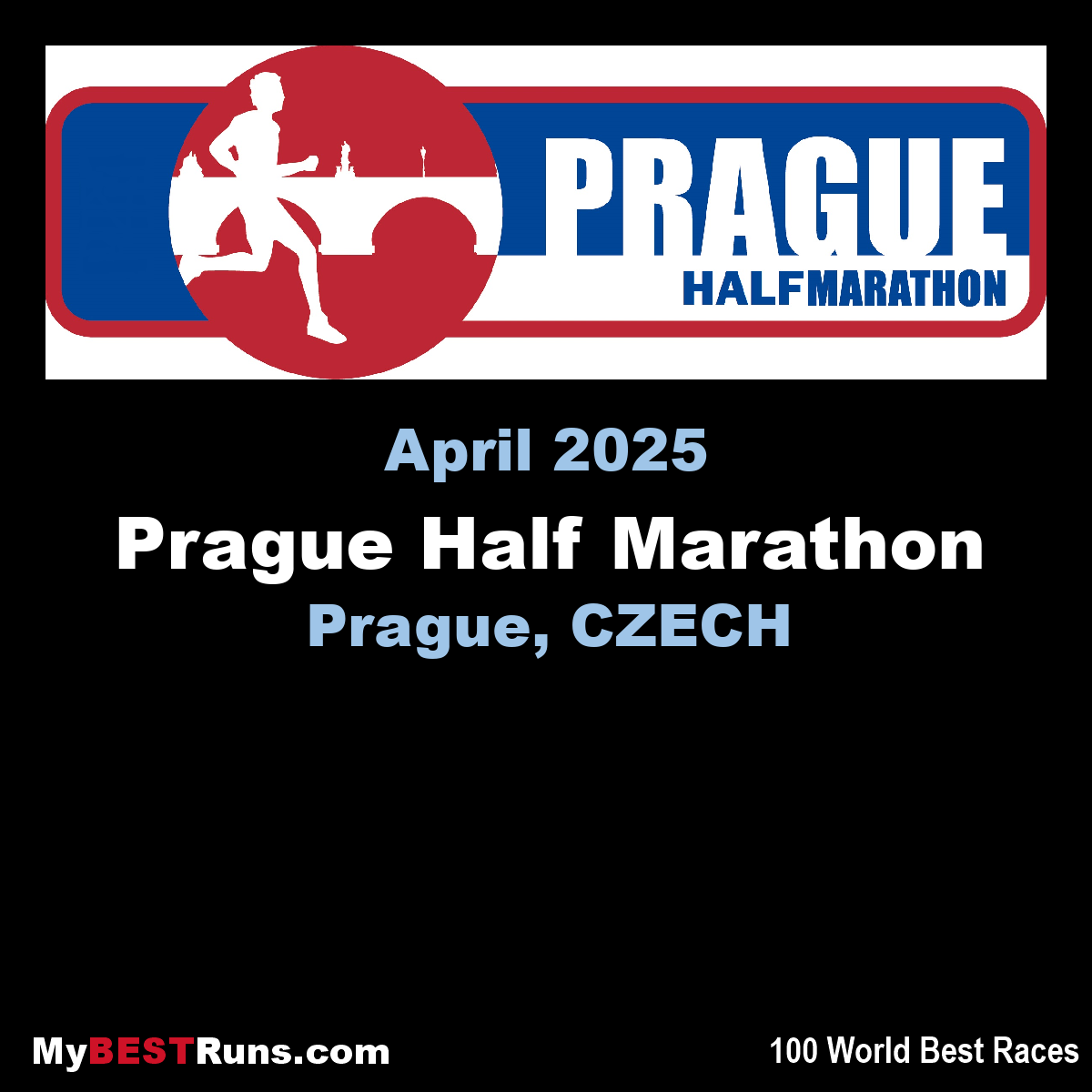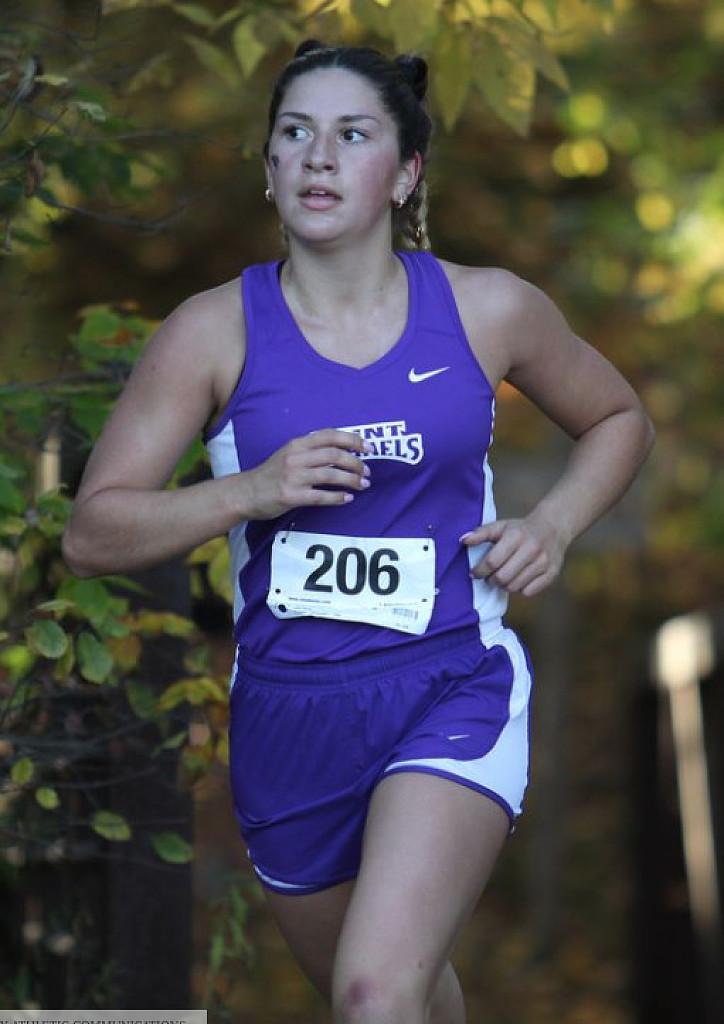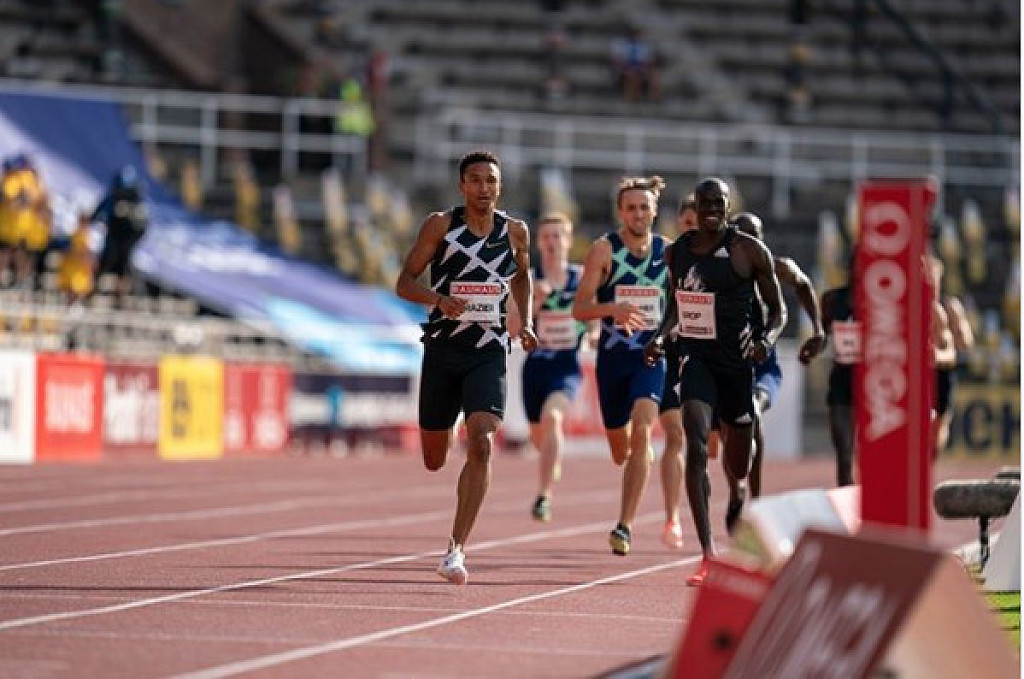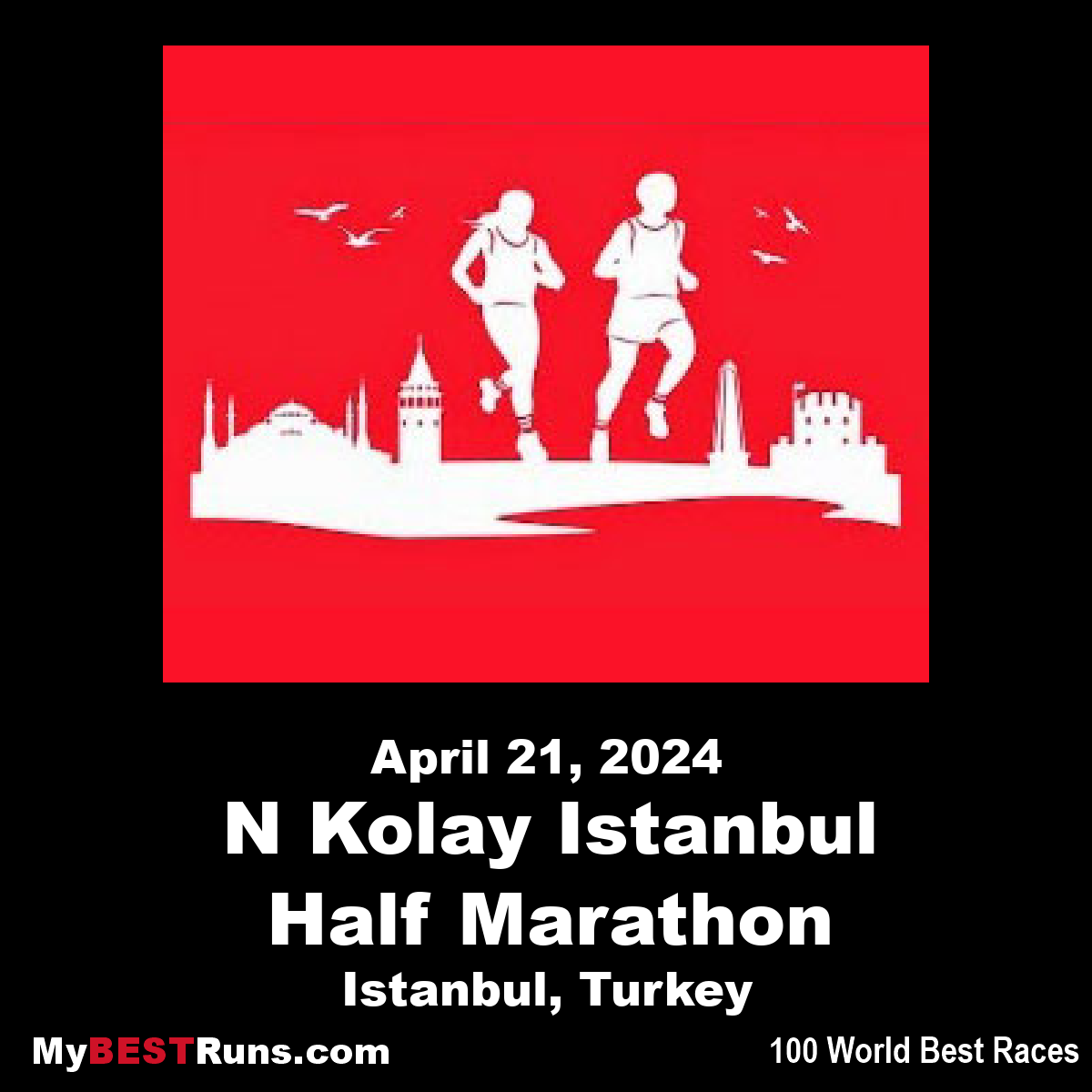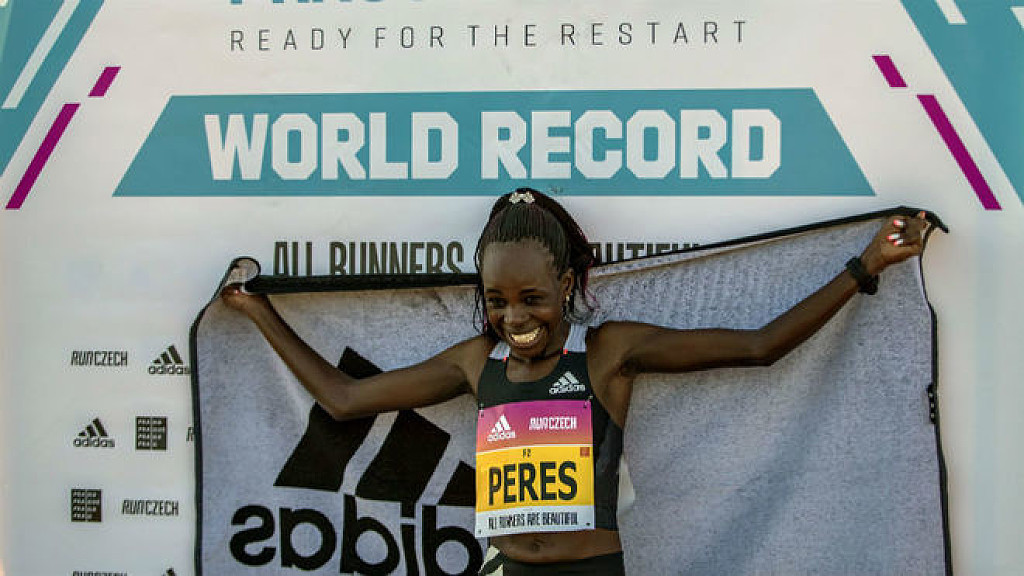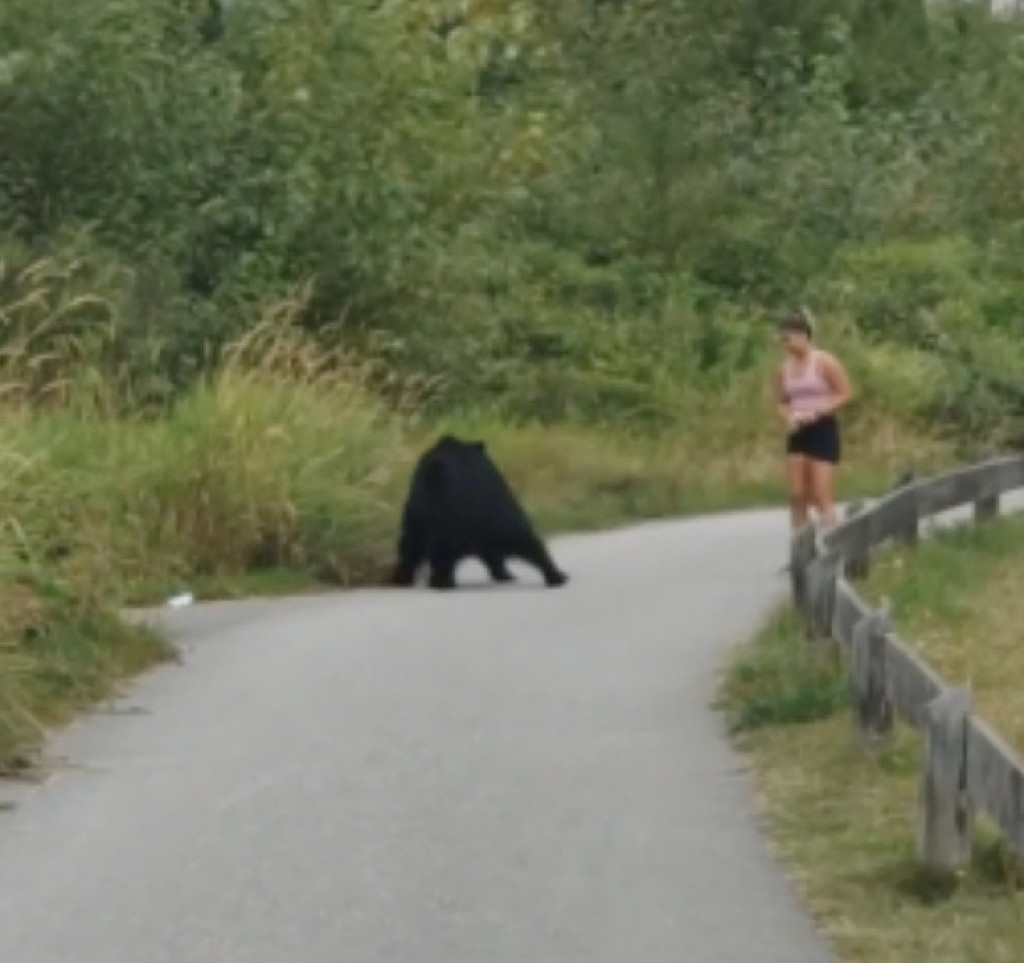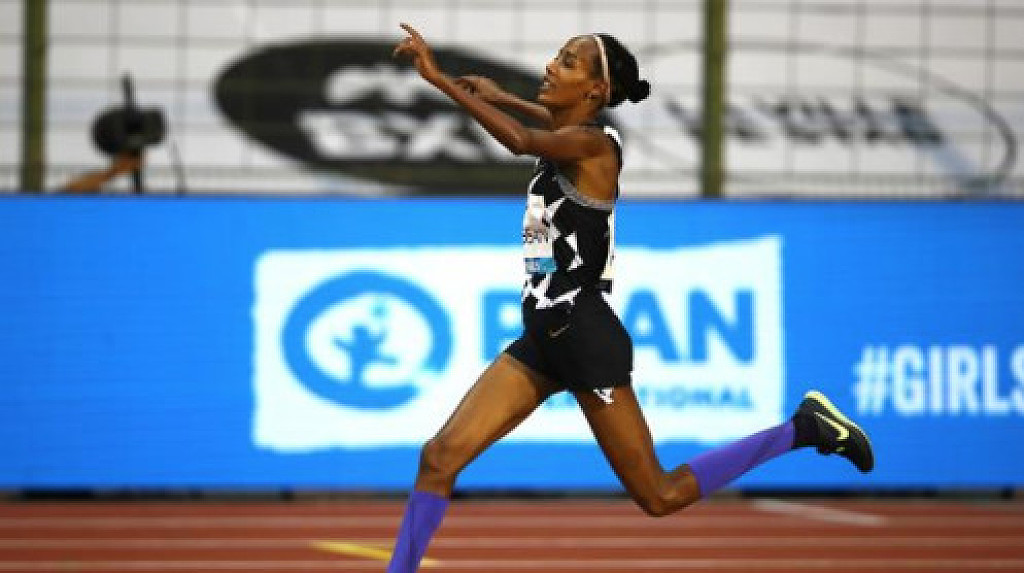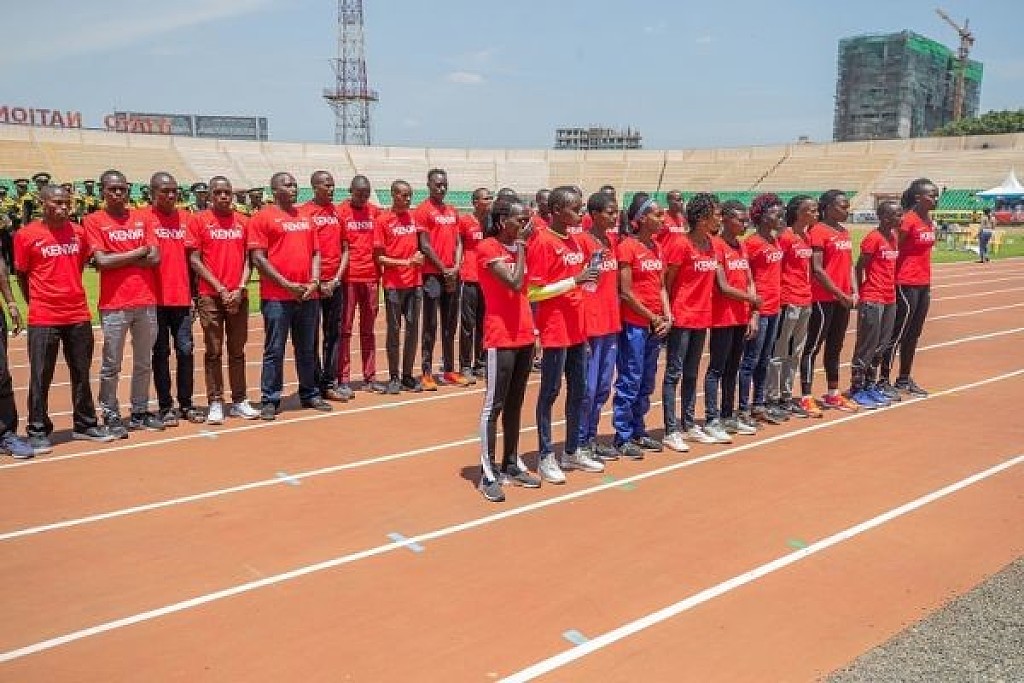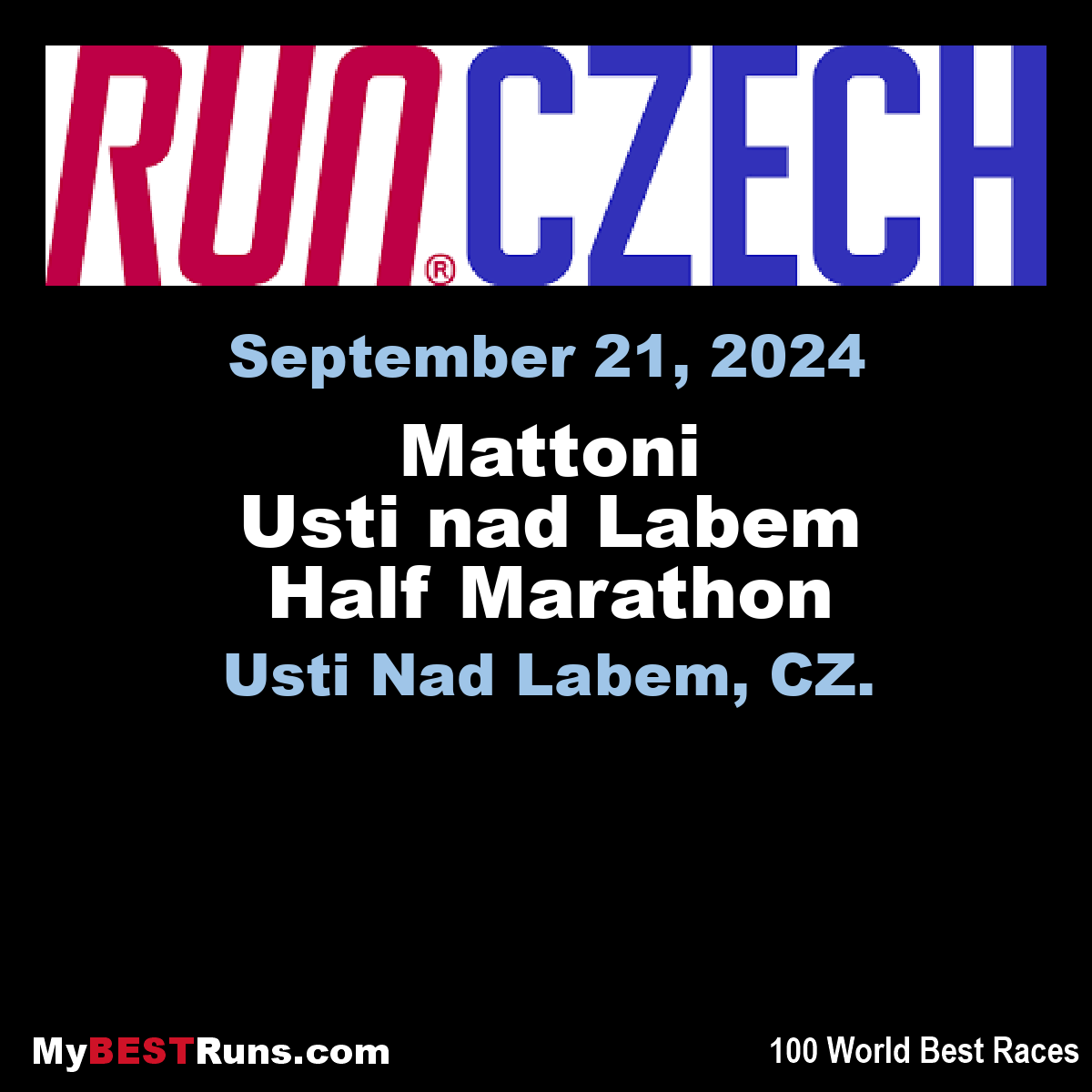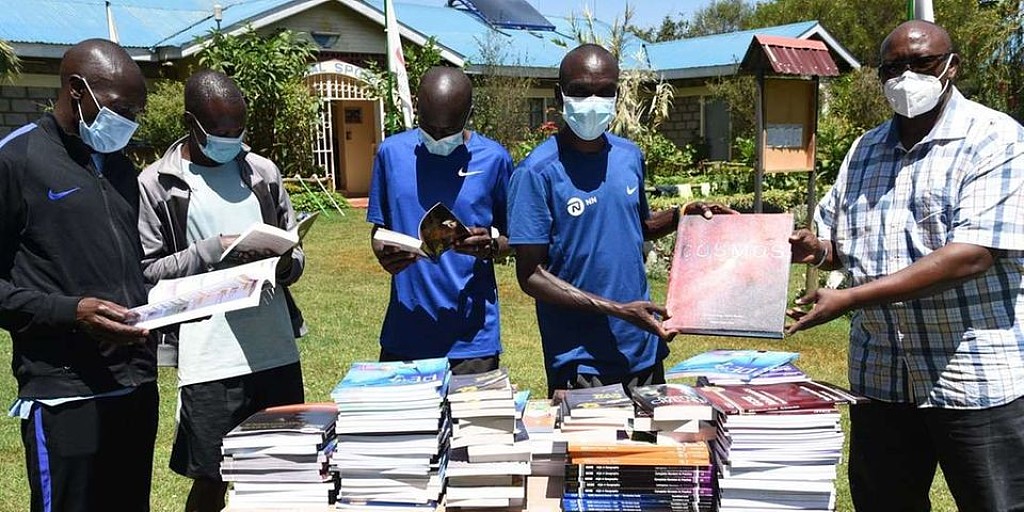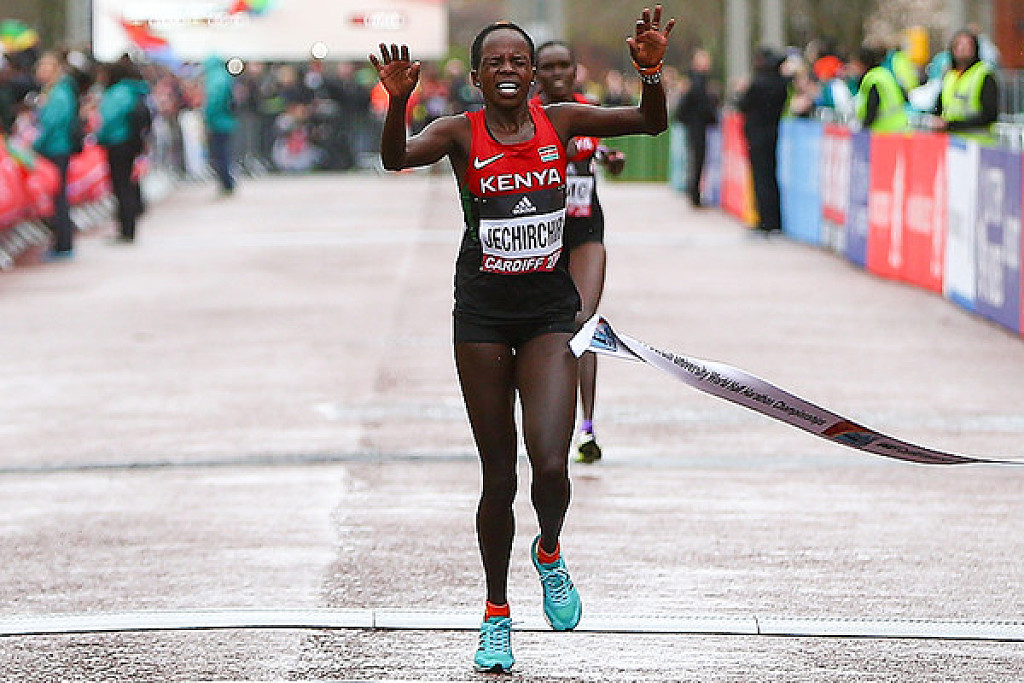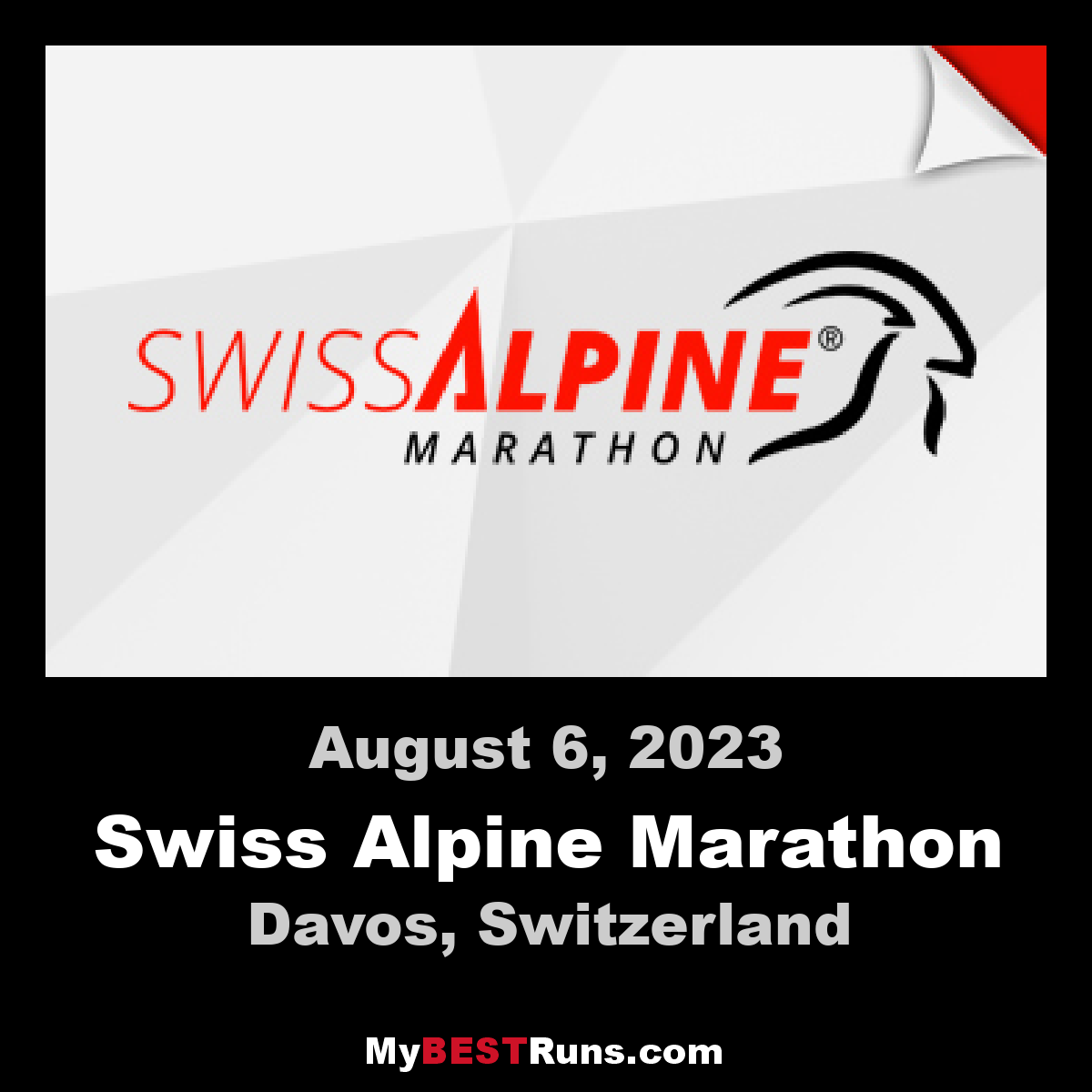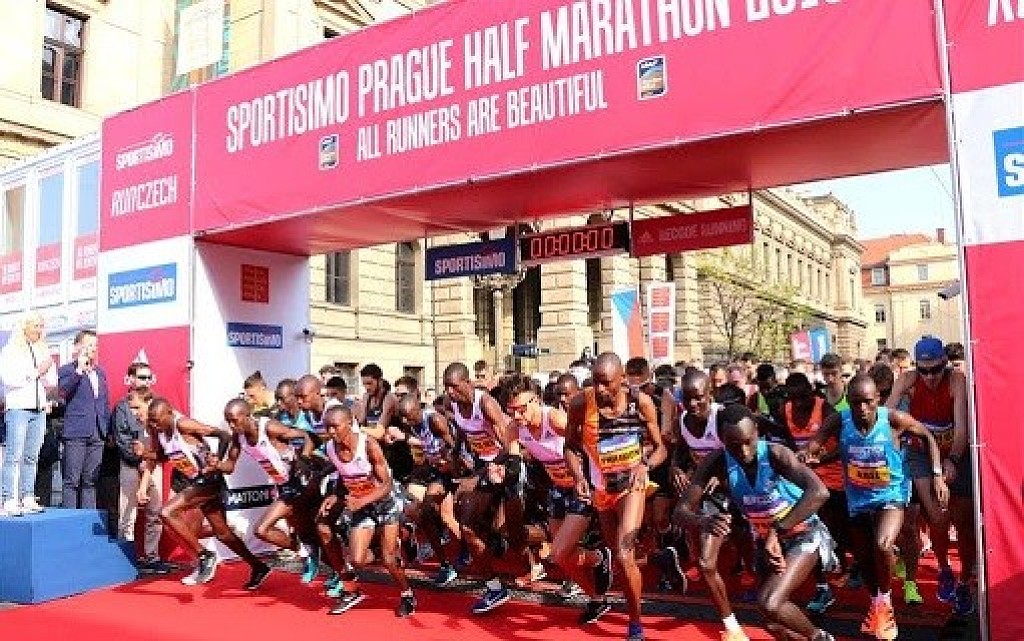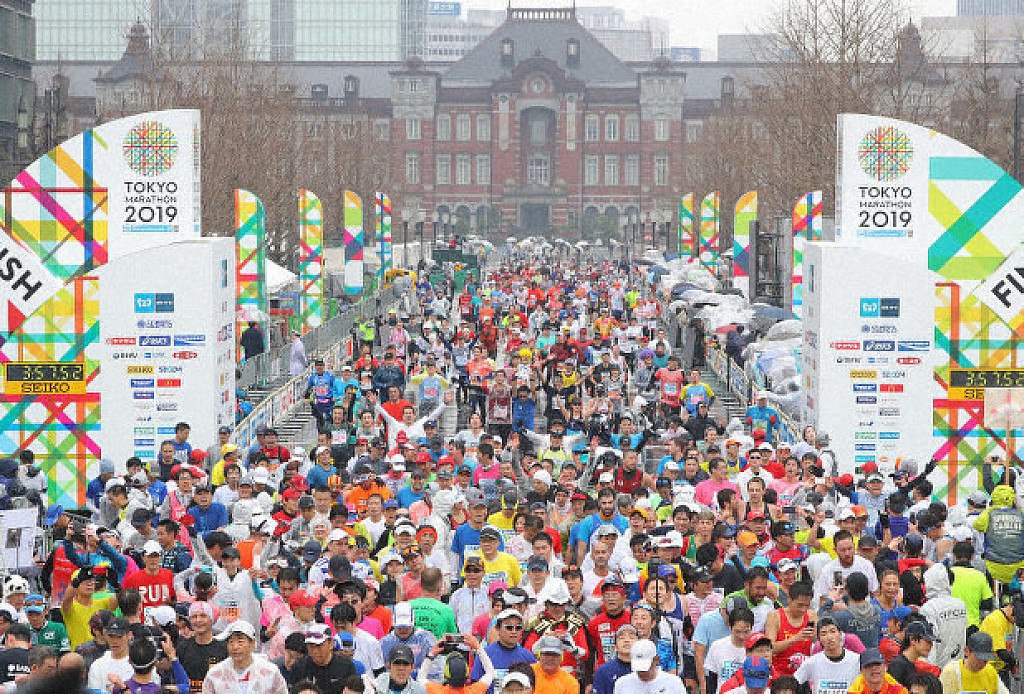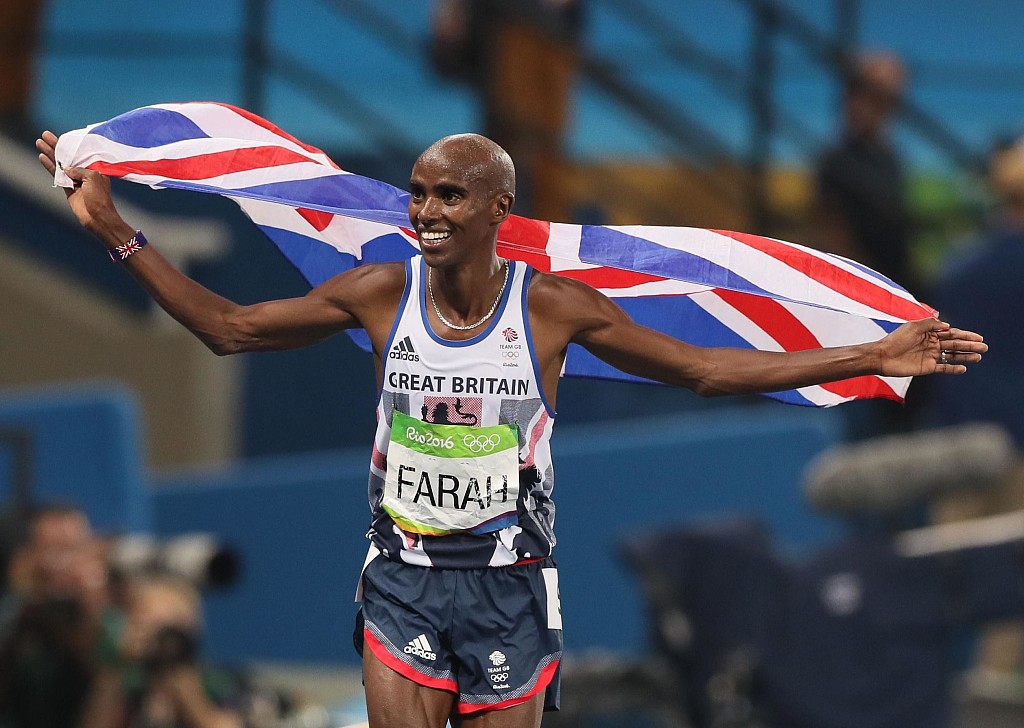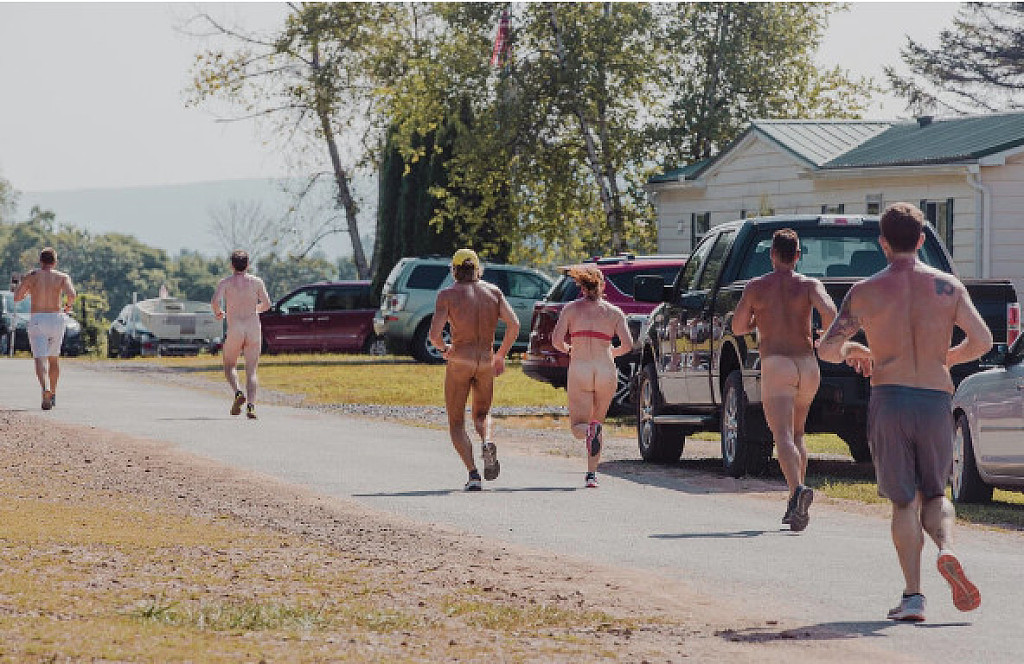Running News Daily
Running News Daily is edited by Bob Anderson in Mountain View, California USA and team in Thika Kenya, La Piedad Mexico, Bend Oregon, Chandler Arizona and Monforte da Beira Portugal. Send your news items to bob@mybestruns.com Advertising opportunities available. Over one million readers and growing. Train the Kenyan Way at KATA Running Retreat Kenya. (Kenyan Athletics Training Academy) in Thika Kenya. Opening in june 2024 KATA Running retreat Portugal. Learn more about Bob Anderson, MBR publisher and KATA director/owner, take a look at A Long Run the movie covering Bob's 50 race challenge.
Index to Daily Posts · Sign Up For Updates · Run The World Feed
2021 Grandma's Marathon Registration to open October 1
Grandma's Marathon ran a successfully social distanced in-person Park Point 5-miler back in Uuly. Using that same model and COVID-19 Preparedness Plan, the organization plans to host both the Minnesota Mile and Fitger's 5k in person this Friday and Saturday.
"It's exciting stuff for Grandma's Marathon that we're able to lead the way in that regard. Get people back out and running again in an actual event where you receive an official time. That's really cool for our industry and mission to keep people active," explained Grandma's Marathon Executive Director Shane Bauer.
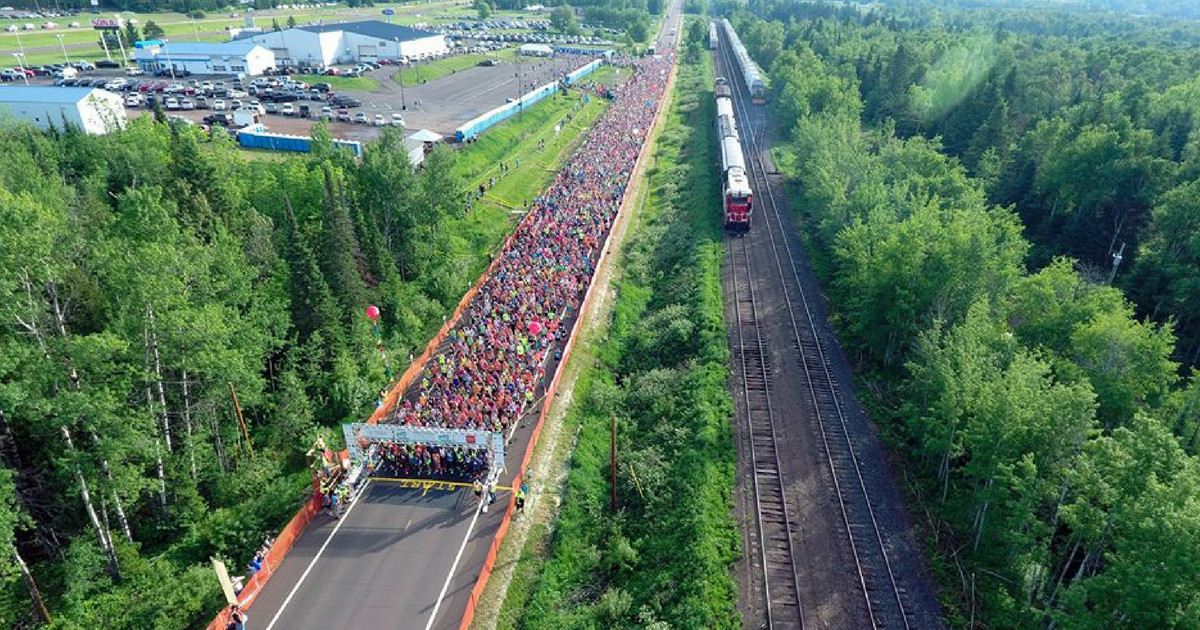
Grandma’s Marathon was one of the first event organizations in the country to formulate an approved COVID-19 Preparedness Plan to allow participants to run races in person, as safely as possible during the pandemic.
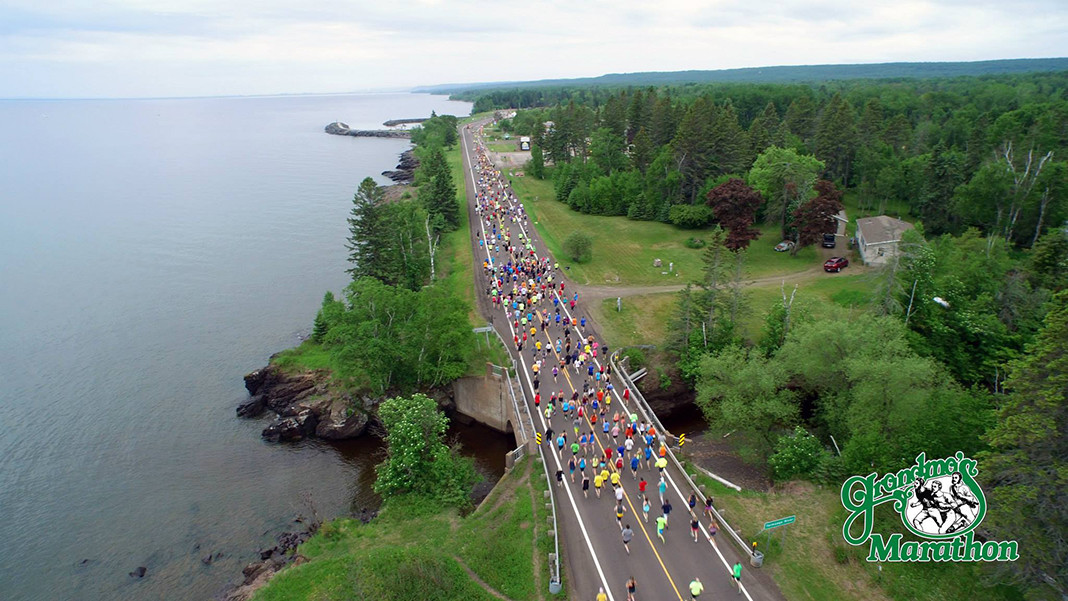
The Minnesota Mile will take place this Friday, September 11. The Fitger's 5K, which was rescheduled from April to September, will take place Saturday morning, September 12. Each race features time blocks throughout the day and waves with a limited number of people.
Based on this format, Grandma's Marathon is confident they can hold a successful Grandma's Marathon weekend next summer.
"We are going to open registration on October 1st at 7 P.M. central time for 4,000 runners in the half marathon and for the full marathon. We're going to go with 1,500 runners in the 5K because we have to plan for something," added Bauer.
The plan is to open registration for the 45th Grandma’s Marathon, 31st Garry Bjorklund Half Marathon, and 27th William A. Irvin 5K at half capacity on October 1.
In the event of in-person race cancellation, Grandma’s Marathon will give the registration value back to registrants with a forty percent discount that can be used up to three times over the next five years.
A virtual option will be available from the start of registration as well.
(09/09/2020) ⚡AMPGrandmas Marathon
Grandma's Marathon began in 1977 when a group of local runners planned a scenic road race from Two Harbors to Duluth, Minnesota. There were just 150 participants that year, but organizers knew they had discovered something special. The marathon received its name from the Duluth-based group of famous Grandma's restaurants, its first major sponsor. The level of sponsorship with the...
more...Impressive victories by Jacob Kiplimo, Christian Taylor and Faith Kipyegon at the Golden Spike, a World Athletics Continental Tour Gold meeting in Ostrava
Kiplimo’s track break-out:
In the men’s 5000m, the 19-year-old Kiplimo fought off Selemon Barega in a fierce homestraight brawl to take the win in 12:48.63, one of seven meeting records to fall on a clear night in this eastern Czech city where 3000 spectators were allowed entry to Mestsky Stadium to help celebrate the meeting’s 59th edition.

Just 3:30 into the race it was Barega, running behind pacer Lamecha Girma, who looked to be in control. With four laps to go he was already all alone and well ahead of the sprawled out pack.
“I wanted the fast time so I kept on pushing,” said Kiplimo, the silver medallist in the senior race at last year’s World Cross Country Championships. “It was a fight in the home straight. And it was wonderulf.”

It was also the first big-meet victory for the teenager. More are likely on their way.
Strong, solo Kipyegon:
Faith Kipyegon produced a powerful performance to take the 1500m in convincing fashion.
Controlling the tempo from the 800m point, the Olympic champion pulled away for good with some 250 metres remaining, with Laura Weightman briefly giving chase. Kipyegon clocked 3:59.05, a season's best and another meeting record.
Weightman, who was briefly passed by Jemma Reekie as they approached the final bend, overtook the Scot in the homestretch to finish second in 4:01.96 with Reekie further back in 4:03.25.
Taylor triples 17.42m world lead:
In typical fashion, Christian Taylor produced the goods in the final round to win the triple jump, reaching a world-leading 17.46 in the final round to steal the win from Hugues Fabrice Zango, who controlled the competition since the second round when he jumped 17.42m.
Taylor needed time to find his rhythm, shaking off a pair of back-to-back modest efforts with a 17.12m jump in round three. He didn’t produce another measured jump until his last.
Warholm dominates:
Two-time world 400m hurdles champion Karsten Warholm extended his unbeaten streak to ten with a convincing 47.62 victory, another meeting record.
It wasn’t quite the follow-up he was expecting after his stunning 46.87 European record in Stockholm where a clip of the final hurdle dashed his world record ambitions there. This time, he chopped his stride badly as he approached the ninth barrier, but if he was disappointed, he hid it well.
“It’s always nice to get a win, but I was a little surprised by the time to be honest,” said Warholm, who was flown to Ostrava on Sunday on a private jet.
“I had a little stutter step, I had to switch (lead legs). There was nothing dramatic about it, I just had to do a switch. But that probably affected my time. Everything that breaks your rhythm is going to impact your finish time.”
Ludvy Vaillant of France was second in 49.14, a season’s best.
Hassan out-sprints Chelangat:
Sifan Hassan, Sheila Chelangat and Yasemin Can waged a strong battle in the women’s 5000m, but through it all, Hassan, the world 1500m and 10,000m champion, was just biding her time. That came, she decided, with about 300 metres to go, when she pulled past Chelangat and ran off down the backstretch and eventually to a convincing 14:37.85 victory.
Chelangat, who took care of much of the pacesetting chores, was second, passing Can in the waning stages to clock in 14:40.51, a career best for the 22-year-old Kenyan. Can, running in her first race on the track this year, was next in 14:40.70.
800m wins for Muir and Wightman:
Laura Muir was again the class of the field in her event, this time the 800m, turning in a solid 1:58.84 victory. Poland’s Sofia Ennaoui, who was second to the Scot in the Silesia 1500m on Sunday, was second again in 2:00.82.
Jake Wightman took down a solid field in the men’s race in 1:44.18, a career best for the 26-year-old who's better known for his 1500m exploits. The performance lopped a hefty sum from his previous best of 1:44.61 set two years ago.
(09/09/2020) ⚡AMPby World Athletics
Olympic champ Caster Semenya couldn`t defend 800m title in Tokyo without taking medication
Two-time Olympic champion Caster Semenya lost her long legal battle Tuesday against track and field's rules that limit female runners' naturally high testosterone levels.
Switzerland's supreme court said its judges dismissed Semenya's appeal against a Court of Arbitration for Sport ruling last year that upheld the rules drafted by track's governing body affecting female runners with differences of sex development.

The 71-page ruling means Semenya cannot defend her Olympic 800-meter title at the Tokyo Games next year — or compete at any top meets in distances from 400 metres to the mile — unless she agrees to lower her testosterone level through medication or surgery.

The 29-year-old South African repeatedly said she will not do that and reiterated her stance in a statement through her lawyers Tuesday.
"I am very disappointed by this ruling, but refuse to let World Athletics drug me or stop me from being who I am," Semenya said. "Excluding female athletes or endangering our health solely because of our natural abilities puts World Athletics on the wrong side of history."
The Swiss Federal Tribunal said Semenya's appeal "essentially alleges a violation of the prohibition of discrimination."
In a May 2019 verdict, the sport court's three judges had said in a 2-to-1 ruling the discrimination against Semenya was "necessary, reasonable and proportionate" to maintain fairness in women's track. Testosterone is a hormone that strengthens muscle tone and bone mass, and is a doping product if injected or ingested.
The panel of five federal judges said it was limited to examining "whether the CAS decision violates fundamental and widely recognized principles of public order. That is not the case."
Semenya's "guarantee of human dignity" was also not compromised by the CAS ruling, the judges decided.
"Implicated female athletes are free to refuse treatment to lower testosterone levels. The decision also does not aim to question in any way the female sex of implicated female athletes," the federal court said.
It's unclear what Semenya will choose to do next. She could compete in the 100 or 200 or at distances longer than the mile but she has never had the success in those events that she has had over two laps.
However, she had already switched her training this year to 200, hinting that she was prepared to lose in court.
Greg Nott, Semenya's long-time lawyer in South Africa, said her international team of lawyers was "considering the judgment and the options to challenge the findings in European and domestics courts."
Any appeal to the European Court of Human Rights would likely not receive a judgment until after the Tokyo Olympics open next July.
Tuesday's judgment also came at a financial cost to Semenya and South Africa's track federation, which joined her appeal. Each was ordered to pay 7,000 Swiss francs ($7,600 US) to the court and 8,000 Swiss francs ($8,700) toward World Athletics' legal costs.
(09/09/2020) ⚡AMP
by Graham Dunbar, Gerald Imray
Tokyo 2020 Olympic Games
Fifty-six years after having organized the Olympic Games, the Japanese capital will be hosting a Summer edition for the second time, originally scheduled from July 24 to August 9, 2020, the games were postponed due to coronavirus outbreak, the postponed Tokyo Olympics will be held from July 23 to August 8 in 2021, according to the International Olympic Committee decision. ...
more...Tokyo Olympics will go ahead with or without Covid, says IOC vice-president John Coates
Tokyo's postponed Olympics will go ahead next year regardless of the coronavirus pandemic, IOC vice-president John Coates told AFP Monday, vowing they will be the "Games that conquered Covid".
The Olympics have never been cancelled outside of the world wars and Coates, speaking in an exclusive interview, was adamant that the Tokyo Games will start on their revised date.

"It will take place with or without Covid. The Games will start on July 23 next year," said Coates, who heads the International Olympic Committee's Coordination Commission for the Tokyo Games.
"The Games were going to be, their theme, the Reconstruction Games after the devastation of the tsunami," he said, referring to a catastrophic earthquake and tsunami in northeastern Japan in 2011.

"Now very much these will be the Games that conquered Covid, the light at the end of the tunnel."
In a landmark decision, the 2020 Olympics were postponed because of the global march of the pandemic and they are now set to open on July 23, 2021.
But Japan's borders are still largely closed to foreign visitors and a vaccine is months or even years away, feeding speculation about whether the Games are feasible at all.
Japanese officials have made clear they would not delay them a second time beyond 2021.
There are signs that public enthusiasm in Japan is waning after a recent poll found just one in four Japanese want them to go ahead next year, with most backing either another postponement or a cancellation.
Coates said the Japanese government "haven't dropped the baton at all" following the postponement, despite the "monumental task" of putting the event back a year.
"Before Covid, (IOC president) Thomas Bach said this is the best prepared Games we've ever seen, the venues were almost all finished, they are now finished, the village is amazing, all the transport arrangements, everything is fine," he said.
"Now it's been postponed by one year, that's presented a monumental task in terms of re-securing all the venues... something like 43 hotels we had to get out of those contracts and re-negotiate for a year later.
"Sponsorships had to be extended a year, broadcast rights."
With much of that work underway, or accomplished, a task force has been set up to look at the different scenarios in 2021 -- from how border controls will affect the movement of athletes, to whether fans can pack venues and how to keep stadiums safe.
The group, comprising Japanese and IOC officials, met for the first time last week.
"Their job now is to look at all the different counter-measures that will be required for the Games to take place," said Coates, the long-time president of the Australian Olympic Committee.
"Some countries will have it (Covid) under control, some won't. We'll have athletes therefore coming from places where it's under control and some where it is not.
"There's 206 teams... so there's a massive task being undertaken on the Japanese side."
Tokyo 2020 chief Toshiro Muto on Friday repeated that organisers hoped to avoid a Games without spectators -- an option that has been mooted given Japan is still limiting audiences at sports events.
(09/08/2020) ⚡AMPby AFP
Tokyo 2020 Olympic Games
Fifty-six years after having organized the Olympic Games, the Japanese capital will be hosting a Summer edition for the second time, originally scheduled from July 24 to August 9, 2020, the games were postponed due to coronavirus outbreak, the postponed Tokyo Olympics will be held from July 23 to August 8 in 2021, according to the International Olympic Committee decision. ...
more...Košice Peace Marathon carries on
With a month left until the start of the oldest marathon in Europe registration of runners for the Košice Peace Marathon was stopped on September 1. The organizers’ full attention is now focused on managing important hygiene and security measures.


The 97th edition of the race, incorporating the Slovak Marathon Championships, will be divided into seven time-varying start waves, making it possible for almost 5000 runners to set off safely from the start.
The marathon holds the World Athletics Silver Label and will be an an opportunity for runners to achieve Olympic qualifying times. The elite field is being recruited only from Europe this year due to Covid 19 quarantining requirements.
(09/08/2020) ⚡AMPkosice Peace Marathon
The Kosice Peace Marathon is the oldest European marathon.This year for the organizers of Kosice Peace Marathon is also about memories and flashbacks. One of the fastest marathon courses has been created in Košice 20 years ago on that occasion it was the 1997 IAAF World Half Marathon Champioships. Tegla Loroupe and Shem Kororia were awarded from the hands of...
more...Mo Farah has asked for pacing assistance in this weekend's P&O Antrim Coast Half Marathon
Four times Olympic champion Mo Farah has asked for pacing assistance in this weekend's P&O Antrim Coast Half Marathon which is shaping up to be the highest quality road race ever in the province.
The 37-year-old is planning for the Larne event on the back of his weekend one hour World track record in Brussels.

Farah ran a total of 21,330 metres, which beat Haile Gebrselassie's 2007 record by 45m, to seal his first ever outdoor world record.
Farah was so focused that he appeared not to realise when the hour was up and kept running before being told he could stop.
There was also a world record in the women's event as Holland's Sifan Hassan set a new best of 18.93km.
Farah has made it clear that, in Larne, he is hoping to beat his own British Half Marathon record of 59 mins 32 secs set five years ago.
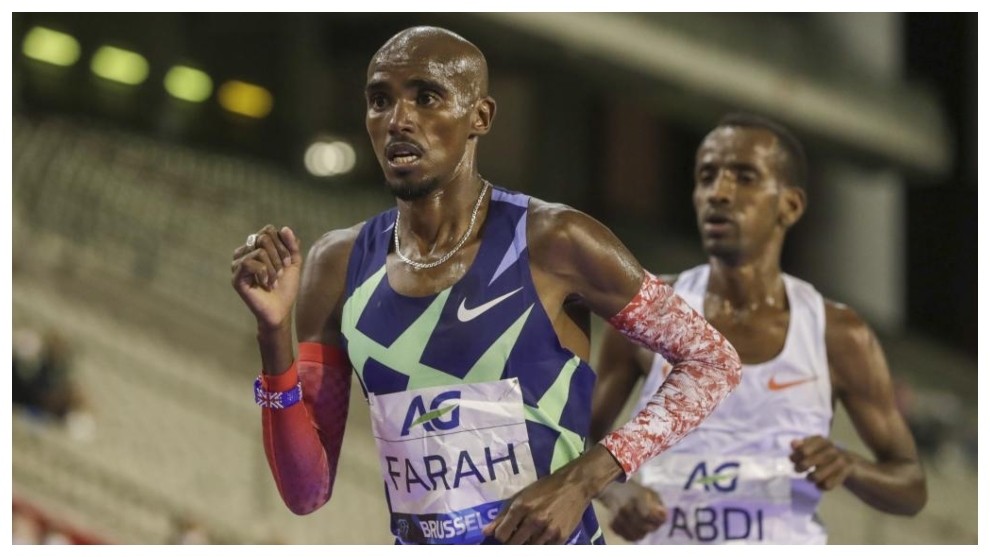
In order to do so, however, he has requested help to maintain the hectic pace.
This has created an issue for the organisers as there is no-one in the current list of runners who is capable of maintaining the tough sub one hour pace alongside Farah. GB's Ben Conor is the fastest athlete with a personal best of 61.11.
A possible compromise is simply for Farah to be paced by someone for as much of the race as possible.
Either way, a new NI All Comers record is certain. The current record stands to the Klimes twins, who were joint winners of the 1986 Belfast Half when they ran 62.22.
World Championship 1,500 metres finalist Ciara Mageean will, meanwhile, race tomorrow in the Golden Spike meeting in Ostrava, in the Czech Republic.
The 28-year-old Portaferry woman will be trying to repeat her recent top form which has produced Irish records at 800 and 1,000 metres.
Elsewhere, around 400 competitors took part in the latest Eikon road races at Down Royal.
Victory in the 5k event went to Willowfield's Aaron Woodman in 15 minutes, 31 seconds. He was followed by Peter Donnelly (15.42), who was a second ahead of Foyle Valley's Darragh Crossan.
In the ladies race, North Down's Jessica Craig was a comfortable winner in 16.18. She was followed by Finn Valley's Natasha Kelly (17.46) and Omagh's Lauren Molloy (17.52).
The 10K race went to Derry's Stephen McAlary (31.50) followed by North Belfast's David Hamilton (32.47).
Lagan Valley's Caitlyn Harvey took the ladies prize in 38.00 from Newcastle's Anne Gosling (39.57).
60-year-old Tommy Hughes, of Strive Racing, dominated in the 10 miles race with a time of 54.40.
Second went to team mate Eoin Hughes (55.09), followed by Edward Cooke of Victoria Park (55.45). Sperrin's Karen Alexander won the Ladies race by four minutes in 63.49.
(09/08/2020) ⚡AMPby Brian Hill
MEA ANTRIM COAST HALF MARATHON
The MEA Antrim Coast Half Marathon 2022 has been approved by World Athletics as an Elite Event. The World Athletics certified course takes in some of the most stunning scenery in Europe, combined with some famous landmarks along the route. With it's flat and fast course, the race is one of the fastest half marathons in the world. Starting...
more...Frankfurt Half Marathon Invitational next Sunday, Only top runners living in Germany were invited
A half marathon for elite runners only will be staged in Frankfurt next Sunday: The Frankfurt Half Marathon Invitational will be organized by the Race Director of the Mainova Frankfurt Marathon Jo Schindler and his team as well as Christoph Kopp, the Berlin based elite athletes manager. Only top runners living in Germany were invited. Germany’s marathon record holder Arne Gabius as well as Melat Kejeta and Katharina Steinruck, who have both achieved the qualifying times for the Olympic marathon in Japan next year, will be among the competitors. The race is a German qualifier for the World Half Marathon Championships which are scheduled for 17 October in Gdynia, Poland.
The Frankfurt Half Marathon Invitational will be run on a 3 k circuit in the Frankfurt fairground, which is closed to the public. „It is the ideal venue for us to provide secure surroundings and to fulfill all current requirements with regard to the Covid situation. Unfortunately we are not allowed to have spectators,“ said Jo Schindler, who received support from the city and the county to stage this half marathon. It was only last month when the Mainova Frankfurt Marathon, a World Athletics Gold Label Road Race, had to be cancelled due to the Corona pandemic. „Now we are very happy that we are able to organize a race in this difficult year. This is very motivating,“ said Jo Schindler.

"It is great that this race can go ahead and I am looking forward to returning to Frankfurt. I have of course excellent memories of the Mainova Frankfurt Marathon," said Arne Gabius, who clocked the German national marathon record there in 2015 with 2:08:33. His half marathon PB stands at 62:09. Since Arne Gabius will use Sunday’s race as a test for the London Marathon, where he intends to break the Olympic qualifying time of 2:11:30 on 4 October, he is not the favourite.

Amanal Petros currently holds the national lead in the half marathon with a time of 62:18. If he shows a solid performance on Sunday he would surely be selected for the World Championships. Germany’s national marathon champion from 2019 is Tom Gröschel. He ran 64:09 in the winter and needs to improve by at least nine seconds in Frankfurt to get the national qualifying time for Gdynia.
The qualifying standard of 74:00 was no issue for Melat Kejeta, when she ran a fine 68:55 in Ras Al Khaimah (UAE) in February. Normally she would be the overwhelming favourite on Sunday, however it remains to be seen in what sort of form she will come to Frankfurt.
Katharina Steinruck could not run a half marathon earlier in the year due to the Corona crisis. However she showed good form despite the restrictions, when she clocked 32:41 in a Berlin 10 k race in June. She missed her PB by just two seconds. "I am happy to be able to run a half marathon now. And to make it even better: this happens in my hometown. I have to thank the organizers for making this possible," said Katharina Steinruck, who has a half marathon PB of 72:23. To qualify for the World Championships she would need a time of 74:00.
(09/08/2020) ⚡AMPby Athletics
Mainova Frankfurt Marathon
Frankfurt is an unexpectedly traditional and charming city, with half-timbered buildings huddled in its quaint medieval Altstadt (old city), cosy apple wine taverns serving hearty regional food, village-like neighbourhoods filled with outdoor cafes, boutiques and street art, and beautiful parks, gardens and riverside paths. The city's cache of museums is second in Germany only to Berlin’s, and its nightlife...
more...Few participants run Budapest Half Marathon due to the pandemic
A total of 5,600 runners from some 600 countries took part in Sunday's Budapest Wizz Half Marathon, a fraction of the tens of thousand participants usually taking the scenic route.
"As a result of the increase in the number of COVID-19 cases in Hungary, the Hungarian Government has introduced entry restrictions that make it now impossible for foreigners to enter Hungary. Foreigners will only be allowed to enter Hungary in the case that it is highly necessary," the organizers notified participants.

Organizers BSI (Budapest Sport Office) offered a special virtual race for those who cannot be at the race in person: "Run anywhere in the world, and anytime between September 2 and September 8, submit your result and get the same Finishers Medal, technical Event T-Shirt and the Wizz Air 20 euros value voucher shipped right to You!"
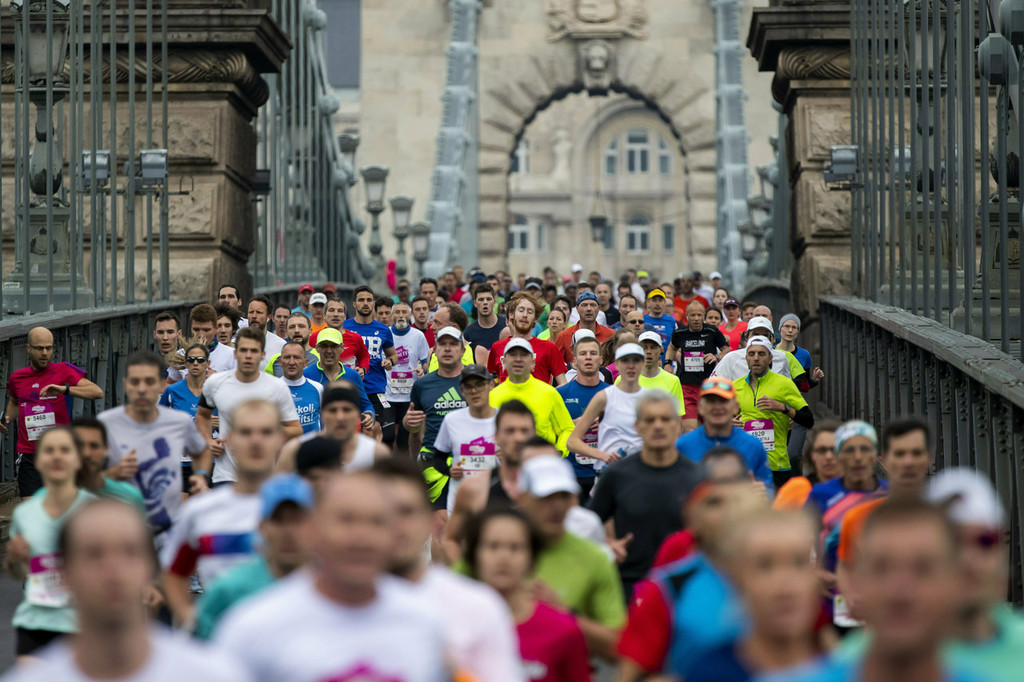
The event was held with strict safety rules in order to preserve the health of the runners, such as compulsory wearing of masks in the start and change zones, as well as the race center. There was a body temperature check before giving the start numbers.
The start of the race was done in smaller groups of a few hundred people, as opposed to the usual big launch of several thousand.
Finishers got their running medal in their hand, not on their neck.
There was no shower on site, and people were asked to leave the scene as soon as possible after reaching the finish line.
There were also many hand sanitizing points and people were asked to keep two meters distance from one another.
The Budapest marathons and half marathons are sightseeing running tour events: world heritage sites are present along the course, bridges across the Danube, Gellert Hill, Buda Castle, the Parliament of Budapest, Margaret Island, and other scenic spots.
Since the running event usually draws more than 60,000 people including family members, the city council of Budapest has limited the number of major running events to three per year, in order to cause less disturbances in the traffic of the Hungarian capital.
In the men's event, Gaspar Csere, 29, from Hungary won the race with a time of 1:06:29, whereas the fastest female athlete was Katalin Kovacs-Garami, 40, from Hungary with a time of 1:18:52.
(09/07/2020) ⚡AMPBudapest Half Marathon
Participating in the half marathon is essentially a running sightseeing tour of the beautiful Budapest. The course leads through the center of the city, down the famous Andrassy Boulevard and across the Chain Bridge. Admire the view of the Buda Castle from the Danubebanks and marvel in the panorama of Pest as well as Europe´s third largest Parliament building! There...
more...Kenyan Kibiwott Kandie shines at the Prague half marathon
Kenya Defence Forces’ Kibiwott Kandie won the 2020 Prague men’s Half Marathon in 58 minutes and 38 seconds on Saturday morning.
It was a largely lone affair for the soldier after he broke away from the Kenyan-dominated field at the 10km mark under a hot atmospheric condition.

“It's difficult to run alone,” said Kandie whose performance makes him the fifth fastest man over the distance with the sixth fastest performance of all-time.
Kandie staged a good run early in the year, winning the Ras Al Khaimah Half Marathon in February with a world-leading 58:58, six days after his triumph at the fiercely competitive National Cross-Country Championships. But then the Coronavirus pandemic staggered his momentum. In March, Kandie was also named to the Kenyan team for the World Athletics Half Marathon Championships.

“My wish is to run again when this pandemic is over. It will be a pleasure to continue competing,” he added.
Kandie’s performance relegated Philemon Kiplimo to second place with a time of 59:56 as Benson Kipruto came in third in 1:00:06.
Making it to the top 10 finishers were Amos Kurgat who clocked 1:00:20 for the fourth position, Felix Kipkoech was fifth in 1:00:40 and Timothy Kibet stopped his timer on 1:00:47 for the sixth place. Others are Benard Kimeli who timed 1:01:00, Abel Kipchumba (1:01:02), Bravin Kipkogei (1:01:23) and Alfred Chelal (1:01:32).
(09/07/2020) ⚡AMPby Michezo Africa
Prague Half Marathon
Start the RunCzech season with one of the biggest running events in the Central Europe! Every year the Sportisimo Prague Half Marathon excites spectators with performances of elite athletes breaking records. Enjoy a course with incomparable scenery in the heart of historic Prague that follows along the Vltava river and crisscrosses five beautiful bridges. Take in majestic views of the...
more...Valencia marathon cancelled due to Covid-19
Organizers have been forced to cancel the 40th Anniversary Valencia Marathon due to the coronavirus health crisis.
THE Trinidad Alfonso EDP Valencia Marathon Organization, run by SD Correcaminos and the Valencia City Council, said in an official statement, it “regrets having to make the decision to cancel the 40th edition of the popular race, scheduled for December 6.

“The organization tried to exhaust all options in order to hold the event in a safe way for all runners, but the development of the health situation due to Covid-19 and the uncertainty of the near future are forcing us to forgo hosting the 30,000 participants that bought bibs for the 2020 edition.”
The Valencia Marathon wants to ensure “the best guarantees for the participants, companions, public and volunteers taking part in the event, as well as for the organizational team,” which it said is not feasible right now with such a high number of participants.

For this reason, as happened with the Trinidad Alfonso EDP Half Marathon a few weeks ago, the registered runners will be contacted in the next few days to start the process of choosing, from September 15, the options regarding their entry:
*Exchanging their entry for a place on the 2021 edition (December 5, 2021).
*Requesting a full refund of the cost of their entry (excluding the voluntary charitable donation, which was paid to Save the Children, this year’s charity, as planned).
*Renouncing refund of the entry fee for the event as a token of support to the Organization, while enjoying preferential registration at the price set for the first tranche of entries available for 2021.
*Participating in a virtual way by running the 4.0 Valencia Marathon where desired, receiving the Luanvi shirt and a medal for this edition among other gifts and surprises (all details to be announced soon).
“Three months before the scheduled date for the event, we started the cancellation process to respond to the concerns of all participants and not to make things worse for those runners who had to schedule their trip and accommodation in Valencia,” said the organization.
“We will keep working to celebrate our next edition together in 2021, in the hope that the next few months will bring us a more certain and safer scenario than the one we are experiencing now. It will be a difficult goal, but it will be worth it.”
Paco Borao, race director and president of SD Correcaminos, pointed out that “three months is the minimum time in advance that runners of the Valencia Marathon deserve to be announced that the popular event will not take place in 2020.
“Participants will have the same options to choose regarding their entry as for the Half Marathon, now adding the option to take part in a virtual edition of the 4.0 Valencia Marathon to join us on our 40th Anniversary. This is a compulsory stop, but we are going to work hard so that 2021 comprises all we wanted to do this year and even more.”
(09/07/2020) ⚡AMPby Tara Rippin
VALENCIA TRINIDAD ALFONSO
The Trinidad Alfonso EDP Valencia Marathon is held annually in the historic city of Valencia which, with its entirely flat circuit and perfect November temperature, averaging between 12-17 degrees, represents the ideal setting for hosting such a long-distance sporting challenge. This, coupled with the most incomparable of settings, makes the Valencia Marathon, Valencia, one of the most important events in...
more...Elaine Thompson-Herah, two-time world 200m champion Dafne Schippers and multiple world medalist Marie-Josée Ta Lou, will go head to head over 100m at the Wanda Diamond League meeting in Doha
Double Olympic sprint champion Elaine Thompson-Herah, two-time world 200m champion Dafne Schippers and multiple world medalist Marie-Josée Ta Lou, will go head to head over 100m at the Wanda Diamond League meeting in Doha on Friday September 25 2020.
The three women have met at this meeting on two previous occasions. Thompson-Herah triumphed over 200m in 2017, clocking 22.19 into a -2.3m/s headwind with Schippers finishing second and Ta Lou placing third.

They clashed again one year later, this time over 100m, and Ta Lou came out on top, running 10.85. Thompson-Herah was third on that occasion and Schippers was sixth.
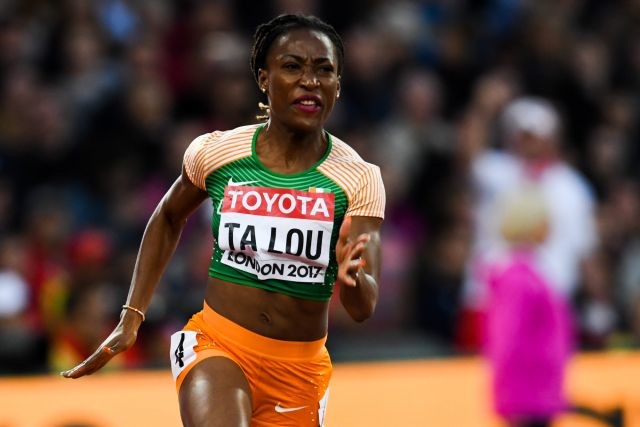
But the last time they were in the Khalifa Stadium was for last year’s World Championships, where Ta Lou took 100m bronze, just 0.03 ahead of Thompson-Herah. Schippers, meanwhile, was forced to withdraw from the final through injury.
Thompson-Herah’s season’s best of 10.88 set in Kingston on 8 August is the second fastest of the year to date.
“I’ve been fortunate to be able to race at home over the summer, but nothing beats the thrill of lining up in an overseas, international meet,” said the Jamaican. “I can’t wait to get back on the circuit, especially as part of a quality field in Doha where I’ve really enjoyed competing in the past.”
Ta Lou will be looking to build on her Wanda Diamond League performances in Monaco and Stockholm where she finished fourth (11.39) and third (11.32) respectively, while Schippers will make her season’s debut over 100m in Doha.
Doha’s Qatar Sports Club will host the revised 12-event programme – the final competitive meeting of the truncated 2020 Wanda Diamond League season – which includes sprint hurdles and 800m for both men and women; 100m, 3000m and long jump for women; and 200m, 400m, 1500m and pole vault for men.
(09/07/2020) ⚡AMPby World Athletics
A College Runner Spends the Night Hiding in a Tree to Escape a Charging Bear
When a mama bear started chasing after her, she did everything she could to survive.
On August 18, Rachel Smith, 19, headed out for seven miles on the Big Otter Trail in the HaDaRonDah Wilderness Area, a trail she’s run dozens of times in her hometown of Old Forge, New York, tucked away in the Adirondacks.

Usually a morning runner, Smith, who’s on the cross-country team at St. Michael’s College in Vermont, left her house at 7 p.m. because work had kept her busy earlier in the day. She told her mom she’d be back in 90 minutes, tops.
Because of the fog, Smith opted to run on a snow-mobile trail instead of the main road, where cars would have a hard time seeing her. There’s no cell service where Smith runs so she never brings a phone.
Smith didn’t come home that night.
Just before the 3.5-mile turnaround, Smith saw two black bear cubs. An avid outdoors person—she attended Adirondack Woodcraft Camps for 12 summers—Smith knew the mama bear would be nearby, and she had to avoid getting in between her and her babies.
“I thought, alright, this is fine, I’ll turn around early. That’s okay,” Smith told Runner’s World. “I turned around and mama is already charging toward me.”
Black bears, Smith said, are supposed to be scared of people, and in the past, they’ve run from her. But it’s a different story when cubs are involved, so Smith started screaming and made herself big. (The National Parks Service recommends talking to bears in a calmed tone and making yourself appear larger than you are, but other organizations recommend yelling at the bear.)
“She was not having it,” Smith said. “I couldn’t run forward because the cubs were there. And I couldn’t go backward, so I went left into the woods.”
Smith ran, screaming the whole time, forcing her way through heavy underbrush, bogs, marshes, and creeks. Every time she turned back or slowed down she could hear the bear thrashing behind her. Smith kept turning left, using her arms to swim through branches and leaves.
“It was getting dark and [the bear] sees better than I do in the dark, and all I’m thinking is, I gotta keep moving,” Smith said.
Eventually Smith came to a tree shaped like a V, surrounded by smaller trees. She used those smaller trees to make her way up the larger V tree.
“I can’t just climb up any tree because bears can climb,” Smith said. “But by using those smaller trees, I crushed them and was thinking the bear can’t get to me because she’s too big.”
She threw her sports bra, socks, and shoes down at the bear to scare her off, leaving Smith with just her running jacket and shorts, wet and cold from the rain.
Smith doesn’t know how long the bear circled the tree, trying to climb up. All she could see was the animal’s eyes looking up at her. Smith’s Garmin watch—and her only light source—died at 9:47 p.m., leaving her in total darkness.
The temperature dropped into the 40s, and Smith did everything she could to stay warm. She couldn’t sit because of the shape of the tree so she alternated between standing on one leg and squatting, hugging the trunk tightly for hours until
“I couldn’t cry, because I needed the water. I peed myself again because I was scared shitless—thank goodness because [the pee] was so warm, and thank God I had something good to eat before I left,” Smith said. “I started thinking about the normal stuff you think about when you think you might die. What did I say to my mom and my sister? I told them where I was going and when I’d be back. I knew they were looking for me. But there was no civilization for God knows how many miles.”
At some point—Smith had no concept of time after her watch ran out of battery—there was a light in the distance, making a whirring sound. It was a helicopter. But it was too far away to see Smith.
When the sun came up, Smith looked around from her perch and didn’t see any sign of the bear. Smith jumped some 15 feet down from the tree and looked for her New Balance 1080 shoes and, unsuccessfully, her socks and sports bra. She took off running, heading east.
She heard sirens in the distance and knew she was heading in the right direction. And then Smith came upon a blue trail marker.
“I was like, “Oh my God, it’s a trail. It’s a horse trail,’” she said.
She took off her shoes—her feet were covered in blisters from running without socks—made a sports bra out of her rain jacket, and sprinted down the trail.
“I felt like I was sprinting, but I probably wasn’t moving that fast,” Smith said, laughing.
She hit the main trail from where she started the night before and then passed over Route 28, the main road.
“I knew I was going to make it home,” she said.
About a mile from her house, Smith saw her friend’s car—the entire town had been out looking for her—and her friend drove her home, where her family, fire trucks, and ambulances were waiting.
Smith went to the hospital, where she was admitted overnight for observation because bloodwork revealed she had toxins in her system. Because Smith’s muscles had been contracted for hours while hugging the tree trunk, the breakdown of the muscles released toxins into her bloodstream.
Later, as runners are wont to do, Smith calculated her distance and estimates she was chased for roughly five miles, and covered 12 to 15 miles to get home.
“I’m not at all surprised by Rachel’s tactics,” Molly Peters, coach for the cross-country and Nordic ski teams at St. Michael’s College, told Runner’s World. “Rachel is one tough cookie. She is a strong, intelligent, and quick-thinking person. That mama bear didn’t stand a chance.”
The rising junior will head back to school this week where she’ll continue to study pre-pharmacy and biology, with a minor in chemistry. And while local news outlets reported Smith was found safe, she is suffering from physical injuries, nightmares, and plausible post traumatic stress disorder.
“I wake up screaming. I can’t be alone,” Smith said. “All I want to do is go on a run to shake everything off, but [until I heal] I can’t.”
What happens if you encounter a bear on the run? Here are a few quick tips from Kate Kuykendall, an expert and spokesperson for the National Parks Service:
Move slowly—preferably sideways to give the bear space—and do not go between a mother and her cubs.
Make it clear that you are not prey.
If you have children, pick them up so they don’t appear small, and don’t turn your back.
If the bear is not in attack mode, speak in a low, calm voice to the animal and make yourself appear large by opening your jacket or holding a pack over your head.
If attacked by a black bear, try to scare it off by making noise and appearing as large as possible.
If attacked by a brown (grizzly) bear, play dead until (hopefully) the bear loses interest and wanders off.
(09/06/2020) ⚡AMPby Runner’s World
London Marathon Creates a Biosecure Bubble for the Upcoming Elite-Only Race
All runners will stay in the same hotel, and will be allowed to train on the surrounding 40 acres.
The London Marathon, scheduled for elites only on October 4, is creating a bubble environment to protect the runners and necessary staff.

This will be the first World Marathon Major to take place since the Tokyo Marathon was run as an elite-only race on March 1.
On Thursday, September 3, race organizers for the World Marathon Major announced plans to implement a biosecure bubble for the elite-only race on Sunday, October 4. The biosecure bubble will be created using a strict testing protocol and an athlete-only hotel surrounded by 40 acres for runners to train ahead of the marathon.
“It is our duty and responsibility to ensure this event is held in a safe and secure environment,” Hugh Brasher, the London Marathon event director, said in an announcement. “We have looked at other examples and taken learnings from other sports which have returned to action as we developed our detailed plans for this biosecure bubble around the event.”
To enter the biosecure bubble, athletes will be required to test for COVID-19 in their home country four days prior to travel. They will be tested once again when they arrive at the athlete hotel in London, and testing will continue until the Friday before the event. The hotel will be used exclusively by athletes, support staff, and race officials, all of whom will be required to remain socially distant from each other and wear face masks at all times with the exception of training, eating, and being inside their single rooms.
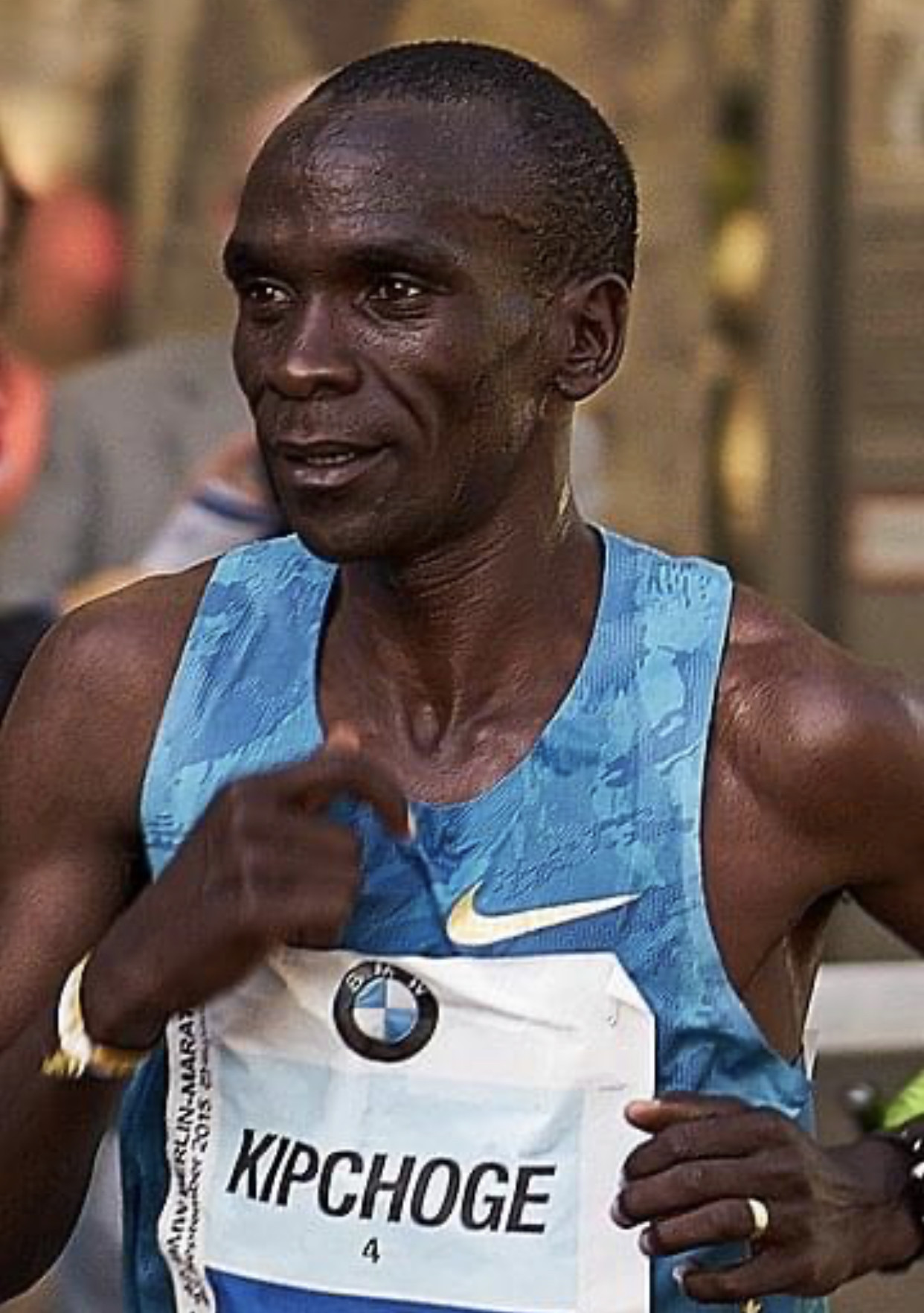
“By finding a hotel for exclusive use and putting in place the strict testing, hygiene and security measures to protect the bubble, we are confident we have created the safest environment possible for everyone,” Brasher said.
The race will be held over 19 laps on a 2.15K-closed course around St. James’s Park plus an extra 1,345 meters to the usual finish line. To keep the competition secure, no spectators will be allowed on the course.
The London Marathon, originally scheduled to run in April, is the first World Marathon Major to take place since the coronavirus was declared a global pandemic on March 11 (the Tokyo Marathon staged an elite-only race on March 1). Outside of running, the NBA became the first professional sports organization to start back up, creating a bubble in Orlando, Florida, in an effort to protect players during a three-month season.
For many athletes, the London Marathon will be their first major competition of 2020 due to COVID-19 restrictions, which forced many events to be postponed or canceled.
The men’s race features a highly-anticipated match-up between world record-holder Eliud Kipchoge and 2019 Berlin Marathon winner Kenenisa Bekele. In Berlin, Bekele came within two seconds of breaking the 2:01:39 world record set by Kipchoge at the 2018 Berlin Marathon.
Brigid Kosgei leads the women’s field after breaking the world record at the 2019 Chicago Marathon. She will be competing in her first race since the RAK Half Marathon in February when she finished second to Ababel Yeshaneh who broke the half marathon world record.
Americans Sara Hall, Molly Seidel, Lindsay Flanagan, and Jared Ward will be competing in London as well.
On August 7, Hall ran an impressive half marathon personal best of 1:08:18 with two male pacers and two of her daughters following at a distance in a race staged by Eugene Marathon organizers.
In February, Seidel made her first Olympic team in her 26.2 debut when she finished second at the U.S. Olympic Marathon Trials in Atlanta. Flanagan finished 12th at the Olympic Trials.
For Ward, a 2016 Olympic marathoner, London will be his first major marathon since finishing 27th at the Trials.
While the 40th running of the London Marathon will feature elites only, 45,000 people signed up to participate in the virtual 26.2.
(09/06/2020) ⚡AMPby Runner’s World
TCS London Marathon
The London Marathon was first run on March 29, 1981 and has been held in the spring of every year since 2010. It is sponsored by Virgin Money and was founded by the former Olympic champion and journalist Chris Brasher and Welsh athlete John Disley. It is organized by Hugh Brasher (son of Chris) as Race Director and Nick Bitel...
more...'I must've got really fast and tall overnight:' Kevin Hart slams NBC for mistaking him for Olympic gold medallist Usain Bolt
NBC admitted to a 'technical error' which posted a picture of Kevin Hart on a story about Olympic Gold Medallist Usain Bolt
Kevin Hart has ridiculed NBC for mistaking him for Olympic gold medallist Usain Bolt.
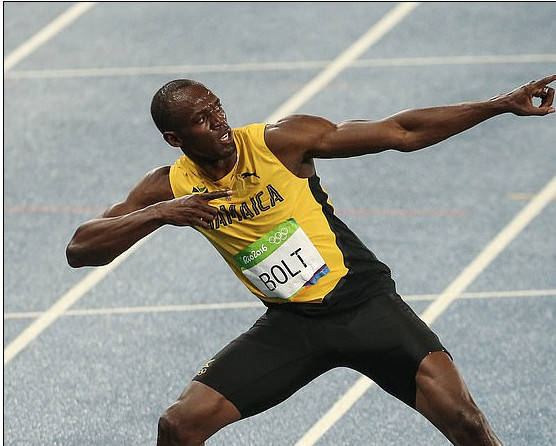
On Tuesday, the media outlet incorrectly attached a photograph of Hart to a Facebook alert titled: 'Usain Bolt, the fastest man alive, tests positive for coronavirus.'
'No comment,' Hart wrote on Instagram on Tuesday, followed by a series of face palm emojis.
'I must of gotten really fast & tall overnight....I want to take advantage of this moment & race anybody in the world. We can bet whatever ... I am also no longer doing comedy due to my Olympic training schedule.'
The error has since been fixed, but Hart described it as 'disrespectful on so many levels'.
NBC News rectified the mistake and shared a message blaming a 'technical error'.
The network said: 'Due to a technical error, the social image on this post mistakenly featured a photo of comedian Kevin Hart.
'In the content management system, a social image was not selected, and the system reverted to an image of Hart from an unrelated video. The display image has been corrected.'
Jamaica's minister of health officially confirmed this week that eight-time Olympic gold medallist Bolt had tested positive for coronavirus and is isolating at home in Jamaica.
'It is now public knowledge that Mr. Bolt has tested positive,' Christopher Tufton told reporters.
'He has been formally notified, I'm told by the authorities. It triggers an approach to questioning, interrogation if you will, which we follow through with contact tracing.'
It came after he reportedly held a party to celebrate his 34th birthday.
Other Hollywood figures who have shared their coronavirus stories this year include Idris Elba, Antonio Banderas, Pink, Bryan Cranston, Lena Dunham, and many more.
(09/06/2020) ⚡AMPTokyo Olympics Marathon Course To Be Measured By End of Year, Test Event Planned
At a press conference in Sapporo on June 23, the organizing committee of the 2020 Tokyo Olympic Games announced plans to have the Olympic marathon course in Sapporo measured and certified before the end of the year. The announcement marked a return to preparation for the Olympics, which had been suspended due to the ongoing coronavirus crisis.
The organizers also plan to stage a test event on the course next year at some point from March through May. Organizing committee executive Yoshiro Mori commented, "Whether it will be a half or full marathon is still a topic for discussion." City officials have responded positively to requests for use of Ohori Park and other locations, and confirmed that road work on the marathon course is expected to be mostly completed in July this year.

With major marathons canceled, Emily Sisson chose a virtual one
When Emily Sisson stepped off the U.S. Olympic Marathon Trials course on Feb. 29, she would not have predicted the wait would be eight months until her next race.
Even more unusual: Sisson will contest her next marathon as a solo runner.
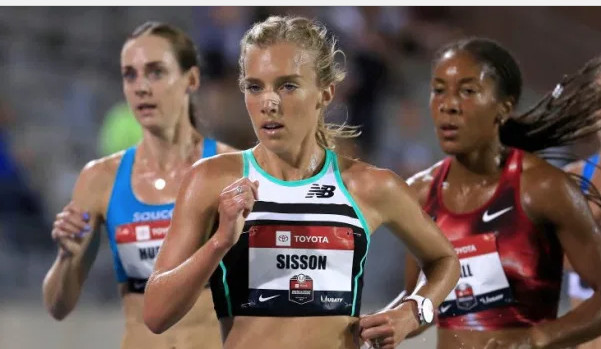
She’s a headliner among the elites signed up for the Virtual New York City Marathon, where runners can cover a distance of their choice any time and any place between Oct. 17 and Nov. 1. The in-person five-borough event was canceled due to the coronavirus pandemic.
Sisson, a 28-year-old based in Arizona, plans to run exactly 26.2 miles for the virtual competition with no prize money (Sisson is sponsored by New Balance, which is a New York Road Runners partner). She said last week that she was still deciding on her route.
“It’s hard to find somewhere where I can get 26.2 miles without having to stop for traffic,” she said.
Sisson originally planned to race the in-person New York City Marathon. When it was canceled in June, she was left in a foreign state — training without any competitions on the horizon. She was eager once told about the virtual option.
“Obviously, a virtual race can’t completely replace the New York City Marathon,” she said. “But it’s something to put on my schedule, to work towards and train for right now.
“That’s the reward for working really hard.”
Sisson, after her marathon debut in London in April 2019, spent last fall and winter with Leap Day circled. She flew to Atlanta among the contenders to make the three-woman U.S. Olympic marathon team. Many tapped her the overall favorite.
But her legs felt off early on the hilly course, Sisson shared on the Ali on the Run podcast in April. Tightness crept up around mile 11. She looked at the elites around her. Laura Thweatt was bounding. Des Linden was floating.
Sisson’s quads were taking a beating. She was dropped around mile 20 and, by mile 22, stepped off the course and into the arms of her husband, Shane Quinn.
“It sounds dramatic, but that was probably the most disappointing race I’ve had in my career,” she said last week. “I’ve never had to drop out of a race before. I’ve also never blown up like that in a race before. Take that back, I fainted once. I’ve never had a race where I performed so far off where my fitness level was.”
Sisson implemented the plan B that coach Ray Treacy discussed the night before. If your chances of finishing top three are done, pull the rip cord and save your legs for the 10,000m at the track trials in June.
Sisson’s legs were “destroyed.” She took three weeks off from running, consulting with a chiropractor while weighing the risk of that long of a rest. She also knew that the Olympics were under threat of postponement, which eventually was announced on March 24, three and a half weeks after the marathon trials.
The U.S. Olympic marathon team of Aliphine Tuliamuk, Molly Seidel and Sally Kipyego is expected to remain in place for next year. The track trials are now in June 2021. Sisson will race this virtual 26.2 miles, then will probably focus on the 10,000m. Her unfinished business in the marathon — the in-person variety — will be on the agenda after the Tokyo Games.
Sisson will set at least one personal best this year. Her virtual marathon will be her longest-ever solo run, though Quinn will likely ride a bike alongside her. She will put on headphones and probably listen to music.
“It’s hard hitting pause on a low,” Sisson said, reflecting on the Atlanta trials. “It’s nice to have something else right now.”
(09/06/2020) ⚡AMPDonavan Brazier pulls plug on 2020 season due to nagging plantar fasciitis
The 800m world champion went undefeated in his fractured 2020 season
According to a report from The Oregonian, 800m world champion Donavan Brazier is bringing his 2020 outdoor season to a premature close following persistent issues caused by plantar fasciitis. As his coach Pete Julian told The Oregonian, Brazier’s right foot has been bugging him for a while now, and they finally agreed it was time to take a break. Despite this issue, Brazier has had a stellar 2020 season. He went undefeated this year, and he has a 10-race winning streak that extends back into 2019.
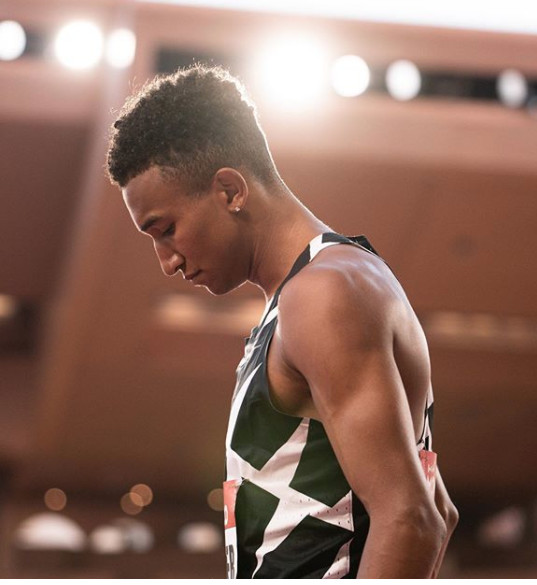
As has been the case with all athletes, the 2020 season was a strange one for Brazier. He opened the year with a couple of indoor meets (including a win in the 800m at the Millrose Games in New York City). Then the season came to an abrupt halt, and he wasn’t able to race until the summer. He resumed his season in early July and has been on fire since, winning every race that he has entered. The first few events were smaller runs with limited fields, but in recent weeks he has raced in Europe against a number of the world’s best athletes.
In just nine days, he won three big meets, including two Diamond League races. On August 14, he won the 800m at the Monaco Diamond League event. A few days later, he won the 600m at the Continental Tour Gold meet in Hungary. Later that week, he was back on the Diamond League stage in Stockholm, where he wrapped up his season with another big win in the 800m.

Julian told The Oregonian that he was happy to let Brazier continue racing through the summer with the plantar fasciitis, which is “one of those types of injuries that most runners can relate to,” he said. “[It’s] not bad enough to stop but not good enough to bring fuzzy happiness. It’s all always about finding the right combination of what you can and cannot do.” When it came to what he could do, Brazier managed pretty well. With all of his wins and his undefeated record this year, he has shown the world that he’s still the runner to beat heading into the next summer, by which time he should be in peak shape to take on the world’s best in Tokyo.
(09/06/2020) ⚡AMPby Running Magazine
Adidas, ASICS and Nike boost anti-doping programme ahead of road running return
World Athletics’ road running season will recommence this month with an improved anti-doping programme thanks to the financial support of three major shoe companies.
The Athletics Integrity Unit (AIU) revealed that Adidas, ASICS and Nike have agreed to inject money into the Road Running Integrity Programme, meaning more than 300 platinum and gold label athletes will be monitored and tested during the coming season.

The 2020 schedule is due to resume on Sunday (September 6) with the Vidovdanska Trka 10km and is set to feature the Virgin Money London Marathon on October 4 – the same day as the Kosice Peace Marathon in Slovakia.
Last year, the AIU reached an agreement with the Abbott World Marathon Majors which pledged to provide additional funding for intelligence-led anti-doping investigation and testing programmes.
The Road Running Integrity Programme has been expanded this year with contributions from other key stakeholders of the road running community – the organisers of all Label races, athlete representatives and the three shoe companies.
More than 350 out-of-competition tests were carried out by the AIU during the first three months of the year.
But due to the decreased number of races in 2020 following the COVID-19 outbreak, the programme has been adapted.
"When we put together this programme, we had no forewarning of how disruptive the coronavirus pandemic would be to the road racing calendar this year," Brett Clothier, head of the AIU, said.
"Despite the very many other challenges this has created for Label races, agents and shoe manufacturers, not least financially, we’re delighted that these funding contributors remain committed to this anti-doping programme.
"Race cancellations have allowed us to reduce the annual budget in these exceptional circumstances and make smaller demands on some of our contributors than they initially agreed but even the directors of cancelled races have been willing to continue making some contributions to a programme that will protect the integrity of their events in years to come.
"We are pleased that these three shoe companies also recognise that this programme is crucial to the health of the sport, both ethically and commercially, and are willing to support it.
"Their collaboration will allow us to build an even stronger integrity platform for 2021, when we hope that the sport can resume on a more normal footing."
Jon Ridgeon, chief executive at World Athletics, added: "The cooperation that we are seeing between the different commercial stakeholders, including some of the shoe companies, to support the integrity of our sport, is an important development for the future of road racing and I would like to thank them for their commitment."
One of the key features of the programme for 2020 includes an overall registered testing pool of 305 athletes with the majority of those believed to be from Kenya and Ethiopia.
The top 40 runners (20 male and 20 female) are set to be tested in accordance with an advanced intelligence-led testing programme that is appropriate to their 2020 racing calendar.
The remaining 265 athletes will be subject mainly to group testing specifically for the purpose of establishing their athlete biological passport (ABP) profile.
The AIU, in conjunction with the two National Federations and the National Anti-Doping Agencies in Ethiopia and Kenya, is also expected to support educational activities across the 305 athletes, utilising digital resources, leaflets, virtual conferences and face-to-face seminars, when and where they are safe to conduct, for the remainder of the year.
"This approach is a practical response to the unique circumstances we currently face with regards to road running," Clothier added.
"There was clear feedback from the key stakeholders, that, despite the financial difficulties, the sport does not want to raise the white flag on anti-doping and when the sport does return to a more normal level of competition in the future, it should be with a strong integrity platform still in place."
(09/06/2020) ⚡AMP
Kenya's Olympic 1,500m champion Faith Kipyegon to take on Genzebe in Ostrava
After settling for another world record near-miss in the Brussels Diamond League on Friday, Kenya's Olympic 1,500m champion Faith Kipyegon is set to resume her special rivalry with Ethiopian Genzebe Dibaba at the World Athletics Continental Tour Gold meeting in Ostrava on Sept. 8.
Having finished just 17 hundredths of a second short at last month's opening Diamond League meeting in Monaco, Kipyegon seemed on track to achieve her ambition with 200 meters remaining, but faltered slightly over the final few meters to cross the line in 2:29.92.

The Kenyan now will return to her 1,500m specialty against Dibaba with hope of continuing her perfect start to Diamond League series at the Ostrava Golden Spike (Czech Republic) on Tuesday.

"I'm happy with the win, the record didn't come out as we had planned but I'm satisfied with my general performance, now I will concentrate on the next competition, the Ostrava meeting," Kipyegon told Xinhua on Saturday.
Meanwhile, Kenya's world marathon record-holder Brigid Kosgei's track debut ended in disappointment after losing the battle to The Dutch world 1,500m and 10,000m champion Sifan Hassan who went to break the World Hour record after she reached 18,930 meters as the hour elapsed, beating the existing mark of 18,517 meters set by Ethiopia's Dire Tune in 2008.
Kosgei was later disqualified for infringement after she was found to have stepped on the rail.
In the men's One Hour event, Britain's and Olympic champion Mo Farah held off the challenge of his training partner, home athlete Bashir Abdi, to set a new mark of 21,330m - eclipsing the 2007 mark of 21,285m set by Haile Gebrselassie. Abdi finished eight meters behind.
(09/05/2020) ⚡AMPThe Vodafone Istanbul Half Marathon is set to be run on September 20
The Vodafone Istanbul Half Marathon will be held on Sept. 20 with a limited number of athletes.
A total of 2,500 athletes will be able to run in the Vodafone Istanbul Half Marathon.

Participants will have two options in the organization. They can either run a distance of 21 kilometers (13 miles) on the streets of Istanbul's historical peninsula or they can run alone on their own track in Turkey's first virtual half marathon.

The virtual half marathon will run on Sept. 19 or 20, aiming to minimize the risk of infection by the novel coronavirus during the event.
Those who want to join in the virtual race will receive a special running code after signing in on their website
They will complete their registration after paying a fee for the category of the race -- either 21 km or 10 km (6 miles).
After the race, participants may send their data to Spor Istanbul on its mobile application.
(09/05/2020) ⚡AMPby Ercan Dogan
N Kolay Istanbul Half Marathon
The Istanbul Half Marathon is an annual road running event over the half marathon distance (21.1 km) that takes place usually in the spring on the streets of Istanbul, Turkey. It is a IAAF Gold Label event. The Istanbul Half Marathon was first organized in 1987. After several breaks it was finally brought back to life in 2015 when the...
more...Kenyan Peres Jepchirchir smashes half marathon World Record in Prague
The Kenyan middle-distance runner had only herself to race in Prague after breaking away from the pack after 20 minutes
Kenyan runner Peres Jepchirchir has smashed the women-only race half marathon world record at the Prague 21.1KM on Saturday.

The 26-year-old clocked 1:05:34 over 16.5 laps of Letna Park’s oval course to obliterate Netsanet Gudeta’s previous best mark of 1:06:11, set at the 2018 World Half Marathon Championships.

Jepchirchir broke away from her rivals after just 20 minutes, passing 10 kilometres in 30:32. The lack of pacemakers started to show as her pace slowed in the second half of the race, but she still finished well under the previous record.
“I thank God… I’m so excited… I’m satisfied with the result although I thought I could have run 64:50, but I thank God for what He has given me,” the 26-year-old told reporters after the race.
“It was difficult to run alone. If I could have had (good) pacemakers, I could have run 64.”
This is Jepchirchir’s second world record over the distance. In 2017 she clocked 1:05:06 in a mixed-race in Ras Al Khaimah, UAE - a record which stood for just under two months.
Later at the Prague 21.1km, the men are hoping to break 58:30, a time surpassed only twice in history.
While there was no record broken in the men's race, victorious Kenyan Kibiwott Kandie did manage a Personal Best time of 58:37.
Jep chirchir’s achievement comes a day after another record-breaking event at the Brussels Diamond League on Friday 4th September, where Sifan Hassan and Mo Farah set new one hour world records.
Dutchwoman Hassan, who won 10,000m gold at last year's World Championships, covered a distance of 18.930km, while four-time Olympic champion Farah broke Haile Gebrselassie's one-hour world best to set a new mark of 21.330km.
(09/05/2020) ⚡AMPPrague Half Marathon
Start the RunCzech season with one of the biggest running events in the Central Europe! Every year the Sportisimo Prague Half Marathon excites spectators with performances of elite athletes breaking records. Enjoy a course with incomparable scenery in the heart of historic Prague that follows along the Vltava river and crisscrosses five beautiful bridges. Take in majestic views of the...
more...The Enduring Mystery of Muscle Cramps
A new study suggests that strength training is more important than electrolytes for preventing cramps
Any discussion of muscle cramps needs to start by revisiting retired baseball infielder Munenori Kawasaki’s detailed explanation of how he avoided a repeat of the cramp that had hobbled him the previous day.

Kawasaki: Monkey never cramps. Because a monkey eat every day banana. Two.
Interviewer: So how many did you have today?
Kawasaki: Three.
I love that interview so much that it pains me to cast doubt on his advice. It’s based on the traditional view of exercise-associated muscle cramps, which attributes them to dehydration and the loss of electrolytes like sodium and potassium (which bananas contain in abundance) from prolonged sweating. That theory dates back almost a century, and it remains dominant: a survey of 344 endurance athletes, published last year, found that 75 percent of them believed that taking extra sodium wards off muscle cramps.
The problem is that science keeps failing to back this theory up. Starting more than a decade ago, a series of studies has compared crampers with non-crampers at marathons, triathlons, and other endurance races and has failed to find any differences in the athletes’ hydration or electrolyte levels. Instead, a rival theory blaming cramps on “altered neuromuscular control” first proposed in the 1990s by Martin Schwellnus, a sports physician at the University of Cape Town in South Africa, has been gaining support. The basic idea: it’s a nerve problem that occurs in excessively fatigued muscles, essentially leaving a switch temporarily stuck in the on position.
But this theory, too, has a problem: unlike the electrolyte theory, it doesn’t give us an obvious solution or countermeasure to prevent cramps. The closest thing so far is a product called HotShot, a spicy drink developed by Flex Pharmaceuticals that triggers some of the same nerve receptors as pickle juice (long known as a folk cure for cramps) and hot peppers. There’s a bit of evidence from a HotShot-funded study published by Penn State researchers in 2017 that this jolt to the nerves makes your muscles a little more cramp-resistant and shortens the duration of cramps stimulated in the lab. But it’s hardly a panacea; even in that study, all the subjects still ended up cramping. Schwellnus himself warned that muscle cramps are a complex phenomenon with many different contributing factors, so we shouldn’t expect a simple solution.
What we’re left with is a search for factors we can control that might influence cramp risk. That’s the goal of a new study in the Journal of Strength and Conditioning Research from a research team at the University of Valencia and Jaume I University in Spain. It recruited 98 runners preparing for the Valencia Marathon, ran them through a series of tests before and after the race, and looked for differences between crampers and non-crampers. Some of the results were predictable, while others were surprising.
The good news, from the study’s perspective, is that 20 of the runners suffered muscle cramps during or immediately after the race. A total of 84 runners (72 men and 12 women) completed all the pre- and post-race testing, which means that 24 percent of them cramped, with similar rates in men and women. That’s roughly consistent with the stats from other races. Once again, urine and blood tests found no differences in dehydration or electrolyte levels before, during, or after the race.
Instead, the biggest difference was in the blood levels of creatine kinase and lactate dehydrogenase, both markers of muscle damage, which were significantly elevated immediately after the race and 24 hours later in the crampers. For example, day-after creatine kinase averaged 2,439 international units per liter. in the crampers compared to 1,167 in the non-crampers. This, too, is consistent with previous studies, suggesting that cramps occur in muscles that are fatigued to the point of damage.
The harder question is what predisposes some runners more than others to this kind of damage. One previous study suggested that crampers actually start the race with elevated muscle damage, perhaps because they didn’t back off their training enough. In this study, though, there was no sign of elevated muscle damage in the pre-race testing and no difference in the amount of time between the final training run and the start of the race.
In fact, most of the training variables the team assessed—the runners’ number of previous marathons, weekly training volume, and so on—were the same in both groups. Just one differed: 48 percent of the non-crampers reported regular lower-body resistance training compared with 25 percent of the crampers.
Another often discussed risk factor for cramps is pacing. A few previous studies have found that runners who end up cramping tend to have started the race more quickly compared to their eventual average pace, suggesting that they’re paying the price for overestimating their fitness. There’s a problem with this type of analysis, however: the cramp may cause the late-race slowdown rather than the other way around.
To get around this issue, the Valencia researchers brought all their subjects in for a VO2-max test prior to the marathon. This allowed them to assess their starting pace relative to their actual fitness instead of relative to their eventual finish time. Here’s what the average speed for each 5K segment looked like for the crampers (black circles) and non-crampers (white circles), as a fraction of speed at VO2 max:
There are no significant differences between the groups until after the 25K mark. If anything, the crampers started a little bit slower relative to their lab-measured fitness. This punctures the idea that cramps are a punishment for bad pacing. I apologize for any cramp-shaming I’ve done in the past: it wasn’t your fault after all. Unless you were neglecting your lower-body strength training, that is. The obvious news-you-can-use nugget from the new study is the apparent protective effect of resistance training. I got the same advice a few years ago from Juan Del Coso, the author of an earlier study that implicated muscle damage in late-race slowdowns: he suggested leg exercises such as squats with loads to up to 80 percent of max to protect your legs from damage.
But at this point, it’s probably worth recalling Schwellnus’s note of caution. People get cramps for all sorts of reasons, including underlying injury, disease, and medication side effects. The exercise-associated cramps you get during a running race may be influenced by some of these secondary factors. They may also be influenced by your genes: one of the best predictors of cramping is whether you’ve cramped in the past. And despite the paucity of evidence, it’s entirely possible that, in some people, traditional risk factors like dehydration or electrolyte depletion may play a role. So before I get too excited about squats as the new miracle cure, I’d like to see whether a few months of strength training actually reduces cramp risk in a randomized trial.
It’s tricky to get those sorts of studies funded, though—there’s no pharmaceutical money, no sports-drink money. So for now, if you’re struggling with recurring cramps, you’re left with trial and error. It’s worth giving strength training a shot (and not just for its cramp benefits). I’d be open to giving HotShot a try, too. And, hey, whatever the evidence says, I love bananas.
(09/05/2020) ⚡AMPby Outside Online
Runner tapped by black bear on popular B.C. path
A runner got the closest thing to a bear high-five we've ever seen
The interaction was filmed by a fellow runner, Sam Abdullah, who reported the incident to B.C. Conservation Officer Services. While the bear tap was kind of cute, almost high-five like, conservation officers told the CBC that this is atypical behaviour and that a healthy amount of fear is normal for bears and good for the safety of runners. “The concern is that if the bear is losing its fear of humans, it could become more of a danger.”runner in Coquitlam, B.C. had an encounter with a bear on Saturday, but it was different than other bear attacks. CBC reports that around 11 a.m., a runner was descending the popular Coquitlam Crunch path when a bear emerged from the bushes, tapped her leg and then allowed her to continue running.

If runners encounter a bear, they’re advised to back away slowly and make themselves big. Having a friend along is also recommended for safety. Runners can learn more at WildSafeBC.com. While these encounters are rare, they do happen and the best practice for runners is to know how to react in a way that’s safe for everyone.
https://youtu.be/Pwmi3cM7mg0
(09/05/2020) ⚡AMPby Running Magazine
Hassan and Farah break one-hour world records in Brussels
Britain's Mo Farah and Sifan Hassan of the Netherlands set respective men’s and women’s world one-hour records* at the Wanda Diamond League exhibition meeting at the King Baudouin Stadium tonight.
Britain’s multiple world and Olympic champion held off the challenge of his training partner, home athlete Bashir Abdi, to set a new mark of 21,330m – eclipsing the 2007 mark of 21,285m set by Haile Gebrselassie. Abdi finished eight metres behind.
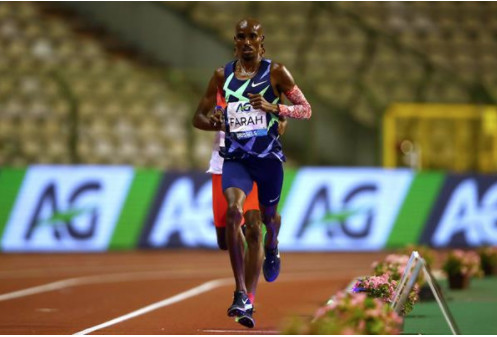

Hassan’s record also came after a titanic battle with Kenya’s world marathon record-holder Brigid Kosgei, although it later transpired the latter had been disqualified for stepping on to the infield in the closing stages.
The Dutch world 1500m and 10,000m champion reached 18,930 metres as the hour elapsed, beating the existing mark of 18,517 metres set by Ethiopia’s Dire Tune in 2008.
Moving into the final quarter of an hour, Tune’s mark seemed certain to be bettered, given that both women were more than a minute ahead of world record pace. The only question remained – which champion would secure it?
As they shadowed each other, swapping the lead but never getting away from each other, it was impossible to predict who would triumph. Hassan said afterwards that she thought Kosgei would “run away from her”.
But when the gun went to mark the final minute with the pair halfway down the back straight, Hassan moved ahead once more, and this time it was decisive.
Looking once behind her, the Dutch athlete took off, pumping her arms, going for broke. Kosgei, baring her teeth, did everything in her power to stay in touch, but there was no catching up, and when the 60 minutes elapsed, Hassan slowed to a halt halfway down the back straight after a crazy sprint finish.
"I didn't feel good before the start of the race, I even puked," revealed Hassan. "After 30 minutes of racing, I finally felt better. It was in the final 20 minutes that I gained the confidence I needed. When there were only two minutes left on the clock, the fun began. I just gave everything I had left. I am so happy with the win and the world record. It wasn't easy."
As the men’s race moved into the final quarter of an hour, the ghostly figure of the current world record holder, Gebrselassie, was shown in virtual shape, running at their side. They were bang on the pace.
With 10 minutes to go, they moved ahead of the world record schedule. They passed 18,000 metres in 50:43.
Inside the final five minutes, the home runner, who the day before had confessed that he expected Farah to beat him, moved to the lead, but the multiple champion was shadowing him still.
As advertised, the Wavelight visual pace-guidance system employing differently coloured LED lights installed on the inside edge of the track made the pursuit of records on the night immediately intelligible.
With three minutes remaining, both men were 30 metres clear of the leading blue lights, showing the intended pace, and the green lights snaking behind them, showing the actual world record pace.
A second world record appeared in the offing – and the same question was being asked. Who would break it?
The gun went to mark one minute to go, then Farah made a significant break. He charged around the bend as the final seconds ticked away, and at the same spot where Hassan had earlier triumphed, Farah did too, taking a few seconds to realise it was all over.
“The world record is yours, Mo!” said the stadium MC.
Abdi had the consolation of lowering the world best for 20,000m from 56:26 to 56:20.2*, having led his friend through that mark.
"I was very excited to be back on the track," said Farah. "I knew I was in a great shape after the hard work I did in the last six weeks. At a certain point, with just 10 laps to go, it became tough so I was happy that Bashir took the lead, but I felt great with just one minute to go. A fast last lap is still my best tactic."
Kenya’s Olympic 1500m champion Faith Kipyegon had to settle for another near miss as she attempted to beat the world 1000m record of 2:28.98 set on this track in 1996 by Russia’s double Olympic champion Svetlana Masterkova.
Having finished just 17 hundredths of a second short at last month’s opening Diamond League meeting in Monaco, Kipyegon seemed on track to achieve her ambition with 200 metres remaining, but faltered slightly over the final few metres to cross the line in 2:29.92.
Norway’s 19-year-old European 1500m champion Jakob Ingebrigtsen, who has already reduced the European record to 3:28.68, made a bold effort to improve on that but his honourable solo effort saw him finish in 3:30.69, with Jesus Gomez of Spain a distant second in 3:34.64.
In the pole vault, Sweden’s 20-year-old world record-holder Mondo Duplantis saw the last challenger, home vaulter Ben Broeders, fall away with a best of 5.70m.
The European champion then went on to clear a meeting record of 6.00m at his first attempt before having another crack at 6.15m, a centimetre higher than the best outdoor clearance ever made, by Sergey Bubka in 1994. He didn’t make it. But surely his time will come sooner rather than later.
Twenty-year-old Rani Rosius, who had won the Belgian title in 11.39, needed 11.43 to earn another prestige victory in the women’s 100m, with France’s Carolle Zahl second in 11.56.
Britain’s world heptathlon champion Katarina Johnson-Thompson had said the day before that this meeting – where she was competing in the 100m hurdles and the high jump – was effectively the highlight of her season, and she had a reasonably satisfactory result in the first of them, which was won by home champion Anne Zagre in 13.21.
Despite an uncertain start, Johnson-Thompson drew on her strength to take fourth place in 13.57 – inside her previous season’s best of 13.73.
Zagre was chased home by Denmark’s Mette Graversgaard, who clocked 13.26, and Belgian compatriot Sarah Missinne, who ran a season’s best of 13.55.
Johnson-Thompson went on to equal her season’s best of 1.84m in a high jump won by Australia’s Nicola McDermott with 1.91m.
Poland’s Iga Baumgart-Witan won the women’s 400m in 52.13, while the men’s 200m went to Italy’s Eseosa Desalu in 20.39.
(09/05/2020) ⚡AMPby Mike Rowbottom for World Athletics
Kenya commits to new World Athletics' anti-doping program
Kenya is backing World Athletics' (WA) new testing program that was launched on Tuesday targeting top road runners in marathon, half-marathon and long distances.
With the running calendar slowly resuming amid global COVID-19 setbacks, WA's anti-doping watchdog Athletics Integrity Unit (AIU) is stepping up measures to increase testing of athletes in Kenya.
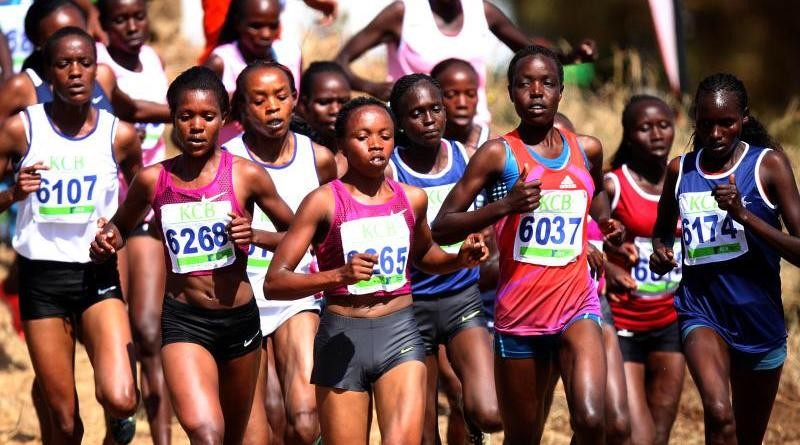
Kenya which currently has laws to criminalize doping in the country, has been embroiled in doping scandals involving its top runners.
Some of the country's top athletes serving sanctions for the doping offices includes 2008 Beijing Olympics 1,500m champion Asbel Kiprop, 2016 Rio Olympics women's marathon champion Jemimah Sumgong, and former three-time Boston Marathon champion Rita Jeptoo, among others.

"We have been informed that the AIU is going to organize a number of group testing sessions specifically for road runners. The sessions will be held at a number of locations across Kenya during September," the country's athletics running governing body Athletics Kenya said in a statement on Thursday.
"Athletics Kenya is providing them with all the required logistical support for a smooth and safe conduct of these activities in line with health guidelines of our government. We are hundred percent committed to supporting the AIU in its aim of protecting the integrity of our sport," it said.
The group testing sessions will include some advance-notice testing, where the main focus will be on building the profiles of athletes for the Athlete Biological Passport (ABP) program.
The samples collected from these athletes will be used to establish the initial values for their ABP profiles before regular non-notice target testing resumes on a much more extensive basis in 2021.
(09/04/2020) ⚡AMPGreen light for Czech races
Every day there is a new change in coronavirus restrictions and we are constantly looking for solutions on how to organize a safe event.
We set up a meeting with representatives of Liberec and Ústí nad Labem regions and their corresponding hygiene station last week. We can happily announce that we have received a green light for organizing the Mattoni Ústí nad Labem Half Marathon (September 19) and the Mattoni Liberec Nature Run (October 4).
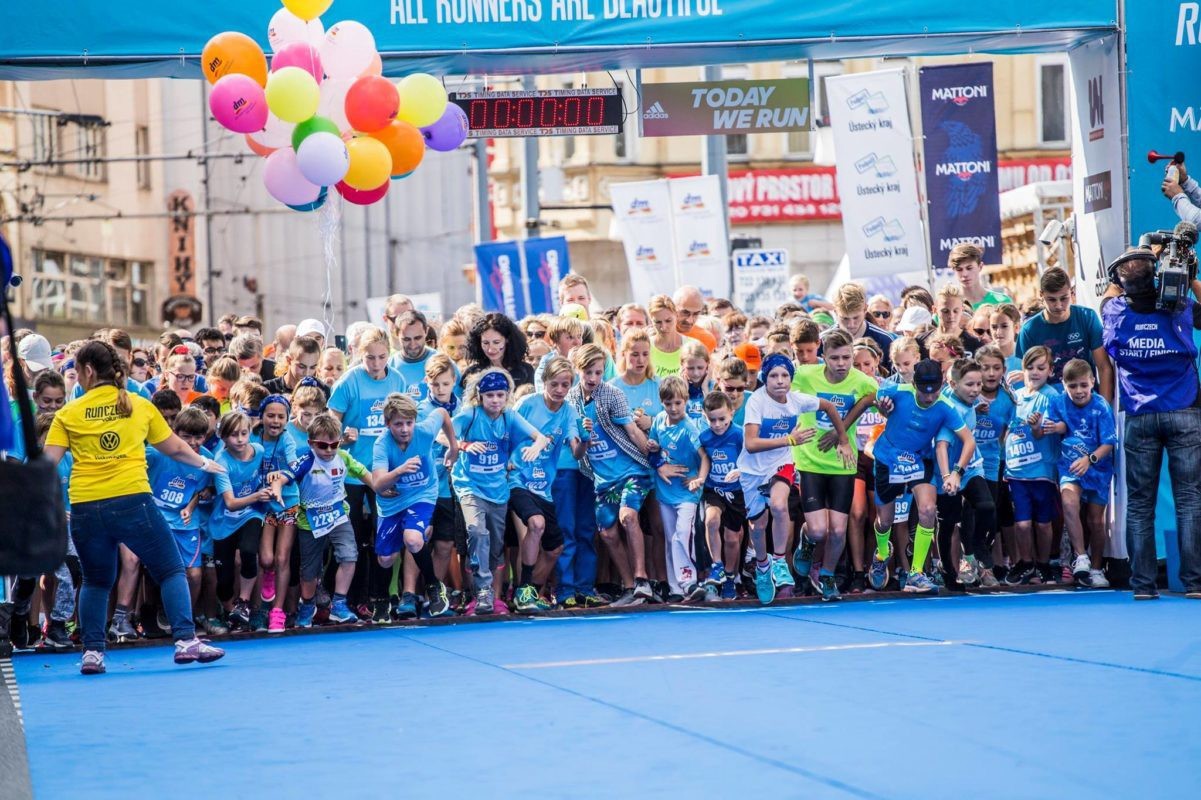
We can’t wait to see you at the starting line and then release you to the course. However, there will be some regulations that all of us have to follow for maintaining safe conditions:

Masks will be mandatory to wear during the pick-up of start numbers, in the technical area and in start and finish corridor
The start of the race will be operated in several stages (starts will be divided after few minutes) – There will not be any showers or taping zone in technical area (lockers and depository will remain, but the amount of people will be limited)
There was a modification in timings of racing day to avoid groupings of runners from various races (times were updated at our website)
There will be limitations of some products at refreshment stations
We will send you more specific steps and regulations by email just before the race. We would like to ask you to follow these instructions. We strongly believe that none of them will affect your joy after you cross the finish line. You still have a chance to participate in a top-class race, whether you choose to run through an industrial area or granite quarry. Thank you for understanding and we are looking forward to seeing you all.
If you are going to participate in later races (the Mattoni Half Marathons in Olomouc, Karlovy Vary and ÄŒeské BudÄ›jovice) please wait for more information. Meetings are being held in the following week.
(09/04/2020) ⚡AMPMattoni Usti nad Labem Half Marathon
Enjoy the urban run at the Ústí Half Marathon. The course leads alongside the river Elbe opening a view to impressive rock formations, Strekov castle and then crossing the area of a chemical factory which is a perfect example of industrial architecture of the First Republic. The Ústí nad Labem Half Marathon is an annual half marathon race which takes...
more...2021 registration for Boston Marathon has been Postponed
Registration for the 2021 Boston Marathon has been postponed, the Boston Athletic Association announced Thursday. Registration was supposed to take place in September, but has been delayed due to the COVID-19 pandemic.
The B.A.A. also announced the formation of the COVID-19 Medical & Event Operations Advisory Group, which is comprised of medical, public safety, and race operations experts, as well as city and state officials. The group will establish a framework to advise the B.A.A.’s leadership, board of directors, and staff on when, and how, the Boston Marathon and other large, in-person B.A.A. road races can be held safely again.

“COVID-19 has affected mass participation road races in ways that we never could have imagined,” said Tom Grilk, C.E.O. of the B.A.A. and co-chair of the advisory group. “Convening this cross-sector group of professionals with decades of experience in epidemiology, viral infection, mitigation strategies, and our own race operations was entirely necessary to begin planning for the 125th Boston Marathon.”

The Medical & Event Operations Advisory Group will recommend strategies that address the health and safety of participants, volunteers, staff, and community members. Recommendations will be developed in accordance with the most current guidelines issued for large-scale events by the World Health Organization and Centers for Disease Control. The group will develop framework for the B.A.A. that addresses risk factors specific to the Boston Marathon including size and other local and international considerations for the pandemic. Outcomes, including an updated registration timeline for the 125th Boston Marathon, will be shared.
“We seek to determine with some specificity how and when large-scale road running events organized by the B.A.A. may be able to reasonably resume, while also providing input on which operational aspects will change as events are organized and managed,” said Dr. Aaron Baggish, Co-Medical Director for the B.A.A. and Boston Marathon, Director of the Cardiovascular Performance Program at the Massachusetts General Hospital Heart Center, and co-chair of the advisory group.
“September is usually a time for the B.A.A. to begin opening registration for April’s Boston Marathon and planning for an already established field size. We know, however, that we cannot open registration until we have a better understanding of where the virus may be in the spring. This group will be immensely helpful in helping the B.A.A. determine a safe return to in-person running events of magnitude,” said Grilk.
The 2020 Boston Marathon, originally scheduled for April 20, was postponed to September 14 by Boston Mayor Martin Walsh due to the COVID-19 pandemic. On May 28, following Mayor Walsh’s announcement cancelling the marathon as a live, mass participation road running event, the B.A.A. announced the Boston Marathon would be held as a virtual event from September 5 to 14.
(09/04/2020) ⚡AMPBoston Marathon
Among the nation’s oldest athletic clubs, the B.A.A. was established in 1887, and, in 1896, more than half of the U.S. Olympic Team at the first modern games was composed of B.A.A. club members. The Olympic Games provided the inspiration for the first Boston Marathon, which culminated the B.A.A. Games on April 19, 1897. John J. McDermott emerged from a...
more...Jerusalem marathon cancels 2020 event race due to the pandemic
The Jerusalem Marathon hosts approximately 35,000 participants from Israel and abroad and is a world renowned sporting event.
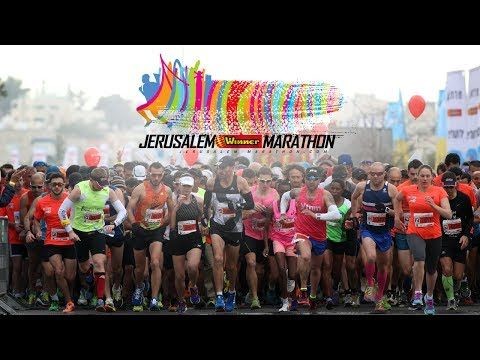
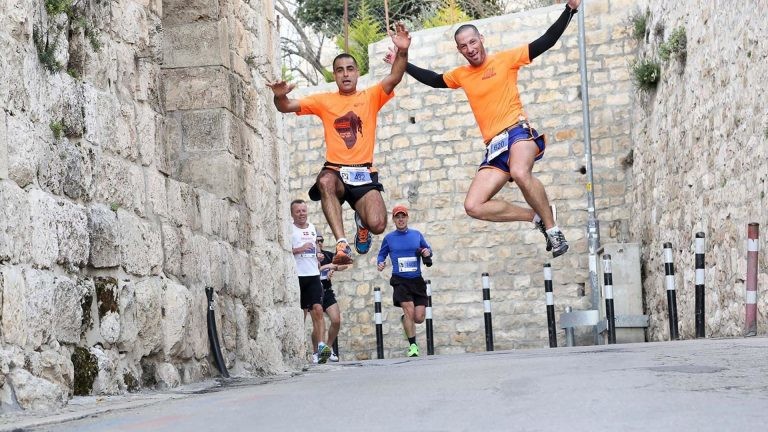
Following the second wave of coronavirus, the Jerusalem Municipality, in accordance with the Ministry of Health, has decided to cancel the 2020 Jerusalem Winner Marathon.
The event, which had been delayed since March, was set to take place on November 6. The next Jerusalem Winner Marathon is set to take place March 3, 2021 and will be the 10th annual Jerusalem Marathon.
(09/03/2020) ⚡AMPJerusalem Marathon
First held in 2011, the Jerusalem International Winner Marathon has become a major event with 30,000 participants, of which hundreds are elite competitors and runners from abroad. The course was especially selected to recount Jerusalem's 3,000-year historical narrative since the beginning of its existence. The race challenges runners while exposing them to magnificent views, exquisite landscapes and fascinating historical sites...
more...World marathon record holder Eliud Kipchoge given the power to read
Ancient Greek philosopher Plato once said: “Books give a soul to the universe, wings to the mind, flight to the imagination, and life to everything.”
And with the elite-only October 4 London Marathon basically down to a battle of mental strength, Kenya’s defending champion Eliud Kipchoge has always stressed the importance of training the mind. There couldn’t be a better way to do this than read, read and read.

That’s why a consignment of books to Kipchoge’s Kaptagat training camp on Wednesday, courtesy of Sports Cabinet Secretary Amina Mohamed, couldn’t have come at a better time.
Last year, while on a visit to Kipchoge’s Global Sports Communications camp, CS Amina promised to help equip the camp’s library to keep athletes busy after training. The books eventually arrived and were handed over to Kipchoge by Kenneth Boit on behalf of the CS.
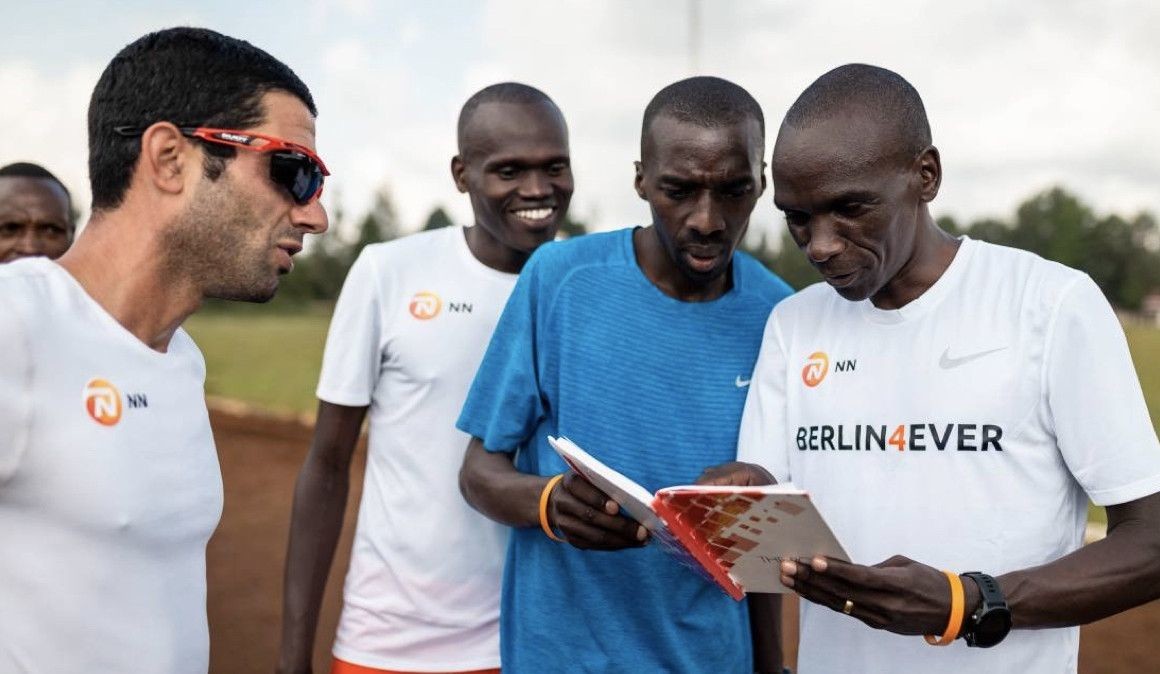
Resumption of sports
“My training is going on well, although this time it was different from what we are used to due to the Covid-19 pandemic whereby all camps were closed and I have been training alone," said Kipchoge.
The Olympic champion and world record holder is looking forward to the resumption of sports saying many athletes are suffering because almost all competitions were cancelled.
"We look forward to resumption of sports because this is what athletes depend on and it has been hard for many of them to put food on the table. Competition is slowly coming back and we hope things will normalise soon and the virus shall be contained,” said Kipchoge.
(09/03/2020) ⚡AMPby Bernard Rotich
Elite athletes will be protected in bio secure bubble for 2020 Virgin Money London Marathon
The Virgin Money London Marathon today announced plans for the biosecure bubble for the historic elite-only races on Sunday 4 October.
The races will take place on a closed-loop circuit around St James’s Park in central London on Sunday 4 October. The elite men’s race will see one of the most eagerly anticipated match-ups in marathon history with world record holder and defending champion Eliud Kipchoge (KEN) going head-to-head with Kenenisa Bekele (ETH), the man who came within two seconds of his world record last year.
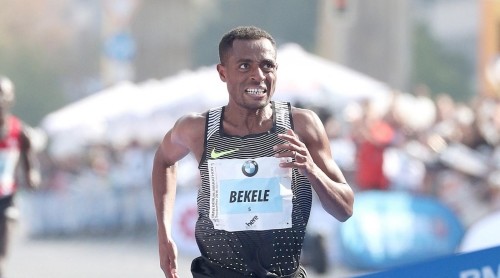
In the elite women’s race, defending champion and world record holder Brigid Kosgei (KEN) will return, as will the two best marathon wheelchair athletes in the world: Daniel Romanchuk (USA) and Manuela Schar (SUI).
Special permission has been granted by the Department for Digital, Culture, Media and Sport (DCMS) to allow athletes and support staff to travel and compete in the biosecure bubble, with strict guidelines on testing, travel, accommodation and competition.

Flora also announced that Paula Radcliffe, who famously won three London Marathon titles and broke two world records when Flora was headline sponsor of the event, has become an official Flora Running Ambassador to mark the partnership.
In order to create and preserve a biosecure bubble around the athletes, the following measures will be put in place:
Testing: Athletes will be tested for Covid-19 in their country of origin/home four days prior to travel and again on arrival at the hotel. Testing will continue at the hotel until the Friday before the event. Anyone who tests positive for Covid-19 or displays symptoms will be placed in quarantine immediately and, in the case of athletes, will not be able to participate in the race.
Athlete-only hotel: The athletes will stay in a hotel outside London which will be used exclusively by athletes and support staff, plus a team from the Virgin Money London Marathon. The hotel was chosen for its 40 acres of grounds where athletes will be able to train during Race Week inside the bubble. An extensive hygiene protocol will be in place in the hotel and it will be mandatory for everyone inside the bubble to observe social distancing rules and to wear face coverings at all times, apart from when training, while dining and in their own rooms. All athletes and their support staff will have single rooms.
Hugh Brasher, Event Director of the Virgin Money London Marathon, said: “We are extremely grateful to the Government, the Department for Digital, Culture, Media and Sport (DCMS), The Mayor of London, The Royal Parks and all our stakeholders for helping us put on the 2020 Virgin Money London Marathon for elite athletes. Sports fans all over the world are eagerly anticipating these great races in this unique environment.
“It is our duty and responsibility to ensure this event is held in a safe and secure environment. We have looked at other examples and taken learnings from other sports which have returned to action as we developed our detailed plans for this biosecure bubble around the event.
“By finding a hotel for exclusive use and putting in place the strict testing, hygiene and security measures to protect the bubble, we are confident we have created the safest environment possible for everyone.”
The Virgin Money London Marathon also revealed details of the course for the elite races at the 2020 Virgin Money London Marathon.
Each race will comprise 19 x 2.15 kilometre clockwise laps of St James’s Park plus an extra 1345m with the Finish Line in its traditional place on The Mall.
2020 Virgin Money London Marathon elite race route map
The course will be sealed off from the public to maintain the integrity of the biosecure bubble. There is no spectator access and there will be no public viewing points along the course.
(09/03/2020) ⚡AMPTCS London Marathon
The London Marathon was first run on March 29, 1981 and has been held in the spring of every year since 2010. It is sponsored by Virgin Money and was founded by the former Olympic champion and journalist Chris Brasher and Welsh athlete John Disley. It is organized by Hugh Brasher (son of Chris) as Race Director and Nick Bitel...
more...Joshua Cheptegei targets world 10,000m record in Valencia
World 10,000m champion Joshua Cheptegei hopes to create another magical moment in his rising career as he plans an assault on the world 10,000m record at the NN Valencia World Record Day on Wednesday 7 October at Turia Stadium in Valencia, Spain.
The one-off event aims to capitalise on the Ugandan’s stunning recent form, which last month saw him lower Kenenisa Bekele’s world 5000m record in Monaco. In Valencia, Joshua will be targeting the stunning mark of 26:17.53 set by Kenenisa in Brussels 15 years ago – the longest standing men’s 10,000m world record in history.

As a further measure of the quality of the world 10,000m record, no athlete other than Bekele has come within five seconds of the time. But following Joshua’s 1.99-second improvement on the Ethiopian’s 5000m mark in Monaco, the Ugandan will be confident he can mount a strong challenge in Valencia.
“I am very excited to be given the opportunity to target the 10,000m world record,” said Cheptegei, whose current personal best for the distance is 26:48.36. “As my performance in Monaco showed, I am in outstanding form, so I would like to make the most of my current shape by attacking the 10,000m world record.

“Kenenisa’s 10,000m world record is one of the toughest in the books, but my training continues to go well and this gives me real confidence I can set another world record. I have many happy memories in Valencia, having set the world 10km road record there last year, so hopefully we can once again create something truly special in Valencia, were running plays such an important role.”
In an attempt to add the 10,000m world record to the 5000m track world record and his current world road records over 5km and 15km, Cheptegei will be utilising world-class pace making support as well as the innovative Wavelight technology.
Following his world record bid in Valencia, Cheptegei plans to make his debut over the 21.1km distance at the rescheduled World Athletics Half Marathon Championships Gdynia 2020 on 17 October.
(09/03/2020) ⚡AMPby World Athletics
Peres Jepchirchir and Sheila Chepkirui are set to clash in Prague
When it became clear that it wouldn’t be possible to hold the Birell Grand Prix in Prague, organisers of the World Athletics Gold Label road race set about creating an alternative event. After much planning, RunCzech has been given the green light to stage the Prague 21.1km, an invitation-only elite half marathon on a looped circuit in Letna Park in the Czech capital on 5 September.
Thirty-five of the world’s best road runners will be in action on Saturday morning, running 16-and-a-half laps of the 1280m course. The men’s race will start at 6:20am local time, and then the women’s race will begin at 8:00am. The event will be broadcast live on Czech Television and spread to the whole world.

It is hoped that the flat course and intense competition will lead to fast times. The Czech all-comers’ records stand at 58:47 for men and 1:04:52 for women. As the women’s race is being held separate from the men’s, they may also have their eye on breaking the women-only world record of 1:06:11.
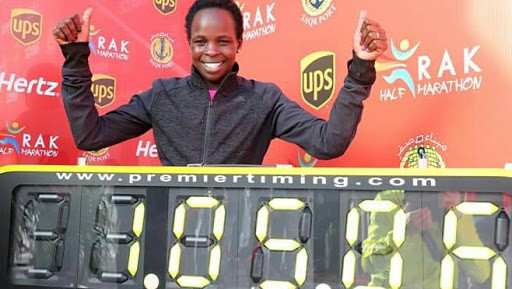
Peres Jepchirchir, the 2016 world half marathon champion, leads the women's field. The 26-year-old Kenyan set a world record of 1:05:06 – which has since been broken – back in 2017, then became pregnant and gave birth to her daughter later that year. She returned to form in 2019, winning the Lisbon Half Marathon in 1:06:54.
Sheila Chepkirui may have the slowest official PB of the field, but that’s largely due to the fact she has contested just one half marathon to date and it was at altitude in Nairobi. Given her record at other distances – including her two sub-30-minute clockings for 10km, one of which was in Prague – the 29-year-old Kenyan will be one of the big favourites this weekend.
Ethiopia’s 2015 world 5000m silver medallist Senbere Teferi and Kenya’s Edith Chelimo are the two other sub-66-minute runners in the women’s field.
Joan Melly Chelimo and Netsanet Gudeta had originally been set to compete, but both are late withdrawals due to injury.
With nine sub-60-minute performers, the men’s field is also of an extremely high standard.
Stephen Kiprop finished third in Prague last year, just two months after clocking a lifetime best of 58:42 to win the Ras Al Khaimah Half Marathon. He stands equal sixth on the world all-time list, but he’ll be up against Kibiwott Kandie, another sub-59-minute runner, and two-time Prague winner Benard Kimeli.
Kandie won this year’s Ras Al Khaimah Half Marathon in a world-leading 58:58, just six days after winning the highly competitive Kenyan cross-country title. Kimeli, who won in Prague in 2018 and 2019, turned to track racing in July and was rewarded with a 5000m PB of 13:16.61.
Others in the field with the potential for a top-three finish include Ethiopia’s two-time Delhi Half Marathon winner Andamlak Belihu, 59:28 performer Philemon Kiplimo and fellow Kenyan Abel Kipchumba.
“The pandemic has deprived these great athletes of the chance to participate in races all across the world,” said Carlo Capalbo, president of the organising committee. “We wanted to find a way of doing something spectacular for everyone. While this race is coming at what would normally be the end of the season, we hope in a way that it will be the start, a spark that gets race organisers all over the world thinking creatively about how to keep the sport alive.”
(09/03/2020) ⚡AMPby World Athlietics
Prague Half Marathon
Start the RunCzech season with one of the biggest running events in the Central Europe! Every year the Sportisimo Prague Half Marathon excites spectators with performances of elite athletes breaking records. Enjoy a course with incomparable scenery in the heart of historic Prague that follows along the Vltava river and crisscrosses five beautiful bridges. Take in majestic views of the...
more...Ethiopian and Kenyan runners to renew rivalry in Prague's half marathon
The World Half Marathon records are at stake as Kenyan and Ethiopian runners take over the Prague half-marathon on Saturday with the resumption of road races after the COVID-19 disruptive season.
The organizers have assembled a strong field in both men's and women's events with the sole aim of breaking men's 58:30 and women's 1:06:01.

The star-studded half-marathon is limited to 35 of the most celebrated distance runners in the world currently.

Men and women will compete separately, running on a flat, fast oval course through Letna Park in Prague in 16.5 laps. A course and a field designed to wage an all-out assault on the current world record.
Two Kenyan women, Peres Jepchirir and Edith Chelimo, will be up against Ethiopian's world half-marathon women-only record holder Netsanet Gudeta.
However, the men's race sees the withdrawal of the 2018 Prague half-marathon champion Joan Chelimo who cited unpreparedness.
Stephen Kiprop, Kibiwott Kandie and Benard Kimeli, all from Kenya, will be aiming to break the world record of 58.01 currently being held by their compatriot Geoffrey Kamworor.
Kandie holds the fastest time of 58:58 this year when he won the RAK Half in the UAE in February.
"Assembling this field of runners turned out to be a monumental feat. And that was only the start. Ensuring their health and safety posed other challenges. But we have established a set of protocols designed to make sure that no one is compromised," said Carlo Capalbo, the president of the Runczech organizing committee in a press statement on Tuesday.
(09/03/2020) ⚡AMPPrague Half Marathon
Start the RunCzech season with one of the biggest running events in the Central Europe! Every year the Sportisimo Prague Half Marathon excites spectators with performances of elite athletes breaking records. Enjoy a course with incomparable scenery in the heart of historic Prague that follows along the Vltava river and crisscrosses five beautiful bridges. Take in majestic views of the...
more...General entries to the first virtual Virgin Money London Marathon have sold out
General entries to the first virtual Virgin Money London Marathon have sold out with 45,000 places taken up for this unique version of the world’s greatest marathon.
Following the announcement that the London Marathon could not take place in its usual format on Sunday 4 October, runners across the UK – and worldwide – were invited to complete The 40th Race – Your Way.

Participants have 23 hours 59 minutes and 59 seconds to run, jog or walk the 26.2 mile distance on the course of their choice, anytime from 00:00 to 23:59:59 BST on Sunday 4 October. A new app is being developed, powered by TCS, to enable participants to log their 26.2 miles and earn the unique finisher medal and New Balance finisher T-shirt.
Priority was given to runners and charities with places in the 2020 event and then general entries opened on Wednesday 26 August.
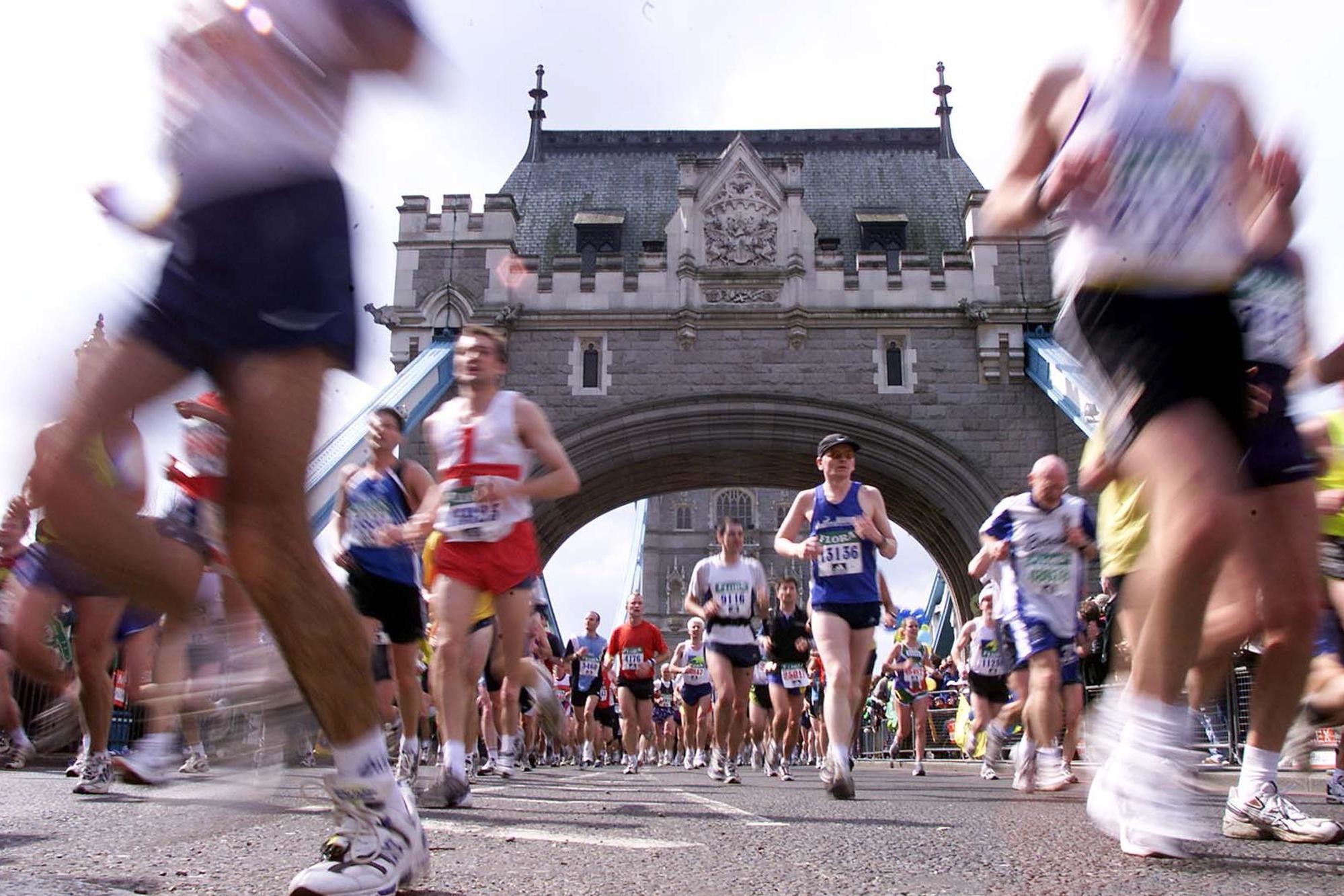
The 20,000 general entries were snapped up by runners from 81 different countries, 51 per cent women and 49% men. Outside the UK, the biggest number of entries came from Australia, Hong Kong and the USA.
Hugh Brasher, Event Director for the Virgin Money London Marathon, said: “The response has been amazing and the spirit of the London Marathon will shine brightly across the globe on Sunday 4 October.
“London is the most popular marathon on the planet with more than 457,000 people applying in the ballot for the 2020 Virgin Money London Marathon. This first virtual London Marathon, The 40th Race, has offered a unique chance for runners around the world to earn that coveted finisher medal and T-shirt and we believe it is the biggest virtual marathon ever staged. It is also the most inclusive race in our history with runners having 23 hours, 59 minutes and 59 seconds to complete the 26.2 miles.
“We hope that millions will be raised for charities by our participants and we look forward to sharing their stories.”
There are a limited number of charity places left for the virtual Virgin Money London Marathon.
(09/02/2020) ⚡AMPTCS London Marathon
The London Marathon was first run on March 29, 1981 and has been held in the spring of every year since 2010. It is sponsored by Virgin Money and was founded by the former Olympic champion and journalist Chris Brasher and Welsh athlete John Disley. It is organized by Hugh Brasher (son of Chris) as Race Director and Nick Bitel...
more...The Rock ‘n’ Roll Montreal Marathon series cancelled for 2020 and 2021
With the next two editions of the Montreal event cancelled, it's fair to assume the race series might never make a comeback in Quebec.
The Rock ‘n’ Roll Marathon Series announced on Friday that the Marathon International de Montréal has been cancelled for 2020 and 2021. The Montreal race, which was scheduled for September 19 and 20, is the only Canadian event in the global series. With this pair of cancellations, it looks like the Rock ‘n’ Roll series might not return north of the border in the foreseeable future, even after 2021.
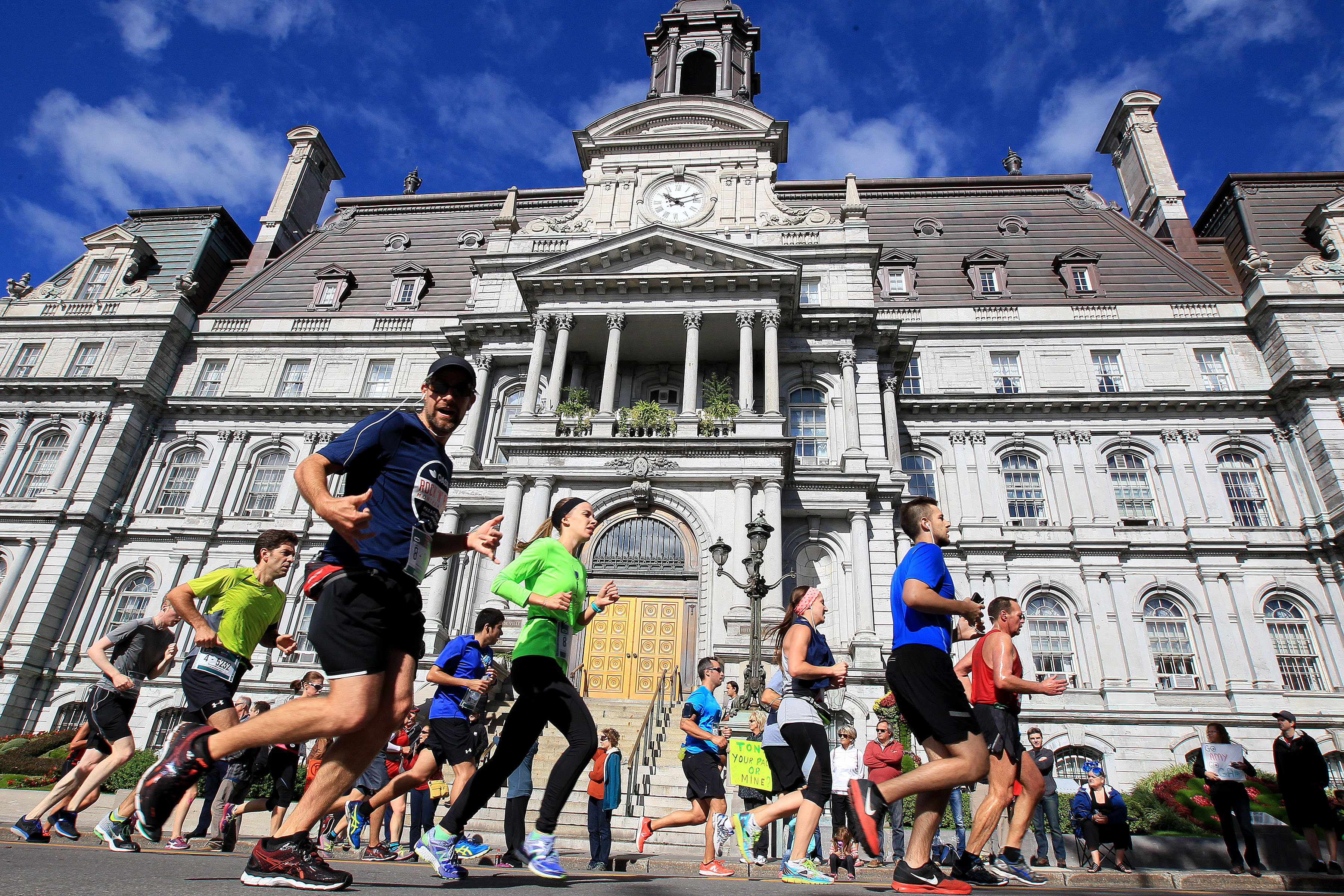
This year’s running would have been the 30th edition of the Marathon International de Montréal, but the fate of that anniversary race is now uncertain.
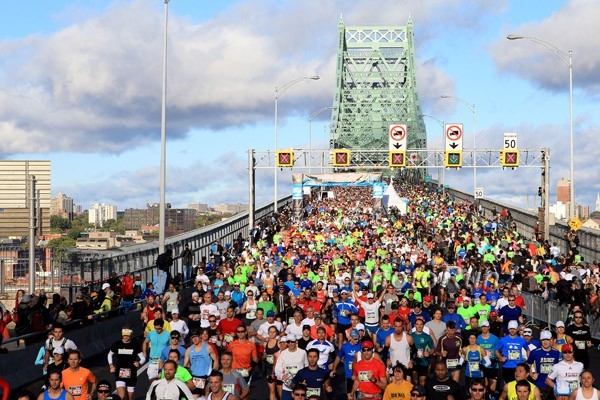
The Marathon International de Montréal normally features four events over two days, and runners could choose between a 5K, a 10K, a half-marathon or a full marathon. In 2019, these races attracted more than 18,000 people, with 9,500 runners in the half and 3,100 in the full.
This year, due to COVID-19 restrictions from the Government of Quebec, Rock ‘n’ Roll organizers were forced to pull the plug on the popular race. In the cancellation announcement, organizers added that “after evaluating the future viability of the Marathon International de Montréal, we have concluded that we cannot operate the event in 2021.”
The announcement went on to apologize to runners who had already registered for the event and to thank the city for its help in years past. Other Rock ‘n’ Roll races have been cancelled in 2020, but runners signed up for many of those events have been told they will be returning.
Rock ‘n’ Roll events in San Diego, Seattle and Savannah, Ga., already have dates set for 2021, and while nothing is set for the Las Vegas race, organizers said they are “determined to come back … even stronger in 2021.” Others have said they cannot return in 2021, but they’re already set to be run in 2022, such as races in New Orleans and Florida.
Montreal joins Rock ‘n’ Roll events in Colorado and New Jersey, to name a couple, that were cancelled this year and next with no promise of a 2022 race.
(09/02/2020) ⚡AMPby Ben Snider-McGrath
ROCK N ROLL MONTREAL
Start on the iconic bridge of Montreal, whose name is in homage to the French Explorer who discovered Canada, Jacques-Cartier. Kilometers 1 to 10 of St. Helena Island and Notre Dame Island, admire the stunning views of Montreal across the river and enjoy the entertainment on the course along the shore of two islands. Kilometers 16 a 17 City Hall...
more...Tarzisius Caviezel, will take over the presidency of the Swissalpine Association
There will be a changing of the guard at the Swissalpine. Tarzisius Caviezel, will take over the presidency of the Swissalpine Association from founder and longtime president Andrea Tuffli.
“The time has come for a succession plan,” says Tuffli. When he launched the Swissalpine in 1986 as an ultramarathon over 67km with an altitude difference of more than 2200m, many thought it crazy. Although there were high alpine mountain runs in Switzerland back then, a run in such terrain and over such a long distance was new in Europe. However, the Swissalpine quickly established itself and became known internationally as the ultimate challenge.

That Tuffli is now giving up management of the club is not only due to his age of 78 years. At the end of July this year a new Königslauf, the K68, was launched at the Swissalpine. The new route was met with universal enthusiasm.
The K68 will establish itself as the new Swissalpine classic over the next few years. The framework of the Swissalpine with the K68, the K43 and the K23 is largely fixed. After the slimmed-down event held this year on July 27 the supporting and adventure programme will be restarted in the future if Coronavirus conditions allow it.

Caviezel, with roots in Davos, will take over the presidency of the Swissalpine Association on 1 January 2021. Since the beginning of 2013 and until the end of the current year he has been working as Landammann (Chief Magistrate of the Canton). “Caviezel has excellent connections in politics, business and sport,” says Tuffli. From 2004 to 2011 Caviezel held the presidency at HC Davos.
“The Swissalpine is a brand that is associated with Davos and belongs to Davos,” notes Caviezel. He makes no secret of the fact that he had some doubts when the T88 was started in St. Moritz in the previous two years. “For this year’s 35th event we decided to go back to our roots and that the Swissalpine is a pure Davos event,” Caviezel notes with satisfaction. This is also important because it guarantees support from Destination Davos Klosters. "We have to pull out all the stops to ensure that events like these, which originated in Davos and have grown successfully over decades, continue to be held here,” emphasises Caviezel. “As a Davos trademark, the Swissalpine is not yet as old as the HCD and the Spengler Cup, but it is also an excellent brand.”
Caviezel describes the K68, newly launched this year with start and finish in Davos, as the supreme discipline of the Swissalpine – “a dream run over four passes and through eight valleys. We will stick to this concept. ”The future Swissalpine President personally followed the events at the K68 premiere on 25 July on the Fanezfurgga at 2580m altitude. “The K68 is tough and rough . But all the runners and spectators I spoke to were enthusiastic about the new route,” says Caviezel. “I was also fascinated myself; you have to experience it up close.”
Originally, Gian Gilli was expected to succeed Tuffli as president, and the Engadiner is a proven and experienced specialist in major sporting events. But as part of the new concept for a purely Davos event Gian Gilli voluntarily resigned from the office. It also makes perfect sense to him that the Swissalpine Davos Association can be led into the future by a personality strongly anchored in Davos.
(09/02/2020) ⚡AMPSwiss Alpine Marathon
The Swissalpine Davos is not only the oldest marathon in Grisons but also the second-largest ultra-marathon in Switzerland. However, it is no longer just the races that are the main attraction. The point is to be part of the mountain-runner community that meets for the annual running event in the Alpine town of Davos. We call it «Swissalpine Spirit». ...
more...World under-20, 5,000m champion Edward Zakayo has shifted his focus to the 2020 Olympics Games in Tokyo
After missing out on a chance to represent Kenya at the postponed World U20 championships in Nairobi next year, world under-20 5,000m champion Edward Zakayo is has shifted his focus to the 2020 Olympics Games in Tokyo, Japan.
The Olympics and the U20 championships, both of which were set for last month, were postponed due to the coronavirus pandemic.
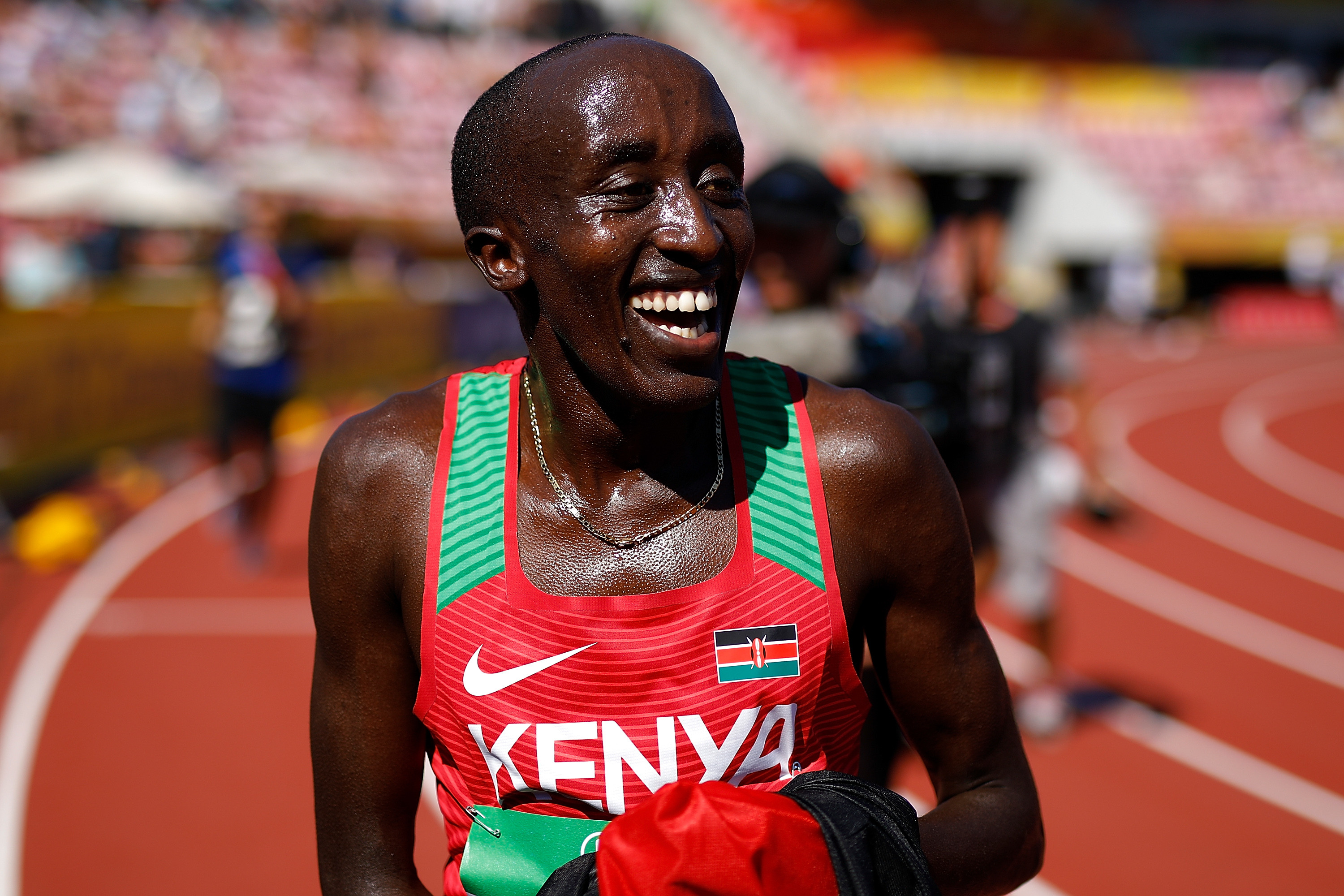
The 5,000m Olympic title has been proved elusive for Kenyan athletes since 1988 in Seoul, South Korea, when John Ngugi won the event.
However, Zakayo, the All Africa Games champion said: “It is a bad feeling after missing out on the world under 20 since I was prepared to win gold and close the junior ranks especially on home soil."

"I missed the world under 18 title in 2017 to Selemon Barega and I was not happy. Even though I have revenged twice, at the world under 20 in Tampere and at the All Africa Games, I was not satisfied at all.”
Speaking during the Athletics Kenya Food Distribution programme at the Kapsait training camp, the reigning Commonwealth Games 5,000m bronze medalist added: “The federation should supervise how the 5,000m runners train and help them like the Ugandan federation is helping Joshua Cheptegei (the world record holder over the distance)."
Apart from missing out on the world under 20, Zakayo will be forced to repeat Form Four and he fears this might prove a challenge to his ambitions.
"The national trials will be hard nut to crack. Without making it at the trials, you can’t feature in the national team for Olympics. Last year I missed out on the world championships in Doha, Qatar since despite featuring at the the All Africa Games, there were still trials to Doha,” added Zakayo.
(09/01/2020) ⚡AMPby Emmanuel Sabuni
Tokyo 2020 Olympic Games
Fifty-six years after having organized the Olympic Games, the Japanese capital will be hosting a Summer edition for the second time, originally scheduled from July 24 to August 9, 2020, the games were postponed due to coronavirus outbreak, the postponed Tokyo Olympics will be held from July 23 to August 8 in 2021, according to the International Olympic Committee decision. ...
more...The Prague half-marathon will be holding an elite-only event and announces world record attempt
Early this Saturday something very fast will be happening in the Czech capital of Prague.
RunCzech, organizer of the Volkswagen Prague Marathon and other top-class events, will be holding an elite-only half-marathon in Letná Park called the Prague 21.1 KM – Ready for the Restart. The objective? Get at least one man to break 58:30 and one woman to break the women-only world record of 1:06:11 on the special 16.5-lap course which will be closed to the public.
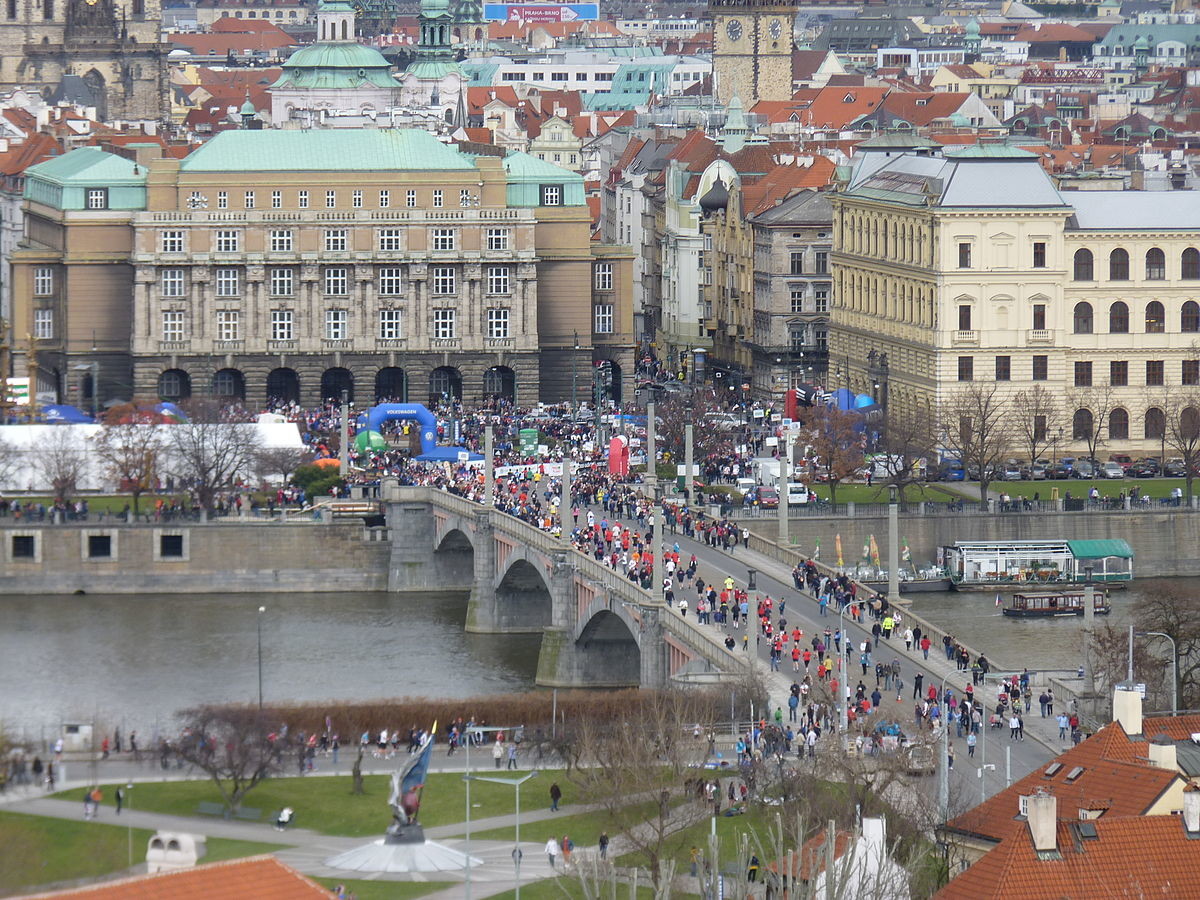
“The pandemic has deprived these great athletes of the chance to participate in races all across the world,” said RunCzech president Carlo Capalbo through a statement. “It has deprived us from witnessing some of the great performances that we’re accustomed to seeing. We wanted to find a way of doing something spectacular for everyone.”
Spectacular, indeed. Capalbo’s team has assembled a superb field of nine women and 18 men who will have the benefit of strong pacemaking. Five women on the entry last have broken 1:06:00 for the half-marathon, led by Kenyans Joan Chelimo, Peres Jepchirchir, and Edith Chelimo. Ethiopians Senbere Teferi and Netsanet Gudeta have also broken 66 minutes (see full athlete list below). On the men’s side, nine men have broke 60:00 led by Kenyans Stephen Kiprop, Kibiwott Kandie, and Benard Kimeli (see full list below).
Interestingly, the fastest times ever run on Czech soil are 58:47 by Ethiopia’s Atsedu Tsegay in Prague in 2012, and 64:52 by Kenya’s Joyciline Jepkosgei in Prague in 2017. Jepkosgei’s time was achieved in a mixed-gender race. The fastest times in the world this year are 58:58 by Kibiwott Kandie and 1:04:31 by Yeshaneh Ababel of Ethiopia. Both marks were achieved at the RAK Half in the UAE on February 21.

Saturday’s event will also be a demonstration project for adidas, a long-time partner of RunCzech. All of the athletes will be wearing the World Athletics-approved adizero adios Pro (39mm sole thickness) racing shoe. The shoe, which sells in the United States for $200 a pair, has an ultra lightweight mesh upper, LightStrike Pro foam, a carbon fiber heel plate, and five carbon-infused “energy rods” in the forefoot which, the company says, were “inspired by the bone structure of the foot.” The shoe weights 7.9 ounces (224 grams).
“adidas has 70 years experience of working with elite athletes on shoes designed to win races,” said adidas Running’s design vice-president Sam Handy through a statement. “Our expertise has continually evolved as athletes and sports science has progressed. This shoe is our pinnacle race product, representing all those decades of dedication, experience and collaboration.”
Capalbo is not only hoping for fast times, but is also trying to inject some life into road running which has been hit hard by the pandemic. While in-stadium athletics is already back to a high level, most road races have had to switch to “virtual” status, where athletes run on their own, or have simply been cancelled. Capalbo wants to show what is possible, even during a pandemic. Saturday’s event will be held in compliance with current Czech regulations for fighting COVID-19.
“While this race is coming at what would normally be the end of the (RunCzech) season we hope in a way that it will be the start, a spark, that gets race organizers all over the world thinking creatively about how to keep the sport alive.”
The Prague 21.1 KM – Ready for the Restart will be broadcast live on ÄŒT Sport, and there will be an international live stream with English language commentary.
(09/01/2020) ⚡AMPby David Monti
Prague Half Marathon
Start the RunCzech season with one of the biggest running events in the Central Europe! Every year the Sportisimo Prague Half Marathon excites spectators with performances of elite athletes breaking records. Enjoy a course with incomparable scenery in the heart of historic Prague that follows along the Vltava river and crisscrosses five beautiful bridges. Take in majestic views of the...
more...2021 Tokyo Marathon may be moved to fall due to coronavirus
Tokyo Marathon organizers are weighing the possibility of rescheduling next year's race to the fall, should the coronavirus appear likely to remain an obstacle by the usual date in March, sources close to the matter said Monday.

The organizers restricted this year's event to elite competitors in response to the coronavirus pandemic but have indicated they are against excluding general entry runners for a second year in a row.
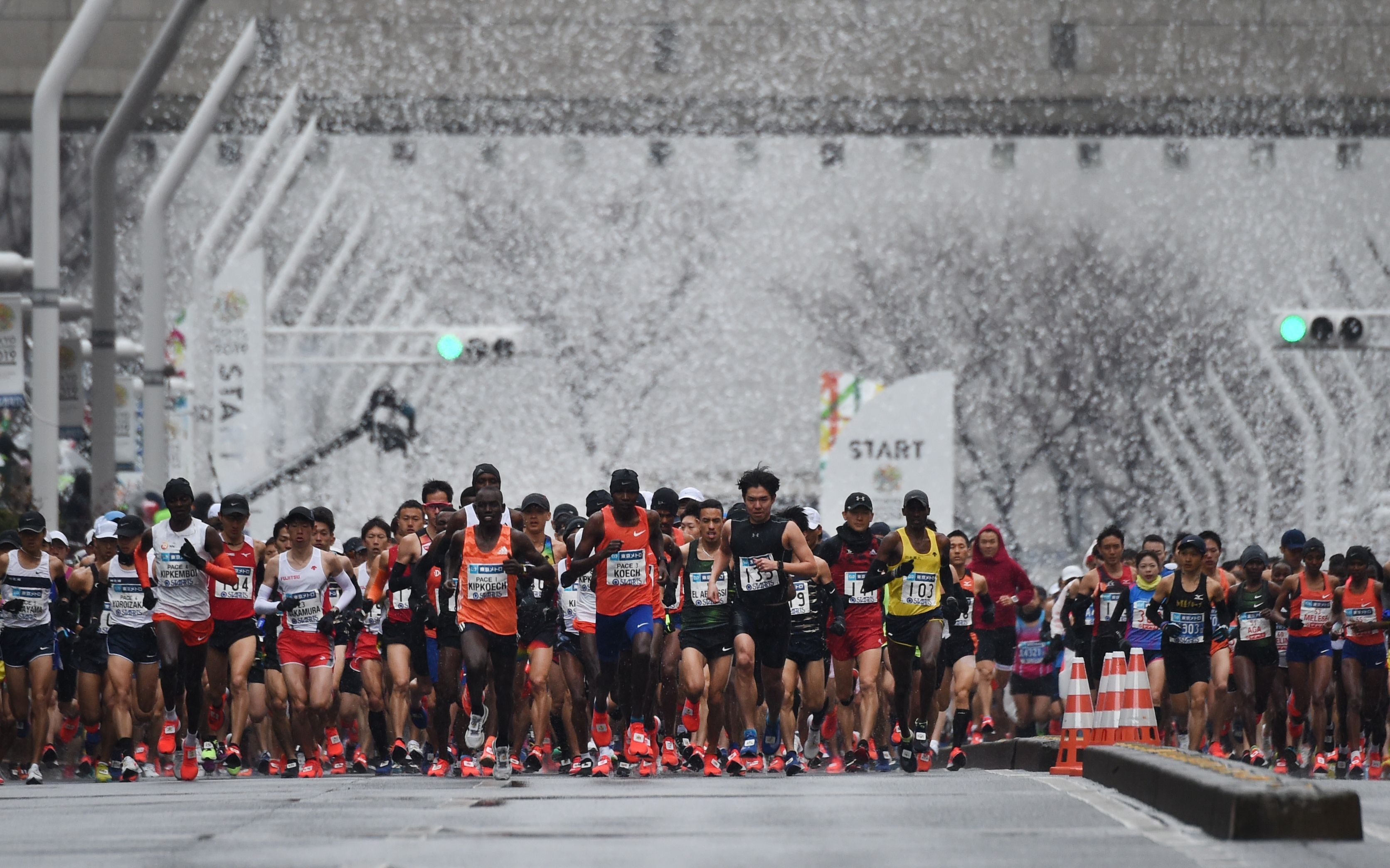
General entrants excluded from this year's race, after initially being accepted via lottery, were given automatic entry to next year's event, scheduled for March 7, or the 2022 event.
The Tokyo Marathon is one of the six World Marathon Majors. This year's races in Boston, Berlin, Chicago and New York have all been canceled, while the London Marathon will feature only elite runners after being postponed from April to October.
(09/01/2020) ⚡AMPTokyo Marathon
The Tokyo Marathon is an annual marathon sporting event in Tokyo, the capital of Japan. It is an IAAF Gold Label marathon and one of the six World Marathon Majors. Sponsored by Tokyo Metro, the Tokyo Marathon is an annual event in Tokyo, the capital of Japan. It is an IAAF Gold Label marathon and one of the six World...
more...Sir Mo Farah will be targeting a new record in Larne on September 12
Athletics legend Sir Mo Farah will race in the upcoming P&O Antrim Coast Half Marathon.
The four-time Olympic champion has confirmed his entry for the race in Larne on September 12.
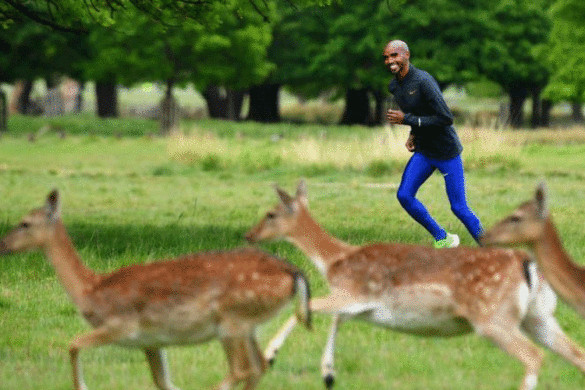
It is another major coup for the organizers who have assembled a stellar line-up of runners to compete in Northern Ireland.
The field also includes two-time world champions Aly Dixon and Iraitz Garro who will be joined by European champions Marc Scott, Jo Pavey and Gemma Steel.

"Hi guys, really looking forward to taking part in the Antrim Coast Half Marathon in Larne on September 12," Farah said in a video confirming his entry.
"One of my good friends James is organizing it and I said 'yes, I'll do it'. We have some great history. I am just really looking forward to it. I can't wait.
"Hopefully it is a fast course. It is really exciting."
Elite race organizers James McIlroy believes next month's field is one of the best ever assembled in Ireland or Britain.
"It is a brilliant line-up and we have a course to match; a very fast course which the runners will love," McIlroy said.
"We are looking forward to Sir Mo and the other elite runners coming over for a great race."
McIlroy added: "I have known Mo for over 20 years. We were room-mates when we were with Team GB, and before that at the UK Athletics High Performance Center.
"It is brilliant that Mo has cleared his diary to come here and race."
(09/01/2020) ⚡AMPby Gareth Fullerton
MEA ANTRIM COAST HALF MARATHON
The MEA Antrim Coast Half Marathon 2022 has been approved by World Athletics as an Elite Event. The World Athletics certified course takes in some of the most stunning scenery in Europe, combined with some famous landmarks along the route. With it's flat and fast course, the race is one of the fastest half marathons in the world. Starting...
more...Western States site name to be changed
After researching the etymology of the racist and sexist term "squaw," officials of the California ski resort have decided to change its name.
The famed Western States 100 ultramarathon starts in Squaw Valley, Calif., near a river, some roads and several ski lodges of the same name, which many have found troubling for its racist and sexist roots. The area is also known as Olympic Valley, as it was the site of the 1960 Olympics, but for years, locals and tourists have all called it by its other name. It was recently announced that this will soon change, as owners of the Squaw Valley Alpine Meadows ski resort have finally decided to drop that title.

“With the momentum of recognition and accountability we are seeing around the country, we have reached the conclusion that now is the right time to acknowledge a change needs to happen,” said Ron Cohen, the president and COO of Squaw Valley Alpine Meadows. “We have to accept that as much as we cherish the memories we associate with our resort name, that love does not justify continuing to use a term that is widely accepted to be a racist and sexist slur.” Cohen went on to say the resort will find a new name to “reflect our core values, storied past and respect for all those who have enjoyed this land.”

The Western States 100 starts right at the ski resort and travels 100 miles southwest to Auburn, Calif. Race director Craig Thornley tweeted the statement from Cohen and his team, adding, “It’s really gonna happen.” Thornley’s tweet received mixed reviews from his followers, with some people saying the name should have been changed long ago, while others seem to think it’s fine the way it is.
As a member of the Washoe Tribe (a Native American tribe with origins near Lake Tahoe), Helen Fillmore, told a local radio station in July, when she is around people discussing the local resort, all she hears are racial slurs.
“All of a sudden people are asking if you ski and telling you about how they’re going to go ski, racial slur. ‘Let’s go ski, racial slur,’” Fillmore said. “People don’t even think twice about how that word is impacting the person they’re talking to.” The dropping of the resort name will be welcome news to Fillmore and other members of the Washoe Tribe, although they have had to wait a long time for this change.
The resort’s new name will be released in early 2021, and officials say it will begin to be implemented after the 2020/2021 ski season, meaning that by June, when the Western States 100 is set to be held, the race’s start should be at a newly-named location.
(08/31/2020) ⚡AMPby Ben Snider-McGrath
Western States 100
The Western States ® 100-Mile Endurance Run is the world’s oldest and most prestigious 100-mile trail race. Starting in Squaw Valley, California near the site of the 1960 Winter Olympics and ending 100.2 miles later in Auburn, California, Western States, in the decades since its inception in 1974, has come to represent one of the ultimate endurance tests in the...
more...Ryan Hall plans to run his first ultramarathon in Colorado
Ryan Hall retired from professional running in 2016, and since then, even though he has participated in a few races, his focus has been on powerlifting. On Saturday, Hall, the U.S. half-marathon record-holder, announced that he is getting back into racing, but instead of his once-preferred distances of 21K or 42K, he will be running a 69K race — his first crack at an ultramarathon.
To add to this already-daunting challenge, he will be racing after running just five times in 2020. The event, the Grand Traverse Mountain Run, is set to be held on September 5 in Crested Butte, Colo.
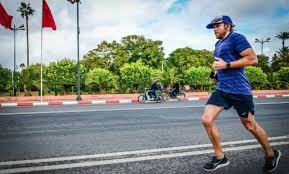
In an Instagram video announcing his race plans, Hall said the Grand Traverse will be an “epic challenge,” adding that he likes to “make it even more epic by not training.” He cited his running of the World Marathon Challenge (WMC) in 2017, an event for which he apparently trained very little. The WMC is a week-long event that sees participants run seven marathons in seven days on all seven continents. Despite his minimal training for that challenge, Hall finished in fifth place.

Although he was already heavily invested in weightlifting in 2017, Hall had only been retired from professional running for a year. Now more than four years removed from the lifestyle of an elite runner, Hall may have a tougher time getting through such an arduous challenge.
He noted that he has incorporated other cardio exercises into his training, like boxing, but after averaging less than one run per month all year, he acknowledged that this won’t be an easy undertaking. “I’m going to be in way over my head on this one,” he said, “but that’s where I like to be as an athlete.”
Hall said he is “so stoked for this challenge,” which features more than 2,700m of elevation gain, and he asked any of his ultrarunner followers to leave him tips for the race.
(08/31/2020) ⚡AMPby Ben Snider-McGrath
Kenyan Conseslus Kipruto now declares next target, after beating Covid-19
World and Olympics 3,000 meters steeplechase champion Conseslus Kipruto is now raring to go after beating Covid-19.
The athlete tested positive for coronavirus three weeks ago, but has now returned a negative test for the virus and cleared to resume training.
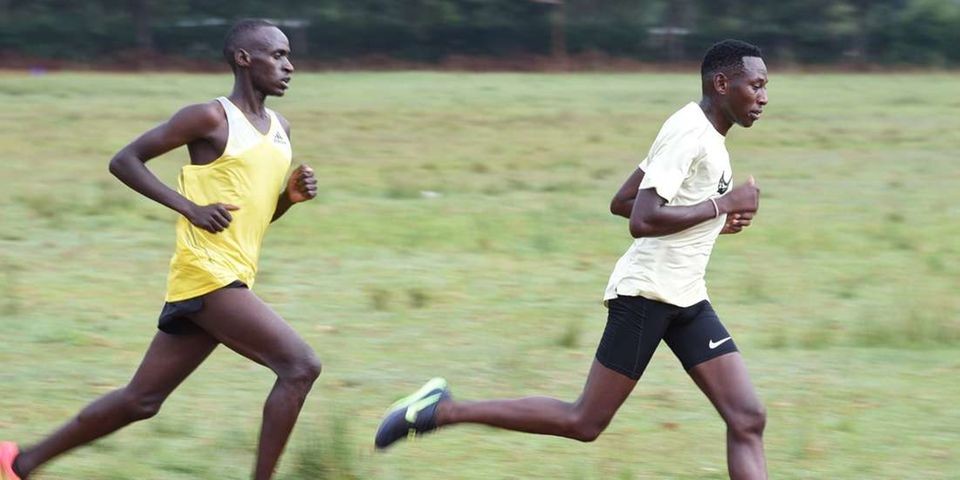
Kipruto, who was due to start his season at the Monaco Diamond League, was forced to skip the race after contracting the deadly virus.
The Mosoriot-based Kipruto is focusing on his training as he looks forward to a better season after missing his first race.

“I’m happy because I have now been given clean bill of health after numerous tests which all turned negative. I have started training while following protocols from the Ministry of Health. My target is to improve my performance,” said Kipruto.
Kipruto will be waiting to get invitation from the Diamond League races where he hopes to lower the world record currently held by Kenyan-born Qatari Saif Saaeed Shaheen formerly known as Stephen Cherono of 7:53.63.
“My target this season is to run a world record time. With good preparations, I know it will be possible. The record has been there for a very long time and I need to bring it home,” he said.
He had been cleared to run.
Kipruto was among the 15 athletes who had been cleared to compete in Monaco Diamond League in France after getting special dispensation visas to travel to the Principality.
He said when he received the results, he went into isolation at his home where health officials have been visiting him to offer him guidance on how to manage the virus.
“It has been hectic for me but I’m happy because I didn’t have any complications until I was declared fit to go on with my life. I have been training alone jumping the barriers which I had created at home before.
“I watched the Monaco race on television and I was impressed with how the athletes are still strong despite taking a break due to the virus which disrupted sporting events across the globe,” said Kipruto.
Athletes invited to compete abroad are supposed to undergo mandatory tests for Covid-19 72 hours before competing in any race.
Kipruto is also eyeing the Kip Keino Classic which shall be held on October 3 at Nyayo National Stadium in Nairobi.
(08/31/2020) ⚡AMPby Bernard Rotich
The World Athletics Half Marathon Championships Gdynia 2020 mass race cancelled
The Local Organizing Committee of the World Athletics Half Marathon Championships Gdynia 2020 has today announced that Covid-19-related health and safety restrictions have forced the cancellation of the mass participation race that was to accompany the elite championships on October 17.
A record number of more than 27,000 amateur runners had registered to compete on the streets of Gdynia. Instead they will be offered the opportunity to join a virtual competition with the goal of participating in the world’s largest individual half marathon.
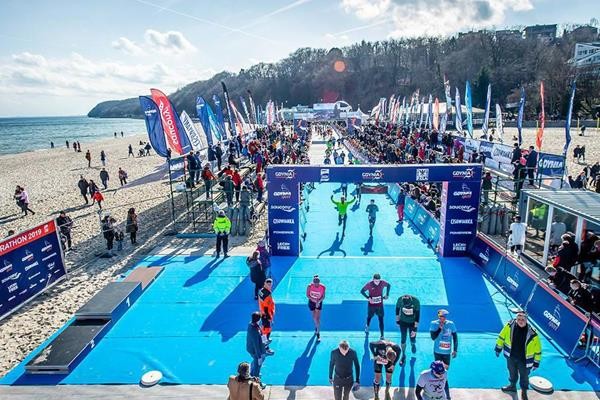
The #AllYouNeedIsRunning project has already been endorsed by running and athletics greats including Eilish McColgan, Stefano Baldini, Marek Plawgo, Robert Korzeniowski and the President of World Athletics, Sebastian Coe.
Since the beginning of March, when the event was postponed from 29 March to 17 October, intensive discussions and efforts have been made to find a solution that would enable the Local Organizing Committee to hold the event in its original format, featuring both the championships race and the record-breaking mass race.
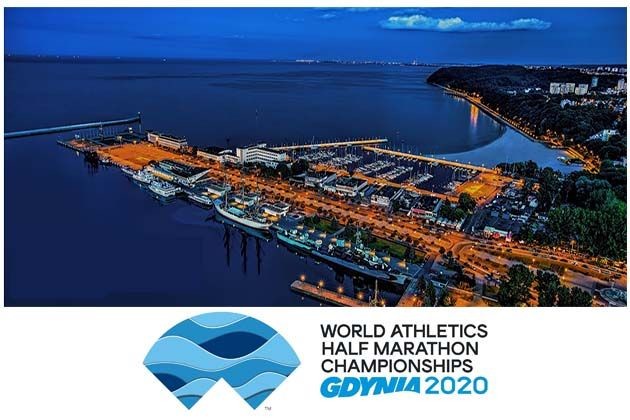
A comprehensive document outlining modifications to the event setup and extra safety procedures was created and presented to the Polish government and relevant healthcare and sanitary bodies.
Unfortunately, holding a mass race for thousands of runners proved to be impossible in the current circumstances.
World Athletics and the LOC continue to prepare for the elite championships and will make a final decision on their future as soon as possible.
“Surely, that’s not how we imagined the outcome of three years of preparations to this event,” said Michal Drelich, head of the LOC. “I would like to thank the entire team and our partners from World Athletics and the host city of Gdynia for their incredible effort to develop alternative event formats, race courses and new procedures that were supposed to make both the elite run and the mass race happen in the safest possible way, with massively enhanced social distance and minimized touchpoints between athletes, staff and volunteers.
“However, under the current restrictions regarding mass participation events and seeing no perspective for these to be released soon, we are forced to cancel the mass race. We have postponed this decision as long as possible but now it is time to accept the reality. Our efforts are now focused on the virtual mass race and doing whatever it takes to stage the elite competition.”
Registered mass race runners are invited to join the virtual competition with their starting kits – including bib number, official Asics t-shirt, official event backpack and the unique finisher medal – planned to be shipped to them successively in the coming weeks.
The virtual race is also open for new running enthusiasts from all over the world. You only have to create your account on the newly launched platform at www.AllYouNeedIsRunning.com.
Joining the race is free of charge but you can purchase a medal, t-shirt or other merchandise items as an option. Additionally, a loyalty program and three months of complimentary subscription to TIDAL and Runkeeper Premium are offered to registered runners.
Drelich said that despite the difficult and frustrating situation, organizers want to show that #AllYouNeedIsRunning.
“We are runners ourselves,” Drelich said. “We miss spectacular events which not only give us motivation but also allow us to meet friends and deliver all those positive emotions. In the recent months, it was often going out for running session that made us refresh our brains and focus on our goals. We truly hope that 17 October, despite all the adversity, will be a great exhibition of love for running. Wherever you are on that day, let’s run together.
(08/31/2020) ⚡AMPby World Athletics
World Half Marathon Championships
The Chinese city of Yangzhou will host the 2022 World Athletics Half Marathon Championships. China, one of the fastest-growing markets in road running, had 24 World Athletics Label road races in 2019, more than any other country. It hosted the World Half Marathon Championships in 2010 in Nanning and will stage the World Athletics Indoor Championships in Nanjing in 2021. ...
more...Stop Counting Your Running Mileage
It’s the one training metric virtually all runners track, but running scientists think we can do better
Even in this brave new world, with wearable technology that tracks and shares our every twitch and palpitation, the fundamental unit of training data for runners is still very old-school: How many miles did you run last week? In fact, as a new opinion piece in the Journal of Orthopaedic & Sports Physical Therapy notes, the rise of GPS watches has only strengthened our obsession with tracking mileage. And that, the article’s authors argue, is a problem—or at least a missed opportunity.
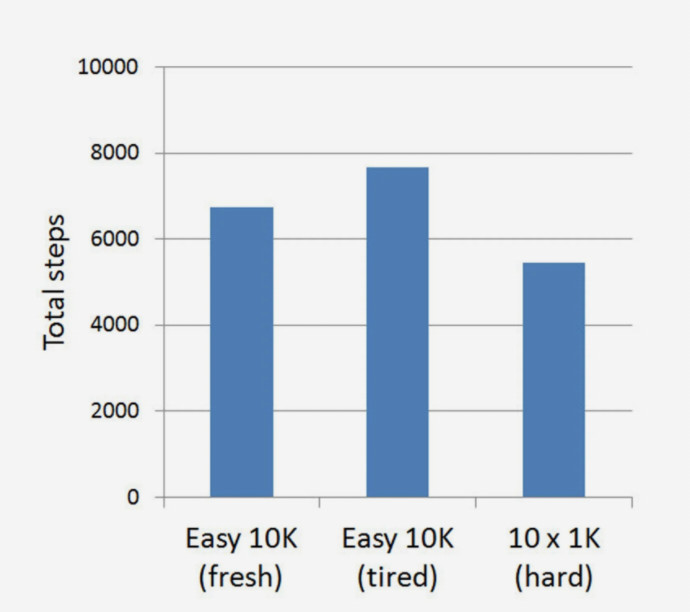
The authors have plenty of cred in the world of running science. Lead author Max Paquette is a biomechanist at the University of Memphis (and the husband, for what it’s worth, of 15:10 5,000-meter runner Lauren Paquette). Chris Napier and Rich Willy are highly respected physical therapists and researchers at the University of British Columbia and the University of Montana. And Trent Stellingwerff is a physiologist and coach who works with the Canadian Olympic team (and the husband of two-time 1,500-meter Olympian Hilary Stellingwerff). They’ve all tracked plenty of mileage totals in their time. But they think it’s time to move on.
The first part of their paper explains why relying on mileage alone to track training is a problem. Their basic point is fairly obvious: the distance you cover often isn’t a good proxy for how much stress you’re putting on your body. An easy 10K trail run is very different from 10 x 1,000 meters all-out on the track in spikes. And, more subtly, an easy 10K run is harder on your body if you’re exhausted from previous training than if you’re fresh.
There are two reasons to care about getting an accurate sense of the training stress you’re incurring. One is that it will determine how tired you are (in the short term) and how much fitter you get (in the long term). Getting the balance between fatigue and fitness right determines how fast you’ll race. The other is that it will determine, or at least strongly influence, your risk of injury.
On the first question, there’s a fairly long history of research into figuring out a better way of quantifying the balance between fitness and fatigue. What you need is something that takes into account how hard you run, not just how far. There are different ways of measuring “hard,” either externally (pace) or internally (heart rate, perceived effort). Either way, if you multiply duration by intensity for each day’s session, you get a measure of “training impulse” that carries a lot more information than mileage alone. When I covered Nike’s Breaking2 project, the scientific team used a method like this to analyze the training of the three runners. (For kicks, they analyzed mine too, and concluded that I needed to train harder, because I wasn’t building up much cumulative fatigue. They were right.)
Cyclists have already taken this information to heart, in part because power meters make it easy to quantify exactly how hard you’re pushing at any given moment. Software like TrainingPeaks can also calculate equivalent “Training Stress Scores” for running, based on pace data. In my circles, no one asks what your training stress was last week, but the idea is definitely out there. You can do a simple, tech-free version yourself by multiplying the duration of your run (in minutes) by the session’s average perceived effort (on a scale of 1 to 10), and totaling the points you accumulate each week. That would give you a better sense of how hard the week was, in a physiological sense, than mileage alone.
Having said all that, it’s the second problem—injury risk—that makes the new paper most interesting. Most studies that have looked for links between training patterns and injuries have used mileage as the sole measure of training load. Some also look at running pace. What’s missing once again is a combination of those two, but in this case it’s trickier to figure out what that combination should be.
The paper includes a fascinating table that compares three different scenarios that each involve 10K of running: an easy run on a soft trail in cushioned shoes when fresh; a similar easy run when tired; and a track session of 10 x 1,000 meters in rigid spikes. The paces represent an elite runner: 6:00 miles for the fresh easy run, just under 7:00 miles for the tired run, and 2:45 per kilometer (4:25/mile pace) for the intervals. For the tired run, the runner’s average cadence drops from 180 to 177, but the total time is greater, meaning that he takes more steps in total. For the track session, cadence jumps to 198, but the time elapsed is way less. Here’s how the total number of steps compares:
If you care about injury risk, this is a big difference! But there are more variables to consider. The faster you run, the harder your foot smacks into the ground: the track session has a peak vertical ground reaction force of 3.3 bodyweights, compared to just 3.1 for the fresh easy run and 2.9 for the tired easy run. That difference adds up with each step. Similarly, the peak Achilles tendon force is 11.5 bodyweights on the track, compared to 10.0 for the fresh run and 9.1 for the tired run.
At this point, it would be cool to give a formula for how you combine these and other variables to give you an estimate of how likely you are to blow your Achilles. Unfortunately, no one knows the answers. There have been some early attempts: a study published a few years ago at the University of California, Davis, had nine college runners wear a hip-mounted accelerometer in order to calculate the cumulative ground reaction forces that they experienced with each stride over a 60-day period. With such a small sample, it’s hard to draw any conclusions—but the three runners who ended up getting injured did, on average, accumulate more ground reaction force per run.
What Paquette and his colleagues are really calling for is more research like the UC Davis study. Wearable tech has advanced so much in recent years that it’s possible to get detailed biomechanical information from ordinary consumer devices. And with further development, these devices may be able to narrow it down and estimate the load on individual parts of the body like shin bones and Achilles tendons. Somewhere in that mountain of data, there should be one or more measures of cumulative training load that beat mileage as a predictor of injury risk.
Will this approach usher in a new era of perfectly predictable training? Probably not. “Even with the best monitoring approaches,” the authors acknowledge, “differences in individual runners’ tissue load capacity will always make injury prediction elusive.” Predicting race performance will be equally challenging, I suspect. Better data will allow us to improve our guesses, but some fundamental randomness and uncertainty will remain.
That’s not the real reason we still focus on mileage, though. Regardless of whatever superior alternatives scientists come up with, mileage will endure because it has tangible physical meaning both inside and outside the narrow world of running obsessives. The daily struggle is transmogrified into a single number that conveys exactly how far your feet have carried you in the past week, and that you can casually mention (modestly rounding down, of course) in response to the inevitable question from a co-worker or relative. In a pursuit whose meaning and purpose is abstract at the best of times, that’s not nothing.
(08/31/2020) ⚡AMPby Outside Online
In a Naked Pandemic Race, You Can Leave Your Hat On
When we can’t go outside without covering our faces, there’s a special appeal in the opportunity to uncover everything else.
In a lot of ways, the 5K I ran on Saturday was like any other race: The tall, skinny guys zipped out front, fast. Spectators rang cowbells. I heard the “Rocky” theme twice along the course.
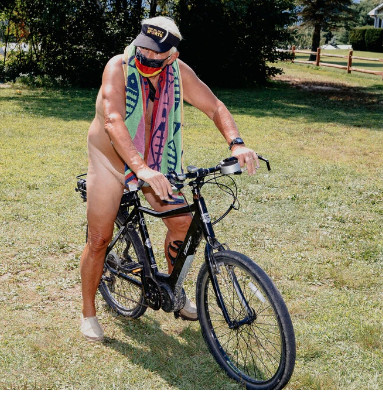
Except the spectators were naked. And I was, too.
That’s because the race was the Bouncing Buns Clothing Optional 5K, held at the Sunny Rest Resort, a nudist resort in Palmerton, Pa.
“Not enough of us do things outside the box anymore, particularly as we get older,” said Ron Horn, race director and co-owner of Pretzel City Sports, which put on the race.

I’ve run a handful of Pretzel City’s clothed (or as naked runners call them, “textile”) races, but the nude events never appealed to me, not when there were a zillion other races to run.
But this year, it caught my attention in part because almost all other races have been canceled because of the coronavirus. In this pandemic season of covering our faces in public, why not uncover everything else? What a fun way to experience some freedom in a time of pressing fear, grief, restrictions and disappointments.
But I hesitated. I’ve been to “toptional” pools in Las Vegas, so nudity wasn’t that much of an obstacle. But running naked? It seemed so — uncomfortable.
And yet: I kept getting the emails about this race, in a year flooded with bad news that had come very close to home. In March, four members of my family were sick with Covid-19. In June, my brother was in the hospital for weeks after a driver struck him while he was on a bike ride.
I’ve spent five months trying to find glimpses of joy in small, simple things, like the sight of a bird on the tree I planted last year, or the feel of my dog’s very soft ear. But the idea of a big, outlandish thing that might bump me out of my gloom had a certain draw.
When a friend who lives in upstate New York said she was 90 percent willing to commit to making the trip to participate in this race, I thought maybe I should go, if for nothing else than to see her.
“What else do you have to do?” she asked.
Sunny Rest was founded as a nudist resort in 1945 and, except for the lack of clothing, looks like a lot of other campgrounds, with mobile homes, cabins, tents and RVs. There’s a pool, spa, volleyball and tennis courts, hot tub, and hiking and biking trails. Most people go about their daily activities wearing nothing but shoes or sandals, maybe a hat. It’s private property, so laws against public nudity are not an issue. Pretzel City has been putting on races there for 13 years.
The events are meant to be fun, but the race organizers recognize that there is something of a taboo around nudity, so it anonymizes race results when posting them online, listing participants only by first name, last initial and home state. Knowing the privacy concerns, Pretzel City’s race director announced before the race that a photographer and I would be covering the event, and that we would include only those runners who consented to being photographed and interviewed.
Several runners were eager to talk to me, including Bruce Freeburger, 69, who drove from Detroit to run this race. He operates the website naked5k.com. Its slogan: “I did wear shoes!”
“It’s not ‘Girls Gone Wild,’” he said of naked runs. He believes that those who run nude tend to be “unselfish, and more sportsmanlike.”
As soon as I pulled into Sunny Rest (after showing my ID and having the license plate of my car recorded by security), I saw a man in a wide-brimmed sun hat and no pants walking toward the pool.
By the time I parked near the race start, I felt prim. Some runners were clothed, but most were in some state of undress. A woman breastfed her child while she checked in. A man waited to run in just sneakers and a Viking helmet — he hung his mask from one of the horns when he wasn’t near other people. I saw my friend, already stripped down. She fit right in. I gave her an elbow bump and took off my shorts. It didn’t feel weird, at all.
To prepare for the experience, I’d tried running completely naked on the treadmill in my basement, and determined that going braless was impractical for me. So I took the Donald Duck approach and wore a hat and sports bra but no bottoms. When I checked in, I was handed a race bib and a T-shirt, but then a staffer — naked except for mask and gloves — wrote my race number with a marker on my leg. Where was I going to pin a bib anyway?
I lined up near the start, a body in a sea of 115 bodies, ages 9 through 78, all standing six feet apart. The energy felt zippier here than at a normal race — almost giddy. While most of the runners were from Pennsylvania, only a handful were also members of the Sunny Rest Resort. That meant almost everyone had traveled to this place — from places as far away as Ohio, Delaware and West Virginia — for the opportunity to do something unusual.
Runners were required to wear masks to pick up their packets, and asked to wear them when near other people. Pretzel City also moved the start and finish area away from the more crowded part of the resort toward the camping sites, so we had more space to spread out. Over a bullhorn, Horn asked us to put our arms straight out by our sides and said, “If you are touching someone you are not sleeping with, you are standing too close.”
After the initial newness of being aware of my butt bouncing around, everything felt pretty much the same as in a clothed race. We started at 10:15 a.m., and I’m usually done running by 8 a.m. in the summer, so it was hot. I was grateful for my hat, and the sunblock and anti-chafing balm I’d applied all over my body. By the first mile, I was coated in sweat.
“I don’t have a shirt to wipe off my face!” another runner shouted. The more experienced naked runners had thought to carry little towels.
Part of the course was an out and back, so I saw the leaders coming back as I went out. With a full view of their entire, naked forms in motion, I felt appreciation, in the same way I’d look at a nice painting.
I didn’t worry about anyone else appreciating my body — from the naked ladies cheering from their trailer’s outdoor bar to the gentleman doing naked squats on his deck. The race didn’t feel sexualized at all, and I didn’t worry about which parts of my body were not perfectly flat and smooth, about what parts of my body shook with every step. I was just another body in motion.
I was feeling what many runners had told me before the start of the race — that this was freeing. Richard Whalen, 43, of Folcroft, Pa., said that for him it’s also a celebration of who he is now. He’s a recovering alcoholic who took up running after he stopped being too hung over to run in the morning. “There’s a sense of freedom here to show off your beautiful body.”
That’s also why Jim and Susan Fiordeliso of Yardley, Pa., came too. Last year, Mr. Fiordeliso, 53, had heart surgery, after which they vowed to take better care of their bodies. That included moving to a plant-based diet, as well as lots of walking and running. They’ve lost 210 pounds between them. It was their first time at a nude race, and they treated it as a celebration of their new lives. “I loved it and I would do it again,” he said.
And then there’s just the fun of it. “I’m not a nudist type. I’m not an exhibitionist type,” said Michael Lyons, 35, of Douglassville, Pa., who has done both naked road races and bike rides. “I’m just a goofball who likes to do fun things.”
I finished in 30 minutes, 26 seconds, good enough for fifth place in my category. My award: a medal that I wore at around my neck with nothing but my sandals, bandanna and a fresh coating of sun block.
Jen A. Miller, the author of “Running: A Love Story,” writes The Times’s weekly running newsletter.
(08/30/2020) ⚡AMPcelebrities who love running
We runners love to find people in our gang. Whether it's swapping training plan advice or stalking Strava stats, our running pals are some of our best. But sometimes, we find inspiration in unlikely places - the celebs we follow on Instagram to start.
We've already rounded up these celebrities you didn't know were marathon runners, but of course, you don't need to run a marathon to be a runner, so we've found this list of celebs who have spoken about their love of putting one foot in front of another.

Meghan Markle Speaking to Shape years before becoming a royal, Meghan explained that she gets a lot more from running than just the fitness side of it. 'I love running but i think you have to find a work out routine that really speaks to you beyond trying to get goals for your body. For me, running, I need it as much for my head and to clear my head as I d for keeping in shape.'
Ellie Goulding The 'Starry Eyes' singer has often spoken about her love of running in interviews, recently sharing her 'run for heroes' 5K time of 23 minutes! Goulding completed the Royal Parks Half Marathon in 2014, finishing with a time of 1 hour 41 minutes.

Bear Grylls-The Man vs. Wild host had to run as part of his military training, and after taking a short break after he got out, he started up again to get in shape for TV.
'Now I really enjoy running,' he told Runner’s World. 'We live in a pretty hilly area in North Wales, and I run three times a week for about 40 minutes as part of my training.'
Jennifer Aniston The Friend's star is known to mix up her workouts to stay in shape. Aniston has been spotted out running over the years, but her trainer told Women's Health she also loves spin classes and boxing for cardio.
Jennifer Lawrence Jennifer Lawrence is said to incorporate running into her Hunger Games training, however in an interview in 2012, she admitted she was worried about people critiquing her running style. 'I’m most nervous about everybody making fun of the way I run' Lawrence said, 'I do, like, karate hands. Instead of running with my hands closed together like a normal person. It’s like I’m trying to be aerodynamic or something, so my hands are straight like razors'.
Mark Zuckerberg In 2016, the Facebook founder did a 'year of running challenge', where he attempted to run 365 miles in a year to encourage other Facebook members to get moving. Zuckerberg finished the challenge five months early.
Kate Middleton The Duchess of Cambridge is said to be a runner. In a 2018 interview with Bryony Gordon, the Duchess revealed she would never be allowed to take part in a large event like the London Marathon due to the security risk.
Gordon Ramsay The celebrity chef is a well-known runner, with an impressive marathon PB of 3:30:37.
Eva Longoria In an interview with Health the Desperate Housewives star said, 'I'm a runner, first of all. I run a lot. But I also do SoulCycle, Pilates, yoga. I usually mix it up.
Victoria Beckham Victoria Beckham's workout regime is said to include a daily 5K. Speaking to Vogue Australia, Posh Spice herself said, 'I go for a three mile run every morning and I work out for an hour with a PT, which gives me just enough time to get to the kitchen to puree Romeo's avocados'.
Reese Witherspoon The Big Little Lies star is often spotted on daily jogs with friends and her husband around LA.
Boris Johnson The Prime Minister himself recently spoke about his running regime, saying he has 'lost nearly a stone' running with his dog. The PM is running to lose weight after admitting he was 'too fat' when he caught coronavirus earlier this year.
Chris Evans Radio presenter Chris Evans has completed the London Marathon a total of five times, with a PB of 4:41:06 was in the 2017 race.
Eminem After Eminem got sober, he turned to running, regularly logging 17 miles on the treadmill. 'It gave me a natural endorphin high, but it also helped me sleep, so it was perfect. It’s easy to understand how people replace addiction with exercise,' he told Men’s Journal.
Will Smith On November 18, Will Smith knocked something else off his bucket list: he finished the Havana Half Marathon, also known as the Marabana.
According to the official race results, the actor completed the race—which went through the streets of Cuba’s capital—with a net time of 2:29:04.
Richard Branson Sir Richard Branson ran the London Marathon in 5:02:24 in 2010 and loved it so much he signed up to be lead sponsor the following year.
(08/30/2020) ⚡AMPby Runner’s World
Why a Trail Runner Was Trying to Help With a Wildfire in Arizona
Don’t fight fires with running gear. Let the pros handle it.
Trevor Murphy rolled out of bed for his run around 8 a.m. on August 22. His first 100 miler, the Javelina Jundred, was nearing, so he got up for some early morning miles in the McDowell Mountains of Arizona.

When driving there, he hadn’t heard on the news that a series of lightning strikes had ignited a few wildfires during the night. When he arrived to a closed gate at the trailhead, he assumed it was because of the park still being closed in the morning.
He parked before the gate on the side of the road, and took off for 20 miles. About two miles in, he saw a glow in the distance that made it clear a fire had started. At five miles, he was right on top of a small section of brush that was on fire, burning in the morning air. He immediately called 911.
The fire was burning on one side of the trail, having stopped because of the fire line the trail created. Still, Murphy feared it might cross and enter the nature preserve on the other side. He decided to act.
“The trail was the only thing stopping the fire from moving to the nature preserve; it was the only chance of stopping it,” Murphy told Runner’s World. “It would’ve been pointless to try and stop the fire if there wasn’t already a fire break built-in. I was just trying to make sure it held. I was working on the trail for hours at first, trying to widen it.”
Doing what he could with only the his running gear on him, he slowly chipped away.
“I stayed on the perimeter of the fire and I worked on stomping out the flames that were small enough to do that with my feet,’” Murphy said. “I started doing that hours before the TV helicopter arrived. I was out there maybe two to two and half hours before that.”
When he figured he could do no more, Murphy ran out of Fort McDowell Mountain Regional Park and went home. That wasn’t without achieving minor internet fame when a live TV chopper captured him stomping out smaller fires. His actions in the viral video have received mixed review since it happened and has spread around the internet.
“Honestly, I didn’t think twice about it,” Murphy said. “My adrenaline was going, and I never felt like my life was in danger. A lot of people think I went up there with the intention of fighting the fire. I just happened to run into it on my run.”
The fire itself in the McDowell Mountains has remained, but is 90 percent contained at this point thanks to local fire-rescue efforts. The fire has burned more than 615 acres.
Though this will be a run that Murphy will likely never forget, Arizona Department of Forestry and Fire Management Officer John Truett recommends a different approach if you ever encounter a similar situation.
“This was careless behavior and frankly, not logical,” Truett told Runner’s World. “Most people who would find themselves in a situation like this would have turned around. Fire managers on the McDowell fire were actively monitoring the fire and had strategies and tactics in place on how to suppress the fire safely. His actions simply put his life and those who would be required to save him in peril. His actions were irresponsible and so is promoting this type of behavior.”
In addition, Truett warned that aircraft could’ve been doing bucket work or retardant drops, and the fire could’ve increased in size, putting anyone nearby in potential danger.
(08/30/2020) ⚡AMPby Runner’s World
7 ways to run faster, according to expert running coaches
Achieving a faster pace can be a thrill for runners, and it also happens to be great for your overall health.
"We get stronger, faster, fitter, and leaner when we introduce a new stress, like speed training workouts, to our body," says Elizabeth Corkum, a Road Runners Club of America certified running coach.
Whether you're looking to increase your pace for race day or just seeking an extra boost for your workouts, here are seven tips on how to bump up your speed.
1. Add tempo runs
Tempo runs are 10 to 45 minute runs at a steady pace, according to Corkum. These workouts can help runners develop discipline by controlling their speed and help their bodies learn how to handle stress.
These should be done at a controlled pace, meaning you should be able to maintain the same pace throughout your run. The first few minutes of the run should feel easy and you might even feel like you are holding back a bit.
However, by the middle to end of the run you should start to feel uncomfortable. "At the end of your tempo run is when it will really start to feel like a speed workout," says Corkum.
Tempo runs build strength and speed because they push you to reach your anaerobic threshold. Your anaerobic threshold is the point where your body produces lactic acid — a byproduct of working out. When lactic acid builds up in your muscles, it makes your legs feel heavy and the run becomes more difficult.
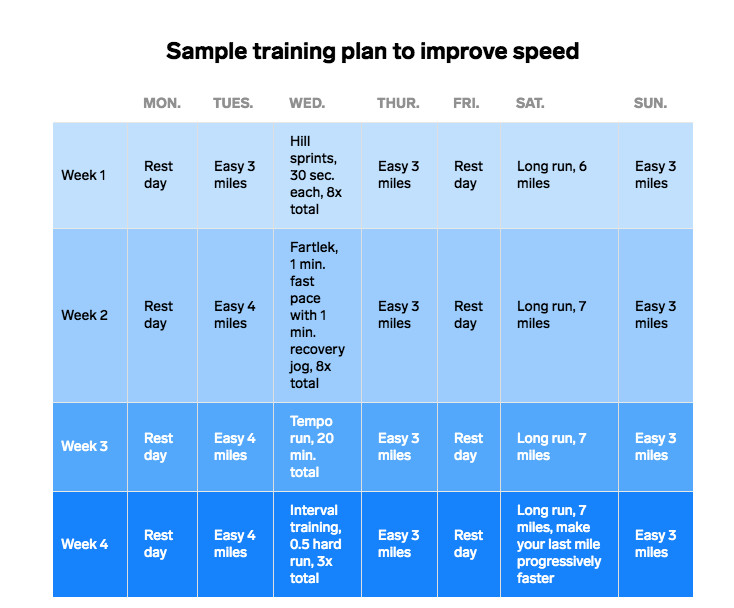
So, the sooner you reach your anaerobic threshold, the sooner you'll burn out, and the harder it will be to finish — let alone run faster. That's where tempo runs come in, because they train you to run longer and faster before hitting that threshold.
"Increasing this threshold by training smart allows you to run faster for longer periods of time before that feeling of fatigue or lactic acid takes over,"says Audrey Springer, a Road Runners Club of America certified running coach. "An athlete could do this as a workout for a duration of 15 minutes and build all the way up to an hour or more depending on the race they are training for."
Compared to sprints and hill runs, tempo runs are lower intensity, longer workouts. The pace for tempo runs will be faster than an easy run or jog, but still slower than a sprint like a 5k or 10k pace. One tool that Springer uses is Jack Daniels' VDOT Running Calculator to help her runners set a tempo run pace.
Springer says there are three different types of tempo runs.
Lactate threshold: This is where the athlete will run at a pace they could ideally hold for one hour. If the run is 30 minutes they should feel as if they are pushing hard but they could hold it for another 30 minutes if they were racing.
Marathon/half marathon pace: This type of tempo run should be run at the pace you plan to achieve on race day. This will be slower than the lactate threshold pace.
Progressive: This is also often referred to as negative split run. During this run you will gradually increase speed so your last mile will be fastest. These types of runs are great for establishing a pace, building stamina, and developing mental toughness to help you finish your runs strong.
2. Start weight training
Weight lifting, or strength training, can help you run faster, improve your form, and avoid injuries.
Body weight and plyometric movements that are explosive, such as jumping squats or lunges, can be great for working on speed and power in sprints. "The explosive nature of these movements teaches muscles to contract at a faster and more efficient rate," says Corkum.
Meanwhile, lifting heavy weights with barbells, dumbbells, or kettlebells, can help distance runners maintain power, good form, and efficiency during longer runs such as a 10k or half marathon. However, if you are just starting to weight train, Springer recommends using just body weight at first — like with resistance bands or push-ups — in order to perfect form and avoid injury.
Many weight training movements can also build core muscles. "The core keeps your trunk stabilized, improves your posture and running form, and allows you to generate more power running faster while using less energy," says Springer.
A 2017 review published in the journal Sports Medicine found that adding strength training to a running routine 2 to 3 times a week had a strong, positive effect on running performance. Strength training improved performance in time trials by 3% to 5% in those logging around one to two miles and 2% to 4% in those running around three to six miles.
Runners should spend equal amounts of time building upper body and lower body strength. "It is just as important because the upper body counters the lower body in the running motion," says Corkum.
For building speed, Corkum recommends weight training two to three times a week on non-consecutive days. If you weight train after a run, she suggests waiting at least four to six hours to prevent soreness.
3. Introduce interval training
Interval training is a type of running workout where you alternate between short, intense bursts of running and a brief recovery. The goal of interval training is to maintain the same speed on your first interval as your last one. A 2016 medical review published in The Journal of Physiology found that running sprint intervals builds muscle as well as aerobic endurance.
Another 2018 study published in the Journal of Strength and Conditioning Research assessed 16 trail runners that added interval training to their routine. Each runner completed six interval training sessions over the course of two weeks with two days of recovery between each session. After the training program, the runners were able to run an average of 3.6 more meters in 30 seconds. The study also found that participants increased their speed by an average of 6% in a 3000 meter run.
"Once you begin to incorporate interval training into your workout plan, you will notice your longer runs will become easier and faster," says Corkum.
When you first start interval training, Springer suggests sticking to once a week. The bursts in interval training can be measured by time or distance. Here are two types of interval training workouts that Corkum recommends for running on a track:
Sprint the 100m straightaways on a track and walk or lightly jog the 100m curves. Repeat this four times around the track, so you end up with eight total sprints.
Run for two minutes at 85% effort then take a one minute recovery. Repeat this four times.
4. Practice fartleks
Fartlek is a Swedish word meaning "speed play." A fartlek run consists of alternating between speed and recovery runs. They can last 20 minutes or longer depending on the runner.
Coupling periods of moderate to high intensity running with a slower pace will put stress on both your aerobic and anaerobic treshhold. This will help you build both speed and endurance.
While fartleks are similar to interval training, they are done at an easier effort and slower pace over a longer period of time.
If you are a competitive runner, you can tap into this speed play during a race to help you pass another runner. "Fartleks are all about pushing your pace and effort and figuring out what your limits are," says Corkum.
5. Run hills
Both coaches agree that running hills is a great way to introduce speed training into your running routine. "It is a great stepping stone from aerobic running to sprint repeats on a track," says Corkum. Uphill training will help you become a faster runner and also increase your VO2 max, making you a more efficient runner. VO2 max is a measure of how much oxygen a person can utilize during intense exercise. "The better your body can be at utilizing oxygen, the more energy you'll be able to output or the faster and longer you'll be able to run, " says Springer.
6. Don't forget to take breaks
Oftentimes, runners will skip recovery days out of fear they're losing progress if not constantly running. "What you actually end up doing when you skip recovery days is slowly digging your own grave in terms of progress," says Corkum.
If you moderately work out everyday and don't find yourself improving, Corkum says it's probably because you aren't resting: "A golden rule in running is to make the hard days hard and the easy days easy."
The reason you're sore the day after a workout is because training causes microtears in your muscles. When you rest, those muscle fibers rebuild, slightly stronger than before. Without recovery days, your body is unable to rebuild itself.
According to Corkum, here are some signs you may be pushing too hard and skimping on recovery:
7. Stay consistent
It's important to have a strong aerobic foundation before you begin incorporating speed training into your workout routine. Corkum recommends that new runners or runners that have taken extended time off spend at least four weeks building up their endurance before beginning speed workouts.
"Those easy runs where you can always run further and faster are really important for establishing a strong foundation for running," says Corkum.
Building this endurance will also help you establish a routine to become a more consistent runner, which is important for building speed. "Remember that you get better at what you do often, not occasionally," says Springer, "while rest days are very important so is building a routine and staying consistent."
(08/30/2020) ⚡AMP12-hour treadmill race sees male winner run 150K, top female 120K
Adam Holland and Bridget Dawes put their treadmills to good use on Friday to win the final event of the Personal Peak Summer Race Series
The final event of the Personal Peak Summer Race Series (SRS) was held on August 22, with American Bridget Dawes winning the women’s race and Adam Holland of the U.K. taking the men’s crown. The virtual race was 12 hours long and participants ran on their treadmills, racing at the same time. Dawes ran 121K, smashing her competition and beating the next-best finisher by 18K. The men’s race was a much tighter affair, with Holland eking out a win over American Danny Domres, running 151K to Domres’s 149K. Holland won the four-race series, once again edging Domres out for the top spot. After only competing in three of the four races, Dawes finished in 18th overall (despite winning the three events she entered).

Personal Peak (the same company that helped organize the Quarantine Backyard Ultra) started the SRS on May 30 with a 20-minute race and wrapped the series up on August 22 with the brutal 12-hour event. There were also 45-minute and three-hour races in June and July. Each race was run on the treadmill, and every one was a battle to see who could run the farthest. The male and female winners of each event earned 100 points. Everyone else was awarded points based on how far back they finished from the leaders. Keeley Milne won on the women’s side in Race One, and Domres took the men’s win. Dawes didn’t race the 20-minute event.
Next up was the 45-minute race, which Dawes won. Domres got his second win in a row on the men’s side, boosting his points to a perfect 200. Holland wasn’t too far behind, and he improved his points total to 190.7 after two races. The next race, which lasted three hours, was when Holland ruined Domres’s win streak, and in the women’s race, Dawes won once again. The last event, the 12-hour Race Four, would decide who would win the series for the men. Unfortunately for Dawes, even if she won (which she did), she wouldn’t win the women’s series.
Going into the 12-hour race, Domres had 291.7 points and Holland had 290.7. To win the series, Holland had to win by more than one per cent of Domres’s final distance. While the two men were thousands of kilometres apart, the real-time racing made for an exciting day of running. In the end, Holland ran 151.92K to come from behind in the series and take the crown in a thrilling finish. Domres made it tight (just as it had been the entire series), finishing just behind Holland with 149.51K. Both men were close to the 12-hour treadmill world record of 155.08K, which was set earlier this year. The final series standings saw Holland at the top with 390.7 points and Domres in second with 390.1.
Dawes won the women’s event with 120.96K, which crushed second place’s 102K and also earned her third place overall, only behind Holland and Domres in the final rankings. She went on to finish in 18th overall and as the 12th place woman in the series standings, even though she had a perfect record through the final three races. Had she competed in Race One, she likely would have not only won the women’s series, but probably finished as the top runner overall. Instead, American Michele Sollenberger was the top female finisher in the series, winning with 364.9 points.
(08/30/2020) ⚡AMPby Running Magazine









